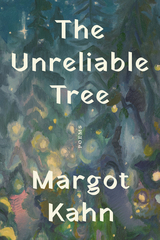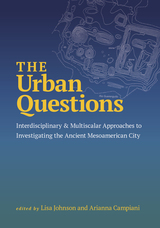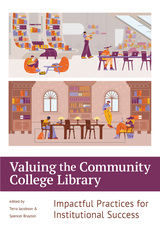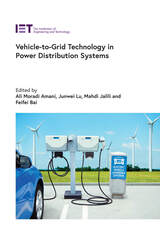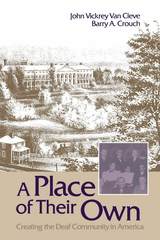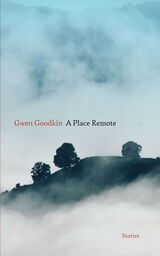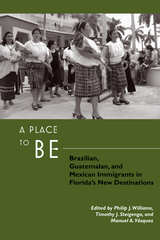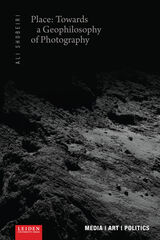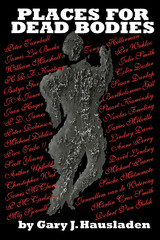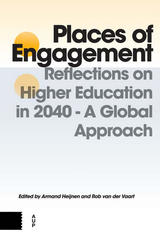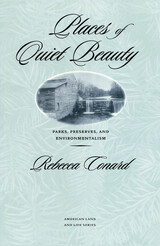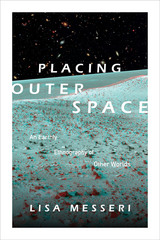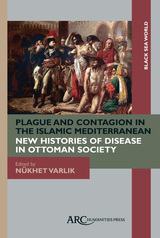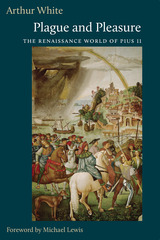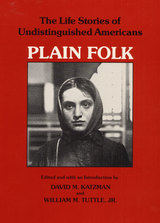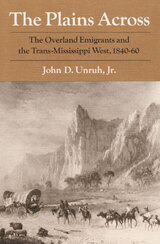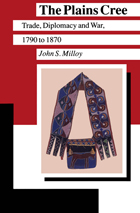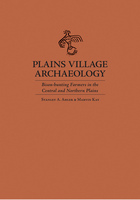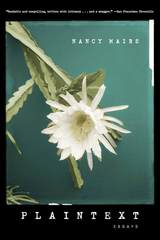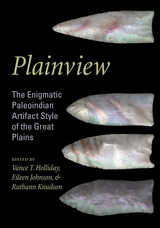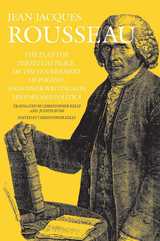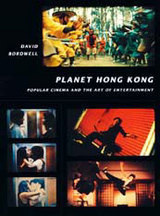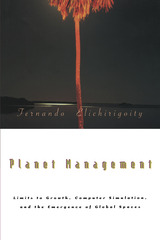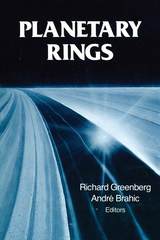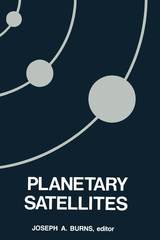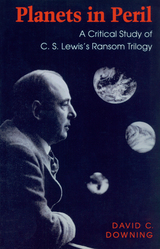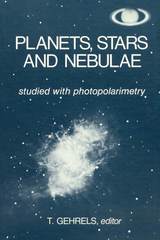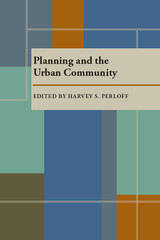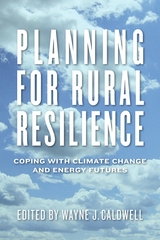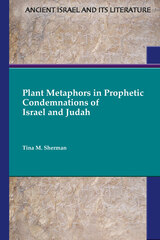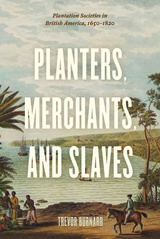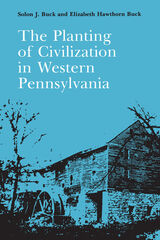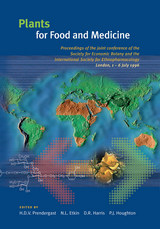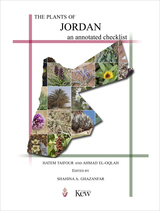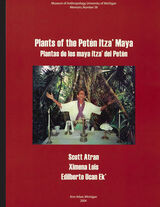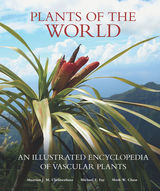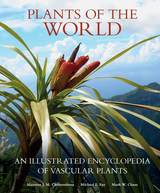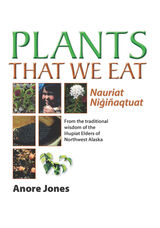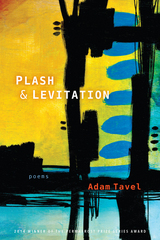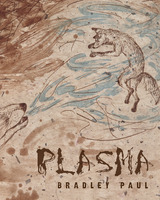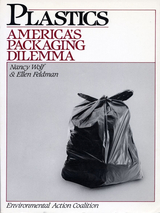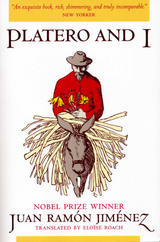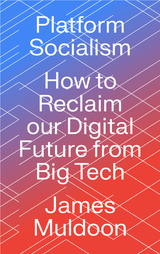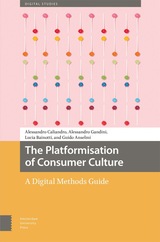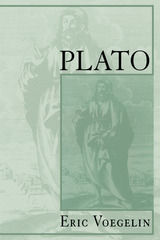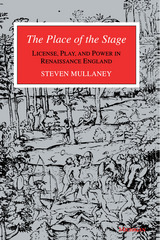 The Place of the Stage: License, Play, and Power in Renaissance England
Steven Mullaney
University of Michigan Press, 1995
In this richly textured multidisciplinary work, Steven Mullaney examines the cultural situation of popular drama in Elizabethan and Jacobean England. Relying upon a dynamic model of cultural production, Mullaney defines an original and historically grounded perspective on the emergence of popular theater and illustrates the critical, revisionary role it played in the symbolic economy of Renaissance England.
Combining literary, historical, and broadly conceived cultural analysis, he investigates, among other topics, the period's exhaustive "rehearsal" of other cultures and its discomfiting apprehensions of the self; the politics of vanished forums for ideological production such as the wonder-cabinet and the leprosarium; the cultural poetics of royal entries; and the incontinent, uncanny language of treason. As Mullaney demonstrates, Shakespearean drama relied upon and embodied the marginal license of the popular stage and, as a result, provides us with powerful readings of the shifting bases of power, license, and theatricality in Elizabethan and Jacobean England.
"A major study, not merely of selected Shakespearean plays but of the very conditions of the possibility of Renaissance drama." --Louis Montrose, University of California, San Diego
"Mullaney's rich and engaged reading of the place of Shakespeare's stage represents the texture of early modern life and its cultural productions in the vivid tradition of annales history and brilliantly exemplifies his theoretical call for a poetics of culture." -- Shakespeare Quarterly
"Mullaney marshals an impressive range of cultural representations which, taken together, will undoubtedly force a reconsideration of the semiotics of the Elizabethan stage." --Times Higher Education Supplement
". . . something of a dramatic feat in cultural studies: literary critic Mullaney calls in a cast ranging from Clifford Geertz and Pierre Bourdieu to Raymond Williams, Mary Douglas, and Michel Foucault." --Contemporary Sociology
Steven Mullaney is Associate Professor of English at the University of Michigan.
 The Place of the Symbolic: Essays on Art and Politics
Reiner Schürmann
Diaphanes, 2021 This book weaves together Reiner Schürmann’s work on art and politics, drawing on a range of the most important thinkers and poets of the twentieth century and beyond.
The Place of the Symbolic gathers Reiner Schürmann’s essays on the nexus of art and politics. In keeping with his translation of the destruction of metaphysics into an an-archic philosophy of practice, Schürmann develops a radical theory of the place of symbols, irreducible either to idealist theories of symbols or structuralist accounts of the symbolic. Symbols, Schürmann argues, may provide a bridge between ontological difference and politics. They resist being grasped metaphysically, in terms of representation. Instead, their understanding requires a specific way of existence: attending to the coming-to-presence of phenomena. As such, the understanding of symbols discloses a form of praxis that abandons ultimate grounds and opens onto the manifold.
Alongside Schürmann’s theory of symbols, the collection includes essays on the relation between metaphysics, tragedy, and technology; on the “there is” in poetry; as well as on judgment. Throughout these characteristically lucid interventions, Schürmann’s most urgent concern remains a consideration of singular and finite practices that enact a release from universal principles. Art and politics appear here as the unworking of ultimate grounds; that is, as practices attuned to a truly groundless form of life.
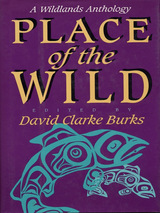 Place of the Wild: A Wildlands Anthology
Edited by David Clarke Burks
Island Press, 1994 Where and what is the place of the wild? Is the goal of preserving biodiversity across the landscape of North America compatible with contemporary Western culture? Place of the Wild brings together original essays from an exceptional array of contemporary writers and activists to present in a single volume the most current thinking on the relationship between humans and wilderness. A common thread running through the volume is the conviction that everyone concerned with the natural world -- academics and activists, philosophers and poets -- must join forces to re-establish cultural narratives and shared visions that sustain life on this planet. The contributors apply the insights of conservation biology to the importance of wilderness in the 21st century, raising questions and stimulating thought. The volume begins with a series of personal narratives that present portraits of wildlands and humans. Following those narratives are more-analytical discourses that examine conceptions and perceptions of the wild, and of the place of humanity in it. The concluding section features clear and resonant activist voices that consider the importance of wildlands, and what can be done to reconcile the needs of wilderness with the needs of human culture.
A Place of Their Own: Creating the Deaf Community in America
John Vickrey Van Cleve
Gallaudet University Press, 1989 Using original sources, this unique book focuses on the Deaf community during the 19th century. Largely through schools for the deaf, deaf people began to develop a common language and a sense of community. A Place of Their Own brings the perspective of history to bear on the reality of deafness and provides fresh and important insight into the lives of deaf Americans.
A Place on the Corner
Elijah Anderson
University of Chicago Press, 1978 "Anderson's mix of the language of sociology and the more colorful street idiom makes a complex social phenomenon accessible to a broad audience. . . . An important work."—Gerald Lee Dillingham, Contemporary Sociology
A Place on the Corner, Second Edition
Elijah Anderson
University of Chicago Press, 2004 This paperback edition of A Place on the Corner marks the twenty-fifth anniversary of Elijah Anderson's sociological classic, a study of street corner life at a local barroom/liquor store located in the ghetto on Chicago's South Side. Anderson returned night after night, month after month, to gain a deeper understanding of the people he met, vividly depicting how they created—and recreated—their local stratification system. In addition, Anderson introduces key sociological concepts, including "the extended primary group" and "being down." The new preface and appendix in this edition expand on Anderson's original work, telling the intriguing story of how he went about his field work among the men who frequented Jelly's corner.
 The Place One Is
Martha Ronk
Omnidawn, 2022 A collection from celebrated poet Martha Ronk considering the relationship between person, body, and place.
The Place One Is explores the intersection of person and place, the ways in which changes in the tangible world alter one’s vision, bodily posture, vocabulary, and concern for—to take one example—the dwindling water supply in California. The body’s position, its geometry, and the topography of the surrounding land become less and less recognizable as body and world blend together. Gravel giving way underfoot mirrors the way that words dissolve into mumbles, and the skeleton of a rusty car on the sand appears like one’s own skeleton. Ronk shows that disintegration here is disintegration there. These poems also wonder at interdependence, considering how lines intersect and continue to connect us to the sea—and to islands, lagoons, greenery, sky, and space.
In the first part of the collection, the poems focus on a rural landscape, and in the second part, they consider the overly bright urban world of Los Angeles.
A Place Remote: Stories
Gwen Goodkin
West Virginia University Press, 2020 From farm to factory, alcoholism to war wounds, friendship to betrayal, the stories in A Place Remote take us intimately into the hearts of people from all walks of life in a rural Ohio town. Whether they stay in their town or leave for distant places, these characters come to realize no one is immune to the fictions people tell others—and themselves—to survive.
In each of these ten stories, Gwen Goodkin forces her characters to face the dramatic events of life head-on—some events happen in a moment, while others are the fallout of years or decades of turning away. A boy is confronted by the cost of the family farm, an optometrist careens toward an explosive mental disaster, a mourning teen protects his sister, lifelong friends have an emotional confrontation over an heirloom, and a high school student travels to Germany to find his voice and, finally, a moment of long-awaited redemption.
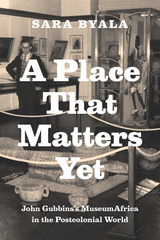 A Place That Matters Yet: John Gubbins's MuseumAfrica in the Postcolonial World
Sara Byala
University of Chicago Press, 2013 A Place That Matters Yet unearths the little-known story of Johannesburg’s MuseumAfrica, a South African history museum that embodies one of the most dynamic and fraught stories of colonialism and postcolonialism, its life spanning the eras before, during, and after apartheid. Sara Byala, in examining this story, sheds new light not only on racism and its institutionalization in South Africa but also on the problems facing any museum that is charged with navigating colonial history from a postcolonial perspective. Drawing on thirty years of personal letters and public writings by museum founder John Gubbins, Byala paints a picture of a uniquely progressive colonist, focusing on his philosophical notion of “three-dimensional thinking,” which aimed to transcend binaries and thus—quite explicitly—racism. Unfortunately, Gubbins died within weeks of the museum’s opening, and his hopes would go unrealized as the museum fell in line with emergent apartheid politics. Following the museum through this transformation and on to its 1994 reconfiguration as a post-apartheid institution, Byala showcases it as a rich—and problematic—archive of both material culture and the ideas that surround that culture, arguing for its continued importance in the establishment of a unified South Africa.
Place the Headstones Where They Belong: Thomas Neibaur, World War 1 Soldier
Sherman L. Fleek
Utah State University Press, 2008 After a long journey from Sugar City, Idaho, to France’s Argonne Forest France during World War I,
young Thomas Neibaur found himself in the core of the American Expeditionary Force’s most important offensive.
After becoming separated in advance of his unit, he, despite serious wounds, single-handedly stopped a German
counterattack at a critical hill known as Côte de Châtillon. For this remarkable feat of valor, he received the Medal of
Honor and other awards, becoming the first Idaho and first Mormon recipient of the nation’s highest combat award.
But after a heroic return and brief celebrity, his life followed a tragic downward arc, culminating in his attempt to return
his medal because, as he put it, it could not feed his family.
A Place to Be: Brazilian, Guatemalan, and Mexican Immigrants in Florida's New Destinations
Edited by Philip J. Williams, Timothy J. Steigenga, and Manuel A. Vásquez
Rutgers University Press, 2009 A Place to Be is the first book to explore migration dynamics and community settlement among Brazilian, Guatemalan, and Mexican immigrants in America's new South. The book adopts a fresh perspective to explore patterns of settlement in Florida, including the outlying areas of Miami and beyond. The stellar contributors from Latin America and the United States address the challenges faced by Latino immigrants, their cultural and religious practices, as well as the strategies used, as they move into areas experiencing recent large-scale immigration. Contributors to this volume include Patricia Fortuny Loret de Mola, Carol Girón Solórzano, Silvia Irene Palma, Lúcia Ribeiro, Mirian Solfs Lizama, José Claúdio Souza Alves, Timothy J. Steigenga, Manuel A. Vásquez, and Philip J. Williams.
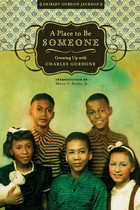 A Place to Be Someone: Growing Up with Charles Gordone
Shirley Gordon Jackson
Texas Tech University Press, 2008 Before playwright Charles Gordone (1925–1995) became a Texan, he became the first African American to win the Pulitzer Prize for Drama, for No Place to Be Somebody, in 1970. His search for a home in the West led him in 1987 to Texas A&M University, where he taught playwriting for the last nine years of his life, and to an influential role in the Cowboy Renaissance of the 1990s. Much as Mary Austin saw the West as a place without gender, Gordone regarded Texas as a place without race, where the need for neighborly connections outweighed discriminatory urges. A Place to Be Someone covers the years prior to this geographical and psychological journey, the childhood and youth that deeply informed Gordone’s pilgrimage. Growing up in Elkhart, Indiana, a “free” northern town, Charles Gordone and his family never fit completely into commonly understood racial categories. Elkhart and the world labeled them “black,” ignoring the rest of their multiracial and multiethnic heritage. Their familial experiences shaped not only their identities but also their perceptions. For Gordone, childhood was the beginning of a lifelong battle against labels, and this memoir shows many of the reasons why. Written by his younger sister Shirley, who recognized that her brother had spent his whole life coming “home” to Texas, this revealing family memoir will be welcomed by Gordone scholars and those in African American drama and literature, American studies, women’s studies, and history and by any reader young or old who seeks to understand the forces and consequences of discrimination and mental and physical abuse. The sole surviving sibling, Shirley Gordon Jackson tells this story with the intimacy and immediacy it demands.
Place: Towards a Geophilosophy of Photography
Ali Shobeiri
Leiden University Press, 2021 A new theoretical perspective on place in photography.
Drawing on theoretical insights from geography and philosophy, Ali Shobeiri examines how six fundamentals of photography—the photographer, camera, photograph, image, spectator, and genre—manifest unique, contingent notions of “place.” The geophilosophy that emerges offers a new language for understanding how “place” encapsulates everything that invites and resists location, identity, story, function, and meaning.
 The Placebo Effect: An Interdisciplinary Exploration
Anne Harrington
Harvard University Press, 1997 A mere "symbol" of medicine--the sugar pill, saline injection, doctor in a white lab coat--the placebo nonetheless sometimes produces "real" results. Medical science has largely managed its discomfort with this phenomenon by discounting the placebo effect, subtracting it as an impurity in its data through double-blind tests of new treatments and drugs. This book is committed to a different perspective--namely, that the placebo effect is a "real" entity in its own right, one that has much to teach us about how symbols, settings, and human relationships literally get under our skin.
Anne Harrington's introduction and a historical overview by Elaine Shapiro and the late Arthur Shapiro, which open the book, review the place of placebos in the history of medicine, investigate the current surge in interest in them, and probe the methodological difficulties of saying scientifically just what placebos can and cannot do. Combining individual essays with a dialogue among writers from fields as far-flung as cultural anthropology and religion, pharmacology and molecular biology, the book aims to expand our ideas about what the placebo effect is and how it should be seen and studied. At the same time, the book uses the challenges and questions raised by placebo phenomena to initiate a broader interdisciplinary discussion about our nature as cultural animals: animals with minds, brains, and bodies that somehow manage to integrate "biology" and "culture," "mechanism" and "meaning," into a seamless whole.
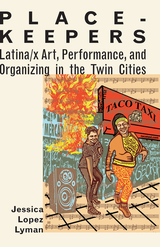 Place-Keepers: Latina/x Art, Performance, and Organizing in the Twin Cities
Jessica Lopez Lyman
University of Minnesota Press, 2025 An in-depth look at how Latina/x artists transform art into activism and reclaim space in the Twin Cities In Place-Keepers, Jessica Lopez Lyman examines how Latina/x artists in the Twin Cities navigate and challenge the region’s deep-seated racial injustices. Using “Inter-Latina movidas”—subtle yet strategic actions through which Latina/x artists forge solidarities, mobilize for justice, and reclaim space—these artists respond to systemic oppression through public performances and behind-the-scenes negotiations with the state, nonprofits, and other institutions. Centering Latina/x women and gender nonconforming artists from Chicana/Mexicana, U.S. Central American, and Caribbean backgrounds, Place-Keepers confronts reductionist theories of Latinidad that flatten ethnic and racial identities. It demonstrates how the creative and activist practices of these cultural organizers address urgent social struggles from resisting gentrification and environmental destruction to opposing police violence. Lopez Lyman situates these efforts within the broader history of racial justice organizing in Minnesota, tracing a lineage of resistance that long precedes the 2020 Minneapolis uprising following the murder of George Floyd. Through firsthand accounts and revealing case studies, Place-Keepers charts how these artists harness aesthetics as a tool for movement-building, strategically redistributing resources and transforming policy. Expanding the foundational concept of “movidas” in Chicana/o/x and Latina/o/x studies by highlighting maneuvers of infiltration, improvisation, individual ritual, and interdependence, Lopez Lyman establishes a crucial framework for understanding art as activism.
 Places and Purposes of Popular Music Education: Perspectives from the Field
Edited by Bryan Powell and Gareth Dylan Smith
Intellect Books, 2022 An array of diverse perspectives regarding the what and the why of popular music education.
This book provides a variety of perspectives on popular music education. With a mixture of rants, manifestos, and punchy position pieces, the volume moves from scholarly essays replete with citations and references to descriptions of practice and straight-talking polemics. The writing is approachable in tone, and the chapters are intended to whet appetites, prime pumps, open eyes, and keep cogs turning for academics of all ages and stages.
The book will appeal to those working in popular music studies, communication studies, and education research. It also holds relevance for researchers of the music industry and music ecosystems around the world. International in reach and scope and edited by recognized voices at the vanguard of progressive music education, this is an eye-opening exploration of education in and through the widespread cultural phenomenon of popular music.
Places for Dead Bodies
By Gary J. Hausladen
University of Texas Press, 2000 From Tony Hillerman's Navajo Southwest to Martin Cruz Smith's Moscow, an exotic, vividly described locale is one of the great pleasures of many murder mysteries. Indeed, the sense of place, no less than the compelling character of the detective, is often what keeps authors writing and readers reading a particular series of mystery novels. This book investigates how "police procedural" murder mysteries have been used to convey a sense of place. Gary Hausladen delves into the work of more than thirty authors, including Tony Hillerman, Martin Cruz Smith, James Lee Burke, David Lindsey, P. D. James, and many others. Arranging the authors by their region of choice, he discusses police procedurals set in America, the United Kingdom and Ireland, Europe, Moscow, Asia, and selected locales in other parts of the world, as well as in historical places ranging from the Roman Empire to turn-of-the-century Cairo.
 Places for Learning, Places for Joy: Speculations on American School Reform
Theodore R. Sizer
Harvard University Press, 1973 “Fundamental changes are needed in American formal education,” writes the former Dean of the Harvard Graduate School of Education, “yet the resistance to these changes is neither mindless nor conspiratorial.” Generally speaking, Americans are content with schools as they are, convinced that they well serve society's (albeit ill-defined) symbolic and economic needs. Most people who do complain are protesting the schools' failure to deliver on their existing promises; they are not demanding that schools change their basic goals. Theodore Sizer suggests that the sloppy drift of purpose prevalent in American education today could be corrected by carefully articulating the ends of education, relating these to public aspirations and beliefs.
Sharpen the focus of the schools, he recommends, and separate the different kinds of learning in different places. A single school cannot simultaneously provide for the learning of intellectual power, personal agency (the ability to “make it”), and joy (the capacity for pleasure). What is required, he argues, are multiple schools, each focusing on limited ends. His book is not a noisy indictment but a dispassionate exploration that moves beyond outrage to a balanced appraisal of why American education is the way it is and how it might be different. His argument is both reasonable and provocative.
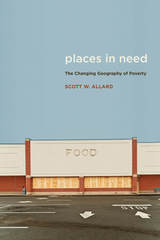 Places in Need: The Changing Geography of Poverty
Scott W. Allard
Russell Sage Foundation, 2017 Americans think of suburbs as prosperous areas that are relatively free from poverty and unemployment. Yet, today more poor people live in the suburbs than in cities themselves. In Places in Need, social policy expert Scott W. Allard tracks how the number of poor people living in suburbs has more than doubled over the last 25 years, with little attention from either academics or policymakers. Rising suburban poverty has not coincided with a decrease in urban poverty, meaning that solutions for reducing poverty must work in both cities and suburbs. Allard notes that because the suburban social safety net is less-developed than the urban safety net, a better understanding of suburban communities is critical for understanding and alleviating poverty in metropolitan areas.
Using census data, administrative data from safety net programs, and interviews with nonprofit leaders in the Chicago, Los Angeles, and Washington, D.C. metropolitan areas, Allard shows that poor suburban households resemble their urban counterparts in terms of labor force participation, family structure, and educational attainment. In the last few decades, suburbs have seen increases in single-parent households, decreases in the number of college graduates, and higher unemployment rates. As a result, suburban demand for safety net assistance has increased. Concerning is evidence suburban social service providers—which serve clients spread out over large geographical areas, and often lack the political and philanthropic support that urban nonprofit organizations can command—do not have sufficient resources to meet the demand.
To strengthen local safety nets, Allard argues for expanding funding and eligibility to federal programs such as SNAP and the Earned Income Tax Credit, which have proven effective in urban and suburban communities alike. He also proposes to increase the capabilities of community-based service providers through a mix of new funding and capacity-building efforts.
Places in Need demonstrates why researchers, policymakers, and nonprofit leaders should focus more on the shared fate of poor urban and suburban communities. This account of suburban vulnerability amidst persistent urban poverty provides a valuable foundation for developing more effective antipoverty strategies.
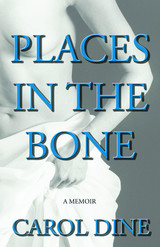 Places in the Bone: A Memoir
Dine, Carol
Rutgers University Press, 2005
In a series of unflinching vignettes laced with heartbreak and often with humor, Places in the Bone gives an unforgettable account of loss and survival, childhood secrets banished from memory, and the power of language to retrieve the missing parts of oneself and one’s past. Woven together with unmistakable lyricism, Carol Dine’s narrative moves back and forth in time and place—from the childhood bedroom that fills her with fear, to a hospital room after her surgery for breast cancer, to an adobe hut in a New Mexico artists’ colony where she escapes and finds her voice.
This voice, it turns out, is a chorus—a harmony of cries, both anguished and triumphant. Among them we hear a young girl speak about the abuse by her father; we hear the tormented reflections of a mother who, for several years after a divorce, loses contact with her young son; and we hear the testimony of a cancer survivor. Through it all, we feel the determination, courage, and creativity of a woman who has spent more than two decades confronting her past, her body, and her identity. Despite her struggles, Dine finds positive influences in her life, including her mentor, Anne Sexton, who recognizes the fire in her words, and Stanley Kunitz, whose indomitable spirit provides enduring inspiration.
More than a story of personal loss, the memoir moves us with its humanity, its unnerving wit, and its defiant faith. As the fragments come together, we experience Dine’s joy in living and her reconciliation with the past that allow her to renew bonds with her son, her sister, and her mother. In page after page, we witness the power of art to refigure a body, to transform suffering, and ultimately, to redeem.
 Places in the Dark: Short Stories
Lidmila Kábrtová
Seagull Books, 2025 A collection of short stories that intertwine the lives of six women, revealing the profound realities beneath their ordinary existence.
Following her divorce, Tereza shuts off emotionally and flits from one faceless lover to the next, until an unexpected visitor shakes her existence to the core. Klara is a bird trapped in a golden cage slowly suffocating her. Eva has sacrificed herself for her children and family. Life is one big party for Karla—or is it? Alice is doing everything she can not to be a crybaby like her mother. Petra has finally had enough and takes drastic measures. Magdalena’s true yearnings bubble up to the surface.
The stories of these six characters may be different, but these women’s paths converge throughout Places in the Dark, weaving a vivid tapestry of interconnected lives. Czech author Lidmila Kábrtová is a master of writing stories of astonishing clarity. Echoing the brilliance of Alice Munro, Kábrtová’s words act as translucent veils, allowing the essential truths to shimmer through. Moments move about on tectonic plates somewhere beneath the surface of the everyday, and nothing will be as it used to be. Yet, in this kaleidoscope of narratives, the question lingers: Was it ever truly as it seemed?
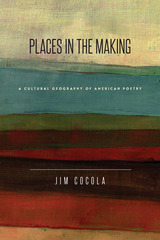 Places in the Making: A Cultural Geography of American Poetry
Jim Cocola
University of Iowa Press, 2016 Places in the Making maps a range of twentieth- and twenty-first century American poets who have used language to evoke the world at various scales. Distinct from related traditions including landscape poetry, nature poetry, and pastoral poetry—which tend toward more idealized and transcendent lyric registers—this study traces a poetics centered upon more particular and situated engagements with actual places and spaces. Close generic predecessors of this mode, such as topographical poetry and loco-descriptive poetry, folded themselves into the various regionalist traditions of the late-nineteenth and early-twentieth centuries, but place making in modern and contemporary American poetics has extended beyond its immediate environs, unfolding at the juncture of the proximate and the remote, and establishing transnational, planetary, and cosmic formations in the process. Turning to geography as an interdisciplinary point of departure, Places in the Making distinguishes itself by taking a comparative and multiethnic approach, considering the relationship between identity and emplacement among a more representative demographic cross-section of Americans, and extending its inquiry beyond national borders.
Positing place as a pivotal axis of identification and heralding emplacement as a crucial model for cultural, intellectual, and political activity in a period marked and imperiled by a tendency toward dislocation, the critical vocabulary of this project centers upon the work of place-making. It attends to a poetics that extends beyond epic and lyric modes while relying simultaneously on auditory and visual effects and proceeding in the interests of environmental advocacy and social justice, often in contrast to the more orthodox concerns of literary modernism, global capitalism, and print culture. Focusing on poets of international reputation, such as Elizabeth Bishop, Pablo Neruda, Charles Olson, and William Carlos Williams, Places in the Making also considers work by more recent figures, including Kamau Brathwaite, Joy Harjo, Myung Mi Kim, and Craig Santos Perez. In its larger comparative, multiethnic, and transnational emphases, this book addresses questions of particular moment in American literary and cultural studies and aspires to serve as a catalyst for further interdisciplinary work connecting geography and the humanities.
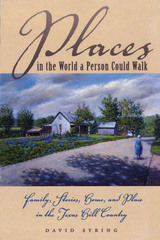 Places in the World a Person Could Walk: Family, Stories, Home, and Place in the Texas Hill Country
By David Syring
University of Texas Press, 2000 Spring-fed creeks. Old stone houses. Cedar brakes and bleached limestone. The Hill Country holds powerful sway over the imagination of Texans. So many of us dream of having our own little place in the limestone hills. The Hill Country feels just like home, even if you've never lived there. This beautifully written book explores what the Hill Country has meant as a homeplace to the author, his family, and longtime residents of the area, as well as to newcomers. David Syring listens to the stories that his aunts, uncles, and cousins tell about life in the Hill Country and grapples with their meaning for his own search for a place to belong. He also collects short stories focused around Honey Creek Church to consider how places become containers for memory. And he draws upon several years of living in Fredericksburg to talk about the problems and opportunities created by heritage tourism and the development of the town as a "home" for German Americans. These interconnected stories illuminate what it means to belong to a place and why the Texas Hill Country has become the spiritual, if not actual, home of many people.
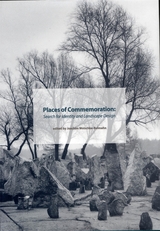 Places of Commemoration: Search for Identity and Landscape Design
Joachim Wolschke-Bulmahn
Harvard University Press, 2001 “Everyone is occupied, consciously or unconsciously, with identity—one’s origin and the question of one’s place in humankind and society of the past, present, and future. Identity and memory are not stable and objective things, but representations or constructions of reality related to a particular interest, such as class, gender, of power relations. Identity is problematic without history and without the commemoration of history, and of course such remembrance may distort historical events and facts. When dealing with gardens, a substantial part of our physical environment, there are always unspoken questions of identity.”
Places of Commemoration examines commemorative sites of different character, including gardens, landscapes, memorials, cemeteries, and sites of former Nazi concentration camps, detailing the ideas behind the creation of memorials and monuments and the struggles over the narratives they present.
Places of Engagement: Reflections on Higher Education in 2040 - A Global Approach
Armand van der Vaart
Amsterdam University Press, 2018 In his book 'Higher Education in 2040 - A Global Approach' (2017) Bert van der Zwaan developed a thought-provoking vision of the university of the future, based on a thorough discussion of current trends and on a large number of conversations with leaders in higher education worldwide.
This book, 'Places of Engagement', offer reflections on themes discussed by Van der Zwaan, written by twenty of his peers and other opinion leaders from around the world. The book was written in honour of Bert van der Zwaan at the occasion of his departure as Vice-Chancellor of Utrecht University.
With contributions by John Sexton, José van Dijck, Karl Dittrich, Dilly Fung, Michael Crow and many others.
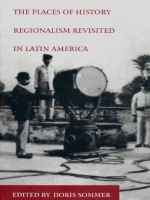 The Places of History: Regionalism Revisited in Latin America
Doris Sommer, ed.
Duke University Press, 1999 Responding to the pressures of current theoretical trends toward models of cultural globalization, the essays collected here bring a historical focus to literary studies. They suggest that only by exploring the particularities of regional historical cultures can the multiple meanings of American identities be understood. Representing a broad range of contemporary criticism, this volume features many short essays by the most well-known and respected Latin Americanists, each devoting attention to specific matters of history. The topics range from Incan architecture to Chicano and Nuyorican habitats; from turn of the century Argentine criminology to Caribbean homophobia; from the rhetorics of independence and dictatorship to Mexican ambivalence about opera and Brazil’s move beyond monarchy; and from the precarious survival of Spanish language in Latin America to its paradoxical legacy of enlightenment in the Philippines. Originally published as a special issue of Modern Language Quarterly (June 1996), this expanded edition includes a new introduction by Doris Sommer and a new essay by Vincente Rafael. Viewed together, these essays reveal a cultural richness that is sure to interest literary scholars and Latin Americanists alike.
Contributors. Carlos J. Alonso, Antonio Benítez-Rojo, John Beverley, Debra A. Castillo, Arcadio Diaz-Quiñones, Juan Flores, Mary M. Gaylord, José Limón, Josefina Ludmer, Francine Masiello, Antonio Mazzotti, Walter D. Mignolo, Sylvia Molloy, Mary Louise Pratt, Vincente Rafael, Julio Ramos, Susana Rotker, Roberto Schwarz, Diana Taylor, Nancy Vogeley
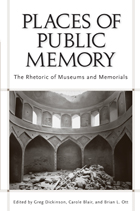 Places of Public Memory: The Rhetoric of Museums and Memorials
Edited by Greg Dickinson, Carole Blair, and Brian L. Ott
University of Alabama Press, 2010 A sustained and rigorous consideration of the intersections of memory, place, and rhetoric
Though we live in a time when memory seems to be losing its hold on communities, memory remains central to personal, communal, and national identities. And although popular and public discourses from speeches to films invite a shared sense of the past, official sites of memory such as memorials, museums, and battlefields embody unique rhetorical principles.
Places of Public Memory: The Rhetoric of Museums and Memorials is a sustained and rigorous consideration of the intersections of memory, place, and rhetoric. From the mnemonic systems inscribed upon ancient architecture to the roadside accident memorials that line America’s highways, memory and place have always been deeply interconnected. This book investigates the intersections of memory and place through nine original essays written by leading memory studies scholars from the fields of rhetoric, media studies, organizational communication, history, performance studies, and English. The essays address, among other subjects, the rhetorical strategies of those vying for competing visions of a 9/11 memorial at New York City’s Ground Zero; rhetorics of resistance embedded in the plans for an expansion of the National Civil Rights Museum; representations of nuclear energy—both as power source and weapon—in Cold War and post–Cold War museums; and tours and tourism as acts of performance.
By focusing on “official” places of memory, the collection causes readers to reflect on how nations and local communities remember history and on how some voices and views are legitimated and others are minimized or erased.
Places of Quiet Beauty: Parks, Preserves, and Environmentalism
Rebecca Conard
University of Iowa Press, 1997 Resource protection and public recreation policies have always been subject to the shifting winds of management philosophy governing both national and state parks. Somewhere in the balance, however, parks and preserves have endured as unique places of mind as well as matter. Places of Quiet Beauty allows us to see parks and preserves, forests and wildlife refuges—all those special places that the term “park” conjures up—as measures of our own commitment to caring for the environment. In this broad-ranging book, historian Rebecca Conard examines the complexity of American environmentalism in the twentieth century as manifest in Iowa's state parks and preserves.
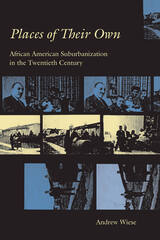 Places of Their Own: African American Suburbanization in the Twentieth Century
Andrew Wiese
University of Chicago Press, 2005 On Melbenan Drive just west of Atlanta, sunlight falls onto a long row of well-kept lawns. Two dozen homes line the street; behind them wooden decks and living-room windows open onto vast woodland properties. Residents returning from their jobs steer SUVs into long driveways and emerge from their automobiles. They walk to the front doors of their houses past sculptured bushes and flowers in bloom.
For most people, this cozy image of suburbia does not immediately evoke images of African Americans. But as this pioneering work demonstrates, the suburbs have provided a home to black residents in increasing numbers for the past hundred years—in the last two decades alone, the numbers have nearly doubled to just under twelve million. Places of Their Own begins a hundred years ago, painting an austere portrait of the conditions that early black residents found in isolated, poor suburbs. Andrew Wiese insists, however, that they moved there by choice, withstanding racism and poverty through efforts to shape the landscape to their own needs. Turning then to the 1950s, Wiese illuminates key differences between black suburbanization in the North and South. He considers how African Americans in the South bargained for separate areas where they could develop their own neighborhoods, while many of their northern counterparts transgressed racial boundaries, settling in historically white communities. Ultimately, Wiese explores how the civil rights movement emboldened black families to purchase homes in the suburbs with increased vigor, and how the passage of civil rights legislation helped pave the way for today's black middle class.
Tracing the precise contours of black migration to the suburbs over the course of the whole last century and across the entire United States, Places of Their Own will be a foundational book for anyone interested in the African American experience or the role of race and class in the making of America's suburbs.
Winner of the 2005 John G. Cawelti Book Award from the American Culture
Association.
Winner of the 2005 Award for Best Book in North American Urban
History from the Urban History Association.
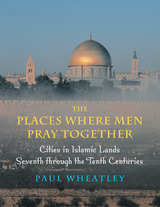 The Places Where Men Pray Together: Cities in Islamic Lands, Seventh through the Tenth Centuries
Paul Wheatley
University of Chicago Press, 2001 What makes a city an economic, political, and cultural center? In The Places Where Men Pray Together, Paul Wheatley draws on two decades of astonishingly wide-ranging research to demonstrate that Islamic cities are defined by function rather than form—by what they do rather than what they are. Focusing on the roles of cities during the first four centuries of Islamic expansion, Wheatley explores interconnected cultural, historical, economic, political, and religious factors to provide the clearest and most extensively documented portrait of early Islamic urban centers available to date.
Building on the tenth-century geographer al-Maqdisi's writings on urban centers of the Islamic world, buttressed by extensive comparative material from roadbooks, topographies, histories, adab literatures, and gazetteers of the time, Wheatley identifies the main functions of different Islamic urban centers. Chapters on each of the thirteen centers that al-Maqdisi identified, ranging from the Atlantic to the Indus and from the Caspian to the Sudan, form the heart of this book. In each case Wheatley shows how specific agglomeration and accessibility factors combined to make every city functionally distinct as a creator of effective space. He also demonstrates that, far from revolutionizing every aspect of life in these cities, the adoption of Islam often affected the development of these cities less than previously existing local traditions.
The Places Where Men Pray Together is a monumental work that will speak to scholars and readers across a broad variety of disciplines, from historians, anthropologists, and sociologists to religious historians, archaeologists, and geographers.
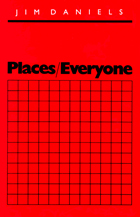 Places/Everyone
Jim Daniels
University of Wisconsin Press, 1985 Jim Daniels, in his first book of poems, draws upon his experiences in living and working in his native Detroit to present a start, realistic picture of urban, blue-collar life. Daniels, his brothers, his father, and his grandfather have all worked in the auto industry, and that background seeps into nearly all these poems.
The first of the book’s three sections sketches out this background, then moves into a neighborhood full of people whose lives are so linked to the ups and downs of the auto industry that they have to struggle to find their own lives; in "Still Lives in Detroit, #2," Daniels writes, "There’s a man in this picture. / No one can find him." The second section contains the "Digger" poems, a series on the lives of a Detroit auto worker and his family which tries to capture the effects of the work on life outside the factory. Here, we listen to Digger think, dream, wander on psychological journeys while he moves through his routines, shoveling the snow, mowing the lawn, and so forth. In section three, the poems move into the workplace, whether that be a liquor store, a hamburger joint, or a factory.
These poems, sometimes dark, sometimes humorous, concentrate on the efforts of workers to rise above the often depressing work of blue-collar or minimum-wage jobs, to salvage some pride and dignity. The poems in this book try to give a voice to those who are often shut out of poetry. They are important. These lives are important, and the poems, more than anything, say that.
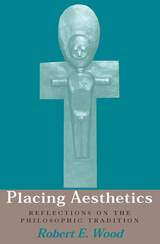 Placing Aesthetics: Reflections on the Philosophic Tradition
Robert E. Wood
Ohio University Press, 2000 Examining select high points in the speculative tradition from Plato and Aristotle through the Middle Ages and German tradition to Dewey and Heidegger, Placing Aesthetics seeks to locate the aesthetic concern within the larger framework of each thinker’s philosophy. In Professor Robert Wood’s study, aesthetics is not peripheral but rather central to the speculative tradition and to human existence as such. In Dewey’s terms, aesthetics is “experience in its integrity.” Its personal ground is in “the heart,” which is the dispositional ground formed by genetic, cultural , and personal historical factors by which we are spontaneously moved and, in turn, are inclined to move, both practically and theoretically, in certain directions. Prepared for use by the student as well as the philosopher, Placing Aesthetics aims to recover the fullness of humanness within a sense of the fullness of encompassing Being. It attempts to overcome the splitting of thought, even in philosophy, into exclusive specializations and the fracturing of life itself into theoretical, practical, and emotive dimensions.
 Placing John Haines
James Perrin Warren
University of Alaska Press, 2017
John Haines arrived in Alaska, fresh out of the Navy, in 1947, and established a homestead seventy miles southeast of Fairbanks. He stayed there nearly twenty-five years, learning to live off the country: hunting, trapping, fishing, gathering berries, and growing vegetables. Those years formed him as a writer—the interior of Alaska, and especially its boreal forest—marking his poetry and prose and helping him find his unique voice.
Placing John Haines, the first book-length study of his work, tells the story of those years, but also of his later, itinerant life, as his success as a writer led him to hold fellowships and teach at universities across the country. James Perrin Warren draws out the contradictions inherent in that biography—that this poet so indelibly associated with place, and authentic belonging, spent decades in motion—and also sets Haines’s work in the context of contemporaries like Robert Bly, Donald Hall, and his close friend Wendell Berry. The resulting portrait shows us a poet who was regularly reinventing himself, and thereby generating creative tension that fueled his unforgettable work. A major study of a sadly neglected master, Placing John Haines puts his achievement in compelling context.
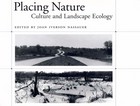 Placing Nature: Culture And Landscape Ecology
Edited by Joan Iverson Nassauer
Island Press, 1997 Landscape ecology is a widely influential approach to looking at ecological function at the scale of landscapes, and accepting that human beings powerfully affect landscape pattern and function. It goes beyond investigation of pristine environments to consider ecological questions that are raised by patterns of farming, forestry, towns, and cities. Placing Nature is a groundbreaking volume in the field of landscape ecology, the result of collaborative work among experts in ecology, philosophy, art, literature, geography, landscape architecture, and history. Contributors asked each other: What is our appropriate role in nature? How are assumptions of Western culture and ingrained traditions placed in a new context of ecological knowledge? In this book, they consider the goals and strategies needed to bring human-dominated landscapes into intentional relationships with nature, articulating widely varied approaches to the task. In the essays: novelist Jane Smiley, ecologist Eville Gorham, and historian Curt Meine each examine the urgent realities of fitting together ecological function and culture philosopher Marcia Eaton and landscape architect Joan Nassauer each suggest ways to use the culture of nature to bring ecological health into settled landscapes urban geographer Judith Martin and urban historian Sam Bass Warner, geographer and landscape architect Deborah Karasov, and ecologist William Romme each explore the dynamics of land development decisions for their landscape ecological effects artist Chris Faust's photographs juxtapose the crass and mundane details of land use with the poetic power of ecological pattern. Every possible future landscape is the embodiment of some human choice. Placing Nature provides important insight for those who make such choices -- ecologists, ecosystem managers, watershed managers, conservation biologists, land developers, designers, planners -- and for all who wish to promote the ecological health of their communities.
Placing Outer Space: An Earthly Ethnography of Other Worlds
Lisa Messeri
Duke University Press, 2016 In Placing Outer Space Lisa Messeri traces how the place-making practices of planetary scientists transform the void of space into a cosmos filled with worlds that can be known and explored. Making planets into places is central to the daily practices and professional identities of the astronomers, geologists, and computer scientists Messeri studies. She takes readers to the Mars Desert Research Station and a NASA research center to discuss ways scientists experience and map Mars. At a Chilean observatory and in MIT's labs she describes how they discover exoplanets and envision what it would be like to inhabit them. Today’s planetary science reveals the universe as densely inhabited by evocative worlds, which in turn tells us more about Earth, ourselves, and our place in the universe.
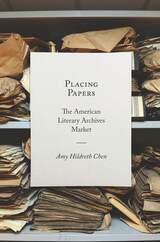 Placing Papers: The American Literary Archives Market
Amy Hildreth Chen
University of Massachusetts Press, 2020 The sale of authors' papers to archives has become big news, with collections from James Baldwin and Arthur Miller fetching record-breaking sums in recent years. Amy Hildreth Chen offers the history of how this multimillion dollar business developed from the mid-twentieth century onward and considers what impact authors, literary agents, curators, archivists, and others have had on this burgeoning economy.
The market for contemporary authors' archives began when research libraries needed to cheaply provide primary sources for the swelling number of students and faculty following World War II. Demand soon grew, and while writers and their families found new opportunities to make money, so too did book dealers and literary agents with the foresight to pivot their businesses to serve living authors. Public interest surrounding celebrity writers had exploded by the late twentieth century, and as Placing Papers illustrates, even the best funded institutions were forced to contend with the facts that acquiring contemporary literary archives had become cost prohibitive and increasingly competitive.
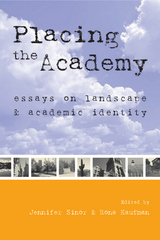 Placing the Academy: Essays on Landscape, Work, and Identity
edited by Jennifer Sinor and Rona Kaufman
Utah State University Press, 2007 Twenty-one writers answer the call for literature that addresses who we are by understanding where we are--where, for each of them, being in some way part of academia. In personal essays, they imaginatively delineate and engage the diverse, occasionally unexpected play of place in shaping them, writers and teachers in varied environments, with unique experiences and distinctive world views, and reconfiguring for them conjunctions of identity and setting, here, there, everywhere, and in between. Contents I Introduction Writing Place, Jennifer Sinor II Here
Six Kinds of Rain: Searching for a Place in the Academy, Kathleen Dean Moore and Erin E. Moore
The Work the Landscape Calls Us To, Michael Sowder
Valley Language, Diana Garcia
What I Learned from the Campus Plumber, Charles Bergman
M-I-Crooked Letter-Crooked Letter, Katherine Fischer
On Frogs, Poems, and Teaching at a Rural Community College, Sean W. Henne III There
Levittown Breeds Anarchists Film at 11:00, Kathryn T. Flannery
Living in a Transformed Desert, Mitsuye Yamada
A More Fortunate Destiny, Jayne Brim Box
Imagined Vietnams, Charles Waugh IV Everywhere
Teaching on Stolen Ground, Deborah A. Miranda
The Blind Teaching the Blind: The Academic as Naturalist, or Not, Robert Michael Pyle
Where Are You From? Lee Torda V In Between
Going Away to Think, Scott Slovic
Fronteriza Consciousness: The Site and Language of the Academy and of Life, Norma Elia Cantu
Bones of Summer, Mary Clearman Blew
Singing, Speaking, and Seeing a World, Janice M. Gould
Making Places Work: Felt Sense, Identity, and Teaching, Jeffrey M. Buchanan VI Coda
Running in Place: The Personal at Work, in Motion, on Campus, and in the Neighborhood, Rona Kaufman
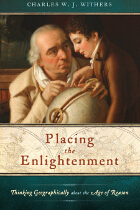 Placing the Enlightenment: Thinking Geographically about the Age of Reason
Charles W. J. Withers
University of Chicago Press, 2007 The Enlightenment was the age in which the world became modern, challenging tradition in favor of reason, freedom, and critical inquiry. While many aspects of the Enlightenment have been rigorously scrutinized—its origins and motivations, its principal characters and defining features, its legacy and modern relevance—the geographical dimensions of the era have until now largely been ignored. Placing the Enlightenment contends that the Age of Reason was not only a period of pioneering geographical investigation but also an age with spatial dimensions to its content and concerns.
Investigating the role space and location played in the creation and reception of Enlightenment ideas, Charles W. J. Withers draws from the fields of art, science, history, geography, politics, and religion to explore the legacies of Enlightenment national identity, navigation, discovery, and knowledge. Ultimately, geography is revealed to be the source of much of the raw material from which philosophers fashioned theories of the human condition.
Lavishly illustrated and engagingly written, Placing the Enlightenment will interest Enlightenment specialists from across the disciplines as well as any scholar curious about the role geography has played in the making of the modern world.
 Placita
Aetius
Harvard University Press, 2023 An ancient compendium of ancient philosophy.
Placita (Tenets), generally attributed to an author named Aëtius and dating from the late first or early second century AD, was a compendium setting out in summary fashion the principal doctrines and opinions of philosophers and philosophical schools in response to questions and topics in the domain of natural philosophy. Now lost, Placita can be largely reconstructed from the work of three authors working in the period from the second to the fifth century (Pseudo-Plutarch, Stobaeus, and Theodoret) who quote from it extensively.
Placita is organized into five books: First Principles; Cosmology; Meteorology and the Earth; Psychology; and Physiology. Each chapter contains a list of short opinions or tenets, which are ascribed to an individual philosopher and/or school and usually arranged in sections that stress the variety and contrast of the teachings concerned.
Designed as a multi-purpose resource, Placita long served as a manual of neatly packaged doxographic material on a wide variety of topics, to be used for study, as an aide-mémoire, for displays of erudition, for persuasion in rhetorical or apologetic contexts, and for personal enlightenment, and it remains a valuable source for our knowledge of Presocratic and Hellenistic philosophy.
This edition of Aëtius’ Placita offers a fresh translation, ample annotation, and a text fully informed by the latest scholarship.
Plagiarism and Imitation during the English Renaissance: A Study in Critical Distinctions
Harold Ogden White
Harvard University Press Disregarding for the moment all modern theories of literary property rights and plagiarism, Dr White has gone directly to the writers of the sixteenth and early seventeenth centuries to find out what they themselves said about imitation. He has combed the entire literature of the period for even the most incidental references to what modern critics call plagiarism. He shows that his authors neither damned imitation because its abuse was evil nor demanded invention because its right use was good. Instead, profiting by each, they triumphantly applied the classical doctrine that originality of real worth is to be achieved only through creative imitation.
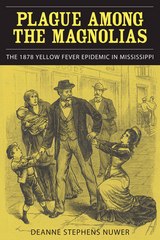 Plague Among the Magnolias: The 1878 Yellow Fever Epidemic in Mississippi
Deanne Stephens Nuwer
University of Alabama Press, 2009 Deanne Stephens Nuwer explores the social, political, racial, and economic consequences of the 1878 yellow fever epidemic in Mississippi. A mild winter, a long spring, and a torrid summer produced conditions favoring the Aedes aegypti and spread of fever. In late July New Orleans newspapers reported the epidemic and upriver officials established checkpoints, but efforts at quarantine came too late. Yellow fever was developing by late July, and in August deaths were reported. With a fresh memory of an 1873 epidemic, thousands fled, some carrying the disease with them. The fever raged until mid-October, killing many: in Mississippi 28 percent of yellow fever victims died. Thought to be immune to the disease, blacks also contracted the fever in large numbers, although only 7 percent died. There is no consensus explaining the disparity, although it is possible that exposure to yellow fever in Africa provided blacks with inherited resistance. Those fleeing the plague encountered quarantines throughout the South. Some were successful in keeping the disease from spreading, but most efforts failed. These hit hardest were towns along the railroads leading from the river, many of which experienced staggering losses. Yellow fever’s impact, however, was not all negative. Many communities began sanitation reforms, and yellow fever did not again strike in epidemic proportions. Sewer systems and better water supply did wonders for public health in preventing cholera, dysentery, and other water-borne diseases. Mississippi also undertook an infrastructure leading to acceptance of national health care efforts: not an easy step for a militantly states' rights and racially reactionary society.
Plague and Contagion in the Islamic Mediterranean
Nükhet Varlik
Arc Humanities Press, 2017 This book discusses diseases that affected human and non-human populations in areas stretching from the Red Sea and Egypt to Anatolia, the Balkans, and the Black Sea, in the early modern and modern eras. It tackles various questions of historiography and sources, tests new interdisciplinary methodologies, and asks new questions while revisiting older ones. It contributes to Ottoman studies, the history of medicine, Mediterranean and European history, as well as global studies on the role of epidemics in history.
Plague and Pleasure: The Renaissance World of Pius II
Arthur White
Catholic University of America Press, 2014 Plague and Pleasure is a lively popular history that introduces a new hypothesis about the impetus behind the cultural change in Renaissance Italy. The Renaissance coincided with a period of chronic, constantly recurring plague, unremitting warfare and pervasive insecurity. Consequently, people felt a need for mental escape to alternative, idealized realities, distant in time or space from the unendurable present but made vivid to the imagination through literature, art, and spectacle.
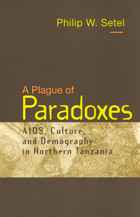 A Plague of Paradoxes: AIDS, Culture, and Demography in Northern Tanzania
Philip W. Setel
University of Chicago Press, 1999 Since recording its first AIDS cases in 1983, Tanzania has reported nearly 90,000 more to the World Health Organization—more than any other country in Africa. As AIDS spread, the devastating syndrome came to be known simply as ugonjwa huo: "that disease."
The AIDS epidemic has forced Africans to reflect upon the meaning of traditional ideas and practices related to sexuality and fertility, and upon modernity and biomedicine. In A Plague of Paradoxes, anthropologist Philip Setel observes Tanzania's Chagga people and their attempts to cope with and understand AIDS—the latest in a series of crises over which they feel they have little, if any, control.
Timely and well-researched, A Plague of Paradoxes is an extended case study of the most serious epidemic of the twentieth century and the cultural circumstances out of which it emerged. It is a unique book that brings together anthropology, demography, and epidemiology to explain how a particular community in Africa experiences AIDS.
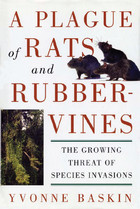 A Plague of Rats and Rubbervines: The Growing Threat Of Species Invasions
Yvonne Baskin
Island Press, 2002 The human love of novelty and desire to make one place look like another, coupled with massive increases in global trade and transport, are creating a growing economic and ecological threat. The same forces that are rapidly "McDonaldizing" the world's diverse cultures are also driving us toward an era of monotonous, weedy, and uniformly impoverished landscapes. Unique plant and animal communities are slowly succumbing to the world's "rats and rubbervines" -- animals like zebra mussels and feral pigs, and plants like kudzu and water hyacinth -- that, once moved into new territory, can disrupt human enterprise and well-being as well as native habitats and biodiversity. From songbird-eating snakes in Guam to cheatgrass in the Great Plains, "invasives" are wreaking havoc around the world. In A Plague of Rats and Rubbervines, widely published science writer Yvonne Baskin draws on extensive research to provide an engaging and authoritative overview of the problem of harmful invasive alien species. She takes the reader on a worldwide tour of grasslands, gardens, waterways, and forests, describing the troubles caused by exotic organisms that run amok in new settings and examining how commerce and travel on an increasingly connected planet are exacerbating this oldest of human-created problems. She offers examples of potential solutions and profiles dedicated individuals worldwide who are working tirelessly to protect the places and creatures they love. While our attention is quick to focus on purposeful attempts to disrupt our lives and economies by releasing harmful biological agents, we often ignore equally serious but much more insidious threats, those that we inadvertently cause by our own seemingly harmless actions. A Plague of Rats and Rubbervines takes a compelling look at this underappreciated problem and sets forth positive suggestions for what we as consumers, gardeners, travelers, nurserymen, fishermen, pet owners, business people -- indeed all of us who by our very local choices drive global commerce -- can do to help. "
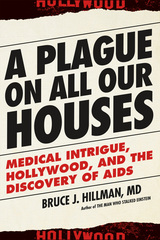 A Plague on All Our Houses: Medical Intrigue, Hollywood, and the Discovery of AIDS
Bruce J. Hillman
University Press of New England, 2016 A frightening new plague. A medical mystery. A pioneering immunologist. In A Plague on All Our Houses, Dr. Bruce J. Hillman dissects the war of egos, money, academic power, and Hollywood clout that advanced AIDS research even as it compromised the career of the scientist who discovered the disease. At the beginning of the worldwide epidemic soon to be known as AIDS, Dr. Michael Gottlieb was a young immunologist new to the faculty of UCLA Medical Center. In 1981 he was brought in to consult on a battery of unusual cases: four formerly healthy gay men presenting with persistent fever, weight loss, and highly unusual infections. Other physicians around the country had noted similar clusters of symptoms, but it was Gottlieb who first realized that these patients had a new and deadly disease. He also identified the defect in their immune system that allowed the disease to flourish. He published his findings in a now-iconic lead article in the New England Journal of Medicine—an impressive achievement for such a young scientist—and quickly became the focal point of a whirlwind of panic, envy, desperation, and distrust that played out against a glittering Hollywood backdrop. Courted by the media, the gay community, and the entertainment industry, Gottlieb emerged as the medical face of the terrifying new epidemic when he became personal physician to Rock Hudson, the first celebrity AIDS patient. With Elizabeth Taylor he cofounded the charitable foundation amfAR, which advanced public awareness of AIDS and raised vast sums for research, even as it struggled against political resistance that began with the Reagan administration and trickled down through sedimentary layers of bureaucracy. Far from supporting him, the UCLA medical establishment reacted with dismay to Gottlieb’s early work on AIDS, believing it would tarnish the reputation of the Medical Center. Denied promotion and tenure in 1987, Gottlieb left UCLA for private practice just as the National Institutes of Health awarded the institution a $10 million grant for work he had pioneered there. In the thirty-five years since the discovery of AIDS, research, prevention, and clinical care have advanced to the point that the disease is no longer the death sentence it once was. Gottlieb’s seminal article is now regarded by the New England Journal of Medicine as one of the most significant publications of its two-hundred-year history. A Plague on All Our Houses offers a ringside seat to one of the most important medical discoveries and controversies of our time.
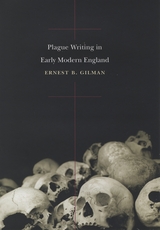 Plague Writing in Early Modern England
Ernest B. Gilman
University of Chicago Press, 2009 During the seventeenth century, England was beset by three epidemics of the bubonic plague, each outbreak claiming between a quarter and a third of the population of London and other urban centers. Surveying a wide range of responses to these epidemics—sermons, medical tracts, pious exhortations, satirical pamphlets, and political commentary—Plague Writing in Early Modern England brings to life the many and complex ways Londoners made sense of such unspeakable devastation. Ernest B. Gilman argues that the plague writing of the period attempted unsuccessfully to rationalize the catastrophic and that its failure to account for the plague as an instrument of divine justice fundamentally threatened the core of Christian belief. Gilman also trains his critical eye on the works of Jonson, Donne, Pepys, and Defoe, which, he posits, can be more fully understood when put into the context of this century-long project to “write out” the plague. Ultimately, Plague Writing in Early Modern England is more than a compendium of artifacts of a bygone era; it holds up a distant mirror to reflect our own condition in the age of AIDS, super viruses, multidrug resistant tuberculosis, and the hovering threat of a global flu pandemic.
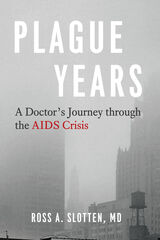 Plague Years: A Doctor’s Journey through the AIDS Crisis
Ross A. Slotten, MD
University of Chicago Press, 2020 In 1992, Dr. Ross A. Slotten signed more death certificates in Chicago—and, by inference, the state of Illinois—than anyone else. As a family physician, he was trained to care for patients from birth to death, but when he completed his residency in 1984, he had no idea that many of his future patients would be cut down in the prime of their lives. Among those patients were friends, colleagues, and lovers, shunned by most of the medical community because they were gay and HIV positive. Slotten wasn’t an infectious disease specialist, but because of his unique position as both a gay man and a young physician, he became an unlikely pioneer, swept up in one of the worst epidemics in modern history.
Plague Years is an unprecedented first-person account of that epidemic, spanning not just the city of Chicago but four continents as well. Slotten provides an intimate yet comprehensive view of the disease’s spread alongside heartfelt portraits of his patients and his own conflicted feelings as a medical professional, drawn from more than thirty years of personal notebooks. In telling the story of someone who was as much a potential patient as a doctor, Plague Years sheds light on the darkest hours in the history of the LGBT community in ways that no previous medical memoir has.
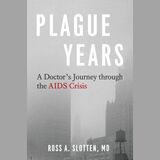 Plague Years: A Doctor's Journey through the AIDS Crisis
Ross A. Slotten, MD
University of Chicago Press, 2020 This is an auto-narrated audiobook edition of this book. In 1992, Dr. Ross A. Slotten signed more death certificates in Chicago—and, by inference, the state of Illinois—than anyone else. As a family physician, he was trained to care for patients from birth to death, but when he completed his residency in 1984, he had no idea that many of his future patients would be cut down in the prime of their lives. Among those patients were friends, colleagues, and lovers, shunned by most of the medical community because they were gay and HIV positive. Slotten wasn’t an infectious disease specialist, but because of his unique position as both a gay man and a young physician, he became an unlikely pioneer, swept up in one of the worst epidemics in modern history.
Plague Years is an unprecedented first-person account of that epidemic, spanning not just the city of Chicago but four continents as well. Slotten provides an intimate yet comprehensive view of the disease’s spread alongside heartfelt portraits of his patients and his own conflicted feelings as a medical professional, drawn from more than thirty years of personal notebooks. In telling the story of someone who was as much a potential patient as a doctor, Plague Years sheds light on the darkest hours in the history of the LGBT community in ways that no previous medical memoir has.
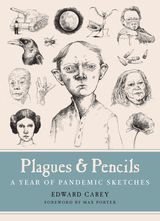 Plagues and Pencils: A Year of Pandemic Sketches
Edward Carey, with a foreword by Max Porter
University of Texas Press, 2022 Honorable Mention, 2022 Nonfiction Prize, Writers' League of Texas
A remarkable collection of words and illustrations documenting the first year of the pandemic.
In March 2020, as lockdowns were imposed around the world, author and illustrator Edward Carey raced home to Austin, Texas. The next day, he published on social media a sketch of “A Very Determined Young Man.” The day after, he posted another drawing. One year and one hundred and fifty Tombow B pencil stubs later, he was still drawing. Carey’s pencil fills the page with the marvelous and intriguing, picturing people, characters, animals, monsters, and his favorite bird to draw, the grackle. He reaches into history and fiction to escape grim reality through flights of vivid imagination—until events demand the drawings “look straight on.” Breonna Taylor, the Brontë sisters, John Lewis, King Lear, and even the portraits that mark the progress of the year for the Very Determined Young Man combine into a remarkable document of the pandemic and its politics. For Carey, though, trapped inside a home he loves, these portraits are something more, a way to chart time, an artist’s way of creating connection in isolation. With an introduction by Max Porter, this exceptional collection from the acclaimed author of Little marks a year of a man trapped with his pencil, determined to find solace amid uncertainty.
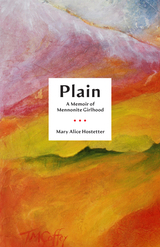 Plain: A Memoir of Mennonite Girlhood
Mary Alice Hostetter
University of Wisconsin Press, 2022 Plain tells the story of Mary Alice Hostetter’s journey to define an authentic self amid a rigid religious upbringing in a Mennonite farm family. Although endowed with a personality “prone toward questioning and challenging,” the young Mary Alice at first wants nothing more than to be a good girl, to do her share, and—alongside her eleven siblings—to work her family’s Lancaster County, Pennsylvania, farm. She feels fortunate to have been born into a religion where, as the familiar hymn states, she is “safe in the arms of Jesus.” As an adolescent, that keen desire for belonging becomes focused on her worldly peers, even though she knows that Mennonites consider themselves a people apart. Eventually she leaves behind the fields and fences of her youth, thinking she will finally be able to grow beyond the prohibitions of her church. Discovering and accepting her sexuality, she once again finds herself apart, on the outside of family, community, and societal norms.
This quietly powerful memoir of longing and acceptance casts a humanizing eye on a little-understood American religious tradition and a woman’s striving to grow within and beyond it.
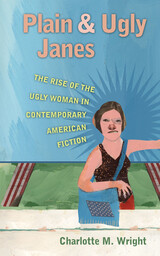 Plain and Ugly Janes: The Rise of the Ugly Woman in Contemporary American Fiction
Wright, Charlotte M.
University of Iowa Press, 2000 “If beauty is truth, is ugliness falsehood and deception? If all art need concern itself with is beauty, what need have we to explore in our literature the nature and consequences of ugliness?” In Plain and Ugly Janes, originally published in hardcover in 2000 by Garland, Charlotte Wright defines and explores the ramifications of a new character type in twentieth-century American literature, the “ugly woman,” whose roots can be traced to the old maid/spinster character of the nineteenth century. During the 1970s, stories began to appear in which the ugly woman is a figure of power—heroic not in the traditional old maid's way of quiet, passive acceptance but in a way more in keeping with the active, masculine definition of heroic behavior. Wright uses these stories to discuss the nature and definitions of ugliness and the effects of female ugliness on both male and female literary characters in the works of a range of American authors, including Sherwood Anderson, Russell Banks, Djuna Barnes, Peter S. Beagle, Sarah Bird, Ray Bradbury, Katherine Dunn, Louise Erdrich, William Faulkner, Tess Gallagher, Barry Hannah, Ernest Hemingway, Zora Neale Hurston, Alison Lurie, Lorrie Moore, Joyce Carol Oates, Flannery O'Connor, Katherine Anne Porter, Leon Rooke, Anne Tyler, Alice Walker, and Eudora Welty. Wright concludes that the ugly woman character allows American authors to explore the ironies and inequalities inherent in the beauty system.
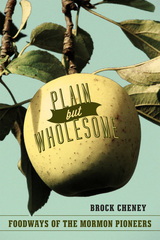 Plain but Wholesome: Foodways of the Mormon Pioneers
Brock Cheney
University of Utah Press, 2012 Plain But Wholesome presents a groundbreaking foray into Mormon history. Brock Cheney explores the foodways of Mormon pioneers from their trek west through the arrival of the railroad and reveals new perspectives on the fasci-nating Mormon settlement era. Relying on original diaries, newspaper accounts, and recipe books from the 1850s, Cheney draws a vivid portrait of what Mormon pioneers ate and drank. Although other authors have sketched the subject before, this portrait is the first effort that might be described as scholarly, though the lively prose will interest a broad general audience.
Presented here are the first explicit descriptions of the menus, food processes, and recipes of the Mormon pioneers. While many have supposed that earlier pioneer foodways continued to be handed down through Mormon families, Cheney has confirmed traditions going back generations and covering more than a century. The book also exposes myths and clichés about pioneer piety and hardships, as Cheney examines such pioneer extravagances as fresh “oysters on the half shell” and pioneer trends of alcohol consumption.
A perfect gift for the history buff or Dutch oven chef, Plain But Wholesome will also prove its place among scholars and historians. With its rollicking blend of historical source material and modern interpretation, this book will entertain and educate novice and expert alike.
Plain Folk: The Life Stories of Undistinguished Americans
Edited by David M. Katzman and William M. Tuttle, Jr.
University of Illinois Press, 1982 Plain Folk depicts both the ordinary occupations and ethnic and racial diversity of America at the turn of the century. Katzman and Tuttle have drawn upon 75 brief autobiographies or "lifelets" of working-class Americans published between 1902 and 1906 in The Independent magazine. Among the seventeen life stories included here are those of a Lithuanian stockyards worker in Chicago, a Polish sweatshop girl and a Chinese merchant in New York City, a black peon in rural Georgia, and a Swedish farmer in Minnesota. Together they provide an unmediated and seldom-seen view of American life during this period.
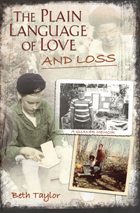 The Plain Language of Love and Loss: A Quaker Memoir
Beth Taylor
University of Missouri Press, 2009 On November 16, 1965, Beth Taylor’s idyllic childhood was shattered at age twelve by the suicide of her older brother Geoff. Raised in an “intentional community” north of Philadelphia—a mix of farm village, hippie commune, and suburb—she and her siblings were instilled with nonconformist values and respect for the Quaker tradition. With the loss of her beloved brother, Taylor began her complicated journey to understand family, loss, and faith. Written after years of contemplation, The Plain Language of Love and Loss reflects on the meaning of death and loss for three generations of Taylor’s family and their friends. Her compelling portrait of Geoff reveals a boy whose understanding of who he was came under increasing attack. He was harassed by schoolmates for being a “commie pinko coward” and he tried to appease fellow Boy Scouts after he abstained from a support-the-troops rally. Touching on the timely issues of bullying, child rearing, and nonconformity, Taylor offers a rare look at growing up Quaker in the tumultuous 1960s. Taylor tells how each stage of her life exposed clues to the subtle damage wrought by tragedy, even while it revealed varieties of solace found in friendships, marriage, and parenting. As she struggles to understand the complexities of religious heritage, patriotism, and pacifism, she weaves the story of her own family together with the larger history of Quakers in the Northeast, showing the importance of family values and the impact of religious education. Beth Taylor says that she learned many things from her childhood, in particular that history is alive—and shapes how we judge ourselves and choose to live our lives. She comes to see that grief can be a mask, a lover, and a teacher.
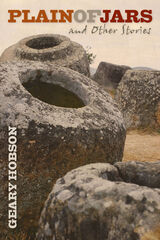 Plain of Jars: and Other Stories
Geary Hobson
Michigan State University Press, 2011 In the opening story of Geary Hobson’s riveting new collection, Plain of Jars, a young private confides to his friend that he’s trying to leave the Marine Corps. “I am not doing this just because I find the Marine Corps too tough,” Warren Needham says, but because violence is contradictory to his faith. The story’s surprising climax, however, reveals a different side of Needham’s contradictory nature. It’s this acute understanding of conflict that characterizes Plain of Jars, a book populated by bullies, men in combat, abusive spouses, and Native Americans seeking a sense of personal identity in an environment where conformity is law. The U.S. Marine Corps sets the stage for a number of these stories, whose protagonists combat racism, post-traumatic stress syndrome, and the looming reality of the Vietnam War. With pitch perfect dialogue and a sense of the unexpected, Plain of Jars tests the depths of complex lives.
The Plains Across: The Overland Emigrants and the Trans-Mississippi West, 1840-60
John D. Unruh, Jr.
University of Illinois Press, 1979 One of three finalists for the Pulitzer Prize in History and the winner of seven awards, including the John H. Dunning Prize of the American Historical Association, the Ray A. Billington Book Award of the Organization of American Historians, and the National Historical Society Book Prize.
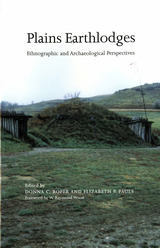 Plains Earthlodges: Ethnographic and Archaeological Perspectives
Edited by Donna C. Roper and Elizabeth P. Pauls
University of Alabama Press, 2005 A survey of Native American earthlodge research from across the Great Plains. Early explorers initially believed the earthlodge homes of Plains village peoples were made entirely of earth. Actually, however, earthlodges are timber-frame structures, with the frame covered by successive layers of willows, grass, and earth, and with a tunnel-like entryway and a smoke hole in the center of the roof. The products of nearly a millennium of engineering development, historic period lodges were massively built. With diameters up to 60 feet across, they comprise the largest and most complex artifacts built on the Plains until the 20th century. Sheltering nuclear or extended families and their possessions—beds, stored food and clothing, weapons, sweatlodges, and even livestock—they shaped Plains villagers' lives both physically and symbolically. This collection of papers explores current research in the ethnography and archaeology of Plains earthlodges, considering a variety of Plains tribes, including the Mandan, Hidatsa, Cheyenne, and their late prehistoric period predecessors. Acknowledged experts in the field discuss topics including lodge construction, architecture, maintenance, deterioration, and lifespan; the ritual practices performed in them; their associations with craft traditions, medicine lodges, and the Sun Dance; their gender symbolism; and their geophysical signatures. With technological advances allowing an ever greater recognition of archaeological evidence in situ, future earthlodge research will yield even more information on their owners and residents. This volume provides a much-needed baseline for such research as well as comparative data for the occurrence of earthlodges in other sections of North America. Contributors:
Jennifer R. Bales, Donald J. Blakeslee, Kenneth L. Kvamme, Stephen C. Lensink, Margot P. Liberty, Elizabeth P. Pauls, Donna C. Roper, Michael Scullin, W. Raymond Wood
Plains Village Archaeology: Bison Hunting Farmers in the Central and Northern Plains
Stanley A Ahler
University of Utah Press, 2007 Plains villagers had a well-developed life way of intensive horticulture, bison hunting, and residence in substantial timber houses. This volume documents how Plains village culture emerged as a widespread and cohesive cultural adaptation from its roots in late Plains woodland cultures, as well as how it was repeatedly altered by internal and external forces. It addresses the historical emergence of these peoples, greatly transformed and decimated as the Wichitas, Omaha, Pawnees, Arikaras, Mandans, and Hidatsas.
This volume presents a cross section of current research about the origins and internal developments of prehistoric Plains village people in the Central and Northern Plains.
Plaintext: Essays
Nancy Mairs
University of Arizona Press, 1986 Plaintext has won critical acclaim and a wide audience for author Nancy Mairs’s unapologetic views on agoraphobia, multiple sclerosis, and the challenges of being a woman in a patriarchal world. The provocative collection includes the widely anthologized essays “On Being a Cripple” and “On Not Liking Sex.”
Plainview: The Enigmatic Paleoindian Artifact Style of the Great Plains
Edited by Vance T. Holliday, Eileen Johnson, and Ruthann Knudson
University of Utah Press, 2017 The Plainview Paleoindian artifact style was first recognized in 1947, after numerous projectile points were found during excavations of a bison kill site near Plainview, Texas. In the decades that followed, however, Plainview became something of a catch-all category with artifacts from across the continent being lumped together based merely on gross similarities. This volume unravels the meaning of Plainview, detailing what is known about this particular technology and time period. Contributing authors from the United States and Mexico present new data gleaned from the reinvestigation of past excavations, notes, maps, and materials from the original Plainview site as well as reports from other Plainview Paleoindian sites across the Great Plains, northern Mexico, and the southwestern United States.
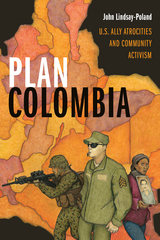 Plan Colombia: U.S. Ally Atrocities and Community Activism
John Lindsay-Poland
Duke University Press, 2018 For more than fifty years, the United States supported the Colombian military in a war that cost over 200,000 lives. During a single period of heightened U.S. assistance known as Plan Colombia, the Colombian military killed more than 5,000 civilians. In Plan Colombia John Lindsay-Poland narrates a 2005 massacre in the San José de Apartadó Peace Community and the subsequent investigation, official cover-up, and response from the international community. He examines how the multibillion-dollar U.S. military aid and official indifference contributed to the Colombian military's atrocities. Drawing on his human rights activism and interviews with military officers, community members, and human rights defenders, Lindsay-Poland describes grassroots initiatives in Colombia and the United States that resisted militarized policy and created alternatives to war. Although they had few resources, these initiatives offered models for constructing just and peaceful relationships between the United States and other nations. Yet, despite the civilian death toll and documented atrocities, Washington, DC, considered Plan Colombia's counterinsurgency campaign to be so successful that it became the dominant blueprint for U.S. military intervention around the world.
The Plan for Perpetual Peace, On the Government of Poland, and Other Writings on History and Politics
Jean-Jacques Rousseau
Dartmouth College Press, 2011 These abridgements of The Plan for Perpetual Peace (published 1761), On the Government of Poland (1771–1772), and Jean-Jacques Rousseau’s other writings on history and politics represent his considerations of the practical applications of key principles developed in his best-known theoretical writings. In this latest volume in the classic series, Rousseau reflects on projects for a European union; the possibilities for governmental reform for France, including the polysynody experiment; international relations; and the establishment of governments for Poland and Corsica, both recently liberated from foreign oppression. Taken together, these works offer definitive insights into Rousseau’s decidedly nonutopian thoughts on cosmopolitanism and nationalism, and on the theory and practice of politics.
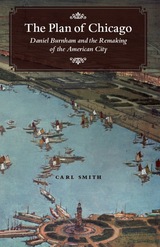 The Plan of Chicago: Daniel Burnham and the Remaking of the American City
Carl Smith
University of Chicago Press, 2006 Arguably the most influential document in the history of urban planning, Daniel Burnham’s 1909 Plan of Chicago, coauthored by Edward Bennett and produced in collaboration with the Commercial Club of Chicago, proposed many of the city’s most distinctive features, including its lakefront parks and roadways, the Magnificent Mile, and Navy Pier. Carl Smith’s fascinating history reveals the Plan’s central role in shaping the ways people envision the cityscape and urban life itself.
Smith’s concise and accessible narrative begins with a survey of Chicago’s stunning rise from a tiny frontier settlement to the nation’s second-largest city. He then offers an illuminating exploration of the Plan’s creation and reveals how it embodies the renowned architect’s belief that cities can and must be remade for the better. The Plan defined the City Beautiful movement and was the first comprehensive attempt to reimagine a major American city. Smith points out the ways the Plan continues to influence debates, even a century after its publication, about how to create a vibrant and habitable urban environment.
Richly illustrated and incisively written, his insightful book will be indispensable to our understanding of Chicago, Daniel Burnham, and the emergence of the modern city.
Plane Truth: Aviation's Real Impact on People and the Environment
Rose Bridger
Pluto Press, 2013 As aviation charges ahead to become one of the world's fastest growing industries, with passenger numbers and cargo volumes projected to double in the next 20 years, Plane Truth sounds a highly informed note of scepticism.
Rose Bridger provides a comprehensive account of aviation's impact, including how new airports are gobbling up farmland and wildlife habitats and inflicting noise and air pollution on communities. She reveals the extraordinary level of subsidy for the industry, from government expenditure on infrastructure to tax breaks, which helps to support the industry in the face of rising oil prices and the global economic downturn.
Plane Truth demolishes industry claims that fuel-efficient aircraft and alternative fuels can enable growth without increasing climate change and reveals the symbiotic relationship between aviation and the wider socio-economic problems facing humanity.
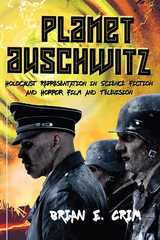 Planet Auschwitz: Holocaust Representation in Science Fiction and Horror Film and Television
Brian E. Crim
Rutgers University Press, 2020 Planet Auschwitz explores the diverse ways in which the Holocaust influences and shapes science fiction and horror film and television by focusing on notable contributions from the last fifty years. The supernatural and extraterrestrial are rich and complex spaces with which to examine important Holocaust themes - trauma, guilt, grief, ideological fervor and perversion, industrialized killing, and the dangerous afterlife of Nazism after World War II. Planet Auschwitz explores why the Holocaust continues to set the standard for horror in the modern era and asks if the Holocaust is imaginable here on Earth, at least by those who perpetrated it, why not in a galaxy far, far away? The pervasive use of Holocaust imagery and plotlines in horror and science fiction reflects both our preoccupation with its enduring trauma and our persistent need to “work through” its many legacies. Planet Auschwitz website (https://planetauschwitz.com)
 Planet Cosplay: Costume Play, Identity and Global Fandom
Edited by Paul Mountfort, Anne Peirson-Smith and Adam Geczy
Intellect Books, 2019 This book examines cosplay from a set of ground-breaking disciplinary approaches, highlighting the latest and emerging discourses around this popular cultural practice. Planet Cosplay is authored by widely-published scholars in this field, examining the central aspects of cosplay ranging from sources and sites to performance and play, from sex and gender to production and consumption. Topics discussed include the rise of cosplay as a cultural phenomenon and its role in personal, cultural, and global identities. Planet Cosplay provides a unique, multifaceted examination of the practice from theoretical bases including popular cultural studies, performance studies, gender studies, and transmedia studies. As the title suggests, the book’s purview is global, encompassing some of the main centers of cosplay throughout the United States Asia Europe and Australasia. Each of the chapters offers not only a set of entry points into its subject matter, but also a narrative of the development of cosplay and scholarly approaches to it.
 Planet Earth: The View from Space
D. James Baker
Harvard University Press, 1990 Intense heat and drought in the summer of 1988…greenhouse warming…acid rain…the ozone hole…rain forest destruction…Hurricane Hugo… The “endangered Earth” is making headlines around the world, and we are aware as never before of the fragility of the global environment and our own vulnerability to climate change. Yet, despite the technological advances of the last three decades, our knowledge of how the Earth’s systems work and interact remains incomplete at best. To determine environmental policies for the future, we need more information and better global climate models.
In Planet Earth, D. James Baker provides a concise, up-to-date overview of the ongoing international research efforts that will improve our ability to predict global climate change. In straightforward terms, Baker describes remote sensing from space. He reviews extant space-based satellites and their instruments and describes the areas in which operational and research missions are gathering ever-increasing data—on Earth–sun interaction, land vegetation patterns, ocean color, temperature, the atmosphere, the ice sheets of the polar regions, the shape and motion of the Earth’s crust, the Earth’s gravity field—which fill in gaps in our knowledge even as they raise new questions about critical global processes. In view of these questions and the subsequent need for more accurate global models, the satellite networks being planned for the 1990s will require state-of-the-art instrumentation, a new generation of supercomputers, and a high level of international cooperation if they are to succeed. Baker focuses on the United States initiative, Mission to Planet Earth, a long range attempt to study the planet as a whole using polar-orbiting, geostationary, and special orbit satellites coupled with a network of ground stations. In the concluding chapter, the author looks to the next century and examines the difficult long-term problems-of national security, technology transfer, data dissemination, cost, international coordination—that could undermine the achievement of the global operational system he proposes.
Planet Earth is a timely, well-illustrated introduction to Earth-observing satellite technology for the nonspecialist and specialist alike. It distills complex information that is otherwise available only in the technical literature. For those who follow space research, it will prove an indispensable guide.
Planet Hong Kong: Popular Cinema and the Art of Entertainment
David Bordwell
Harvard University Press, 2000 In Planet Hong Kong David Bordwell trains virtually every critical weapon in the cinema studies arsenal on a film industry that has, ironically, been marginalized by its own popular success. Film scholars will be grateful for its theoretical breadth and acuity; film fans will be happy with the graceful way Bordwell weaves into his chapters an extraordinary amount of telling anecdote; and filmmakers will be thrilled with his wonderfully revealing frame-by-frame analyses of Hong Kong cinema’s most exemplary moments.
Planet Management: Limits to Growth, Computer Simulation, and the Emergence of Global Spaces
Fernando Elichirigoity
Northwestern University Press, 1999 Planet Management is a study of, and contribution to, the history of "globality" — the emergence of a complex organization of politics, economics, and culture at a planetary rather than a national level. Drawing on historical archival research as well as recent theoretical work in science studies and critical theory, the book tell the story of the central role of technoscientific discourses and practices in the emergence of globality.
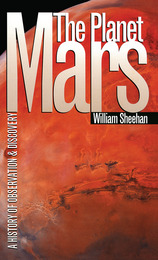 The Planet Mars: A History of Observation and Discovery
William Sheehan
University of Arizona Press, 1996 Twenty years after the Viking missions of the ’70s, we are finally going back to Mars. No fewer than ten missions are planned for the period between 1996 and 2003, and it is likely that human explorers will follow soon after--perhaps by the middle of the twenty-first century. When they do, they will owe much to the Mars of romance, to the early pioneers whose discoveries and disappointments are brought to life in The Planet Mars: A History of Observation and Discovery.
In this timely and vividly written account, William Sheehan traces human fascination with Mars back to the naked-eye observers of the planet. He recalls the early telescopic observers who first made out enigmatic markings and polar caps on its surface. Through lively historical anecdotes, he describes in detail the debate over the so-called canals of Mars, which encouraged speculation that the planet might be inhabited. Finally, Sheehan describes more recent theories about the planet, leading up to the present, when unmanned spacecraft have enabled us to make giant strides in exploration.
Well documented and sparked with human interest, this book will be a useful companion and guide in interpreting the barrage of headlines about Mars that is sure to come over the next few years. Amateurs will appreciate the contributions that have been made to Martian studies by people like themselves, and professionals will find much original material that has never before been published. The American Mars Global Surveyor is scheduled for launch in November 1996, and soon after the American Mars Pathfinder will make its way toward the red planet. A Russian mission consisting of an orbiter and two landers will be launched in October 1997. These space travelers will write a whole new chapter in the dramatic story of Mars, a planet whose exploration has only just begun. Astronomy Book Club main selection and selections of Book-of-the-Month Club and Quality Paperback Book Club.
 Planet of Microbes: The Perils and Potential of Earth's Essential Life Forms
Ted Anton
University of Chicago Press, 2017 We live in a time of unprecedented scientific knowledge about the origins of life on Earth. But if we want to grasp the big picture, we have to start small—very small. That’s because the real heroes of the story of life on Earth are microbes, the tiny living organisms we cannot see with the naked eye. Microbes were Earth’s first lifeforms, early anaerobic inhabitants that created the air we breathe. Today they live, invisible and seemingly invincible, in every corner of the planet, from Yellowstone’s scalding hot springs to Antarctic mountaintops to inside our very bodies—more than a hundred trillion of them. Don’t be alarmed though: many microbes are allies in achieving our—to say nothing of our planet’s—health.
In Planet of Microbes, Ted Anton takes readers through the most recent discoveries about microbes, revealing their unexpected potential to reshape the future of the planet. For years, we knew little about these invisible invaders, considering them as little more than our enemies in our fight against infectious disease. But the more we learn about microbes, the more it’s become clear that our very lives depend on them. They may also hold the answers to some of science’s most pressing problems, including how to combat a warming planet, clean up the environment, and help the body fight off a wide variety of diseases. Anton has spent years interviewing and working with the determined scientists who hope to harness the work of microbes, and he breaks down the science while also sharing incredible behind-the-scenes stories of the research taking place everywhere from microbreweries to Mars.
The world’s tiniest organisms were here more than three billion years before us. We live in their world, and Planet of Microbes at last gives these unsung heroes the recognition they deserve.
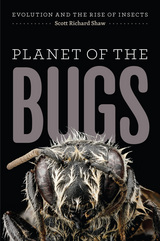 Planet of the Bugs: Evolution and the Rise of Insects
Scott Richard Shaw
University of Chicago Press, 2014 Dinosaurs, however toothy, did not rule the earth—and neither do humans. But what were and are the true potentates of our planet? Insects, says Scott Richard Shaw—millions and millions of insect species. Starting in the shallow oceans of ancient Earth and ending in the far reaches of outer space—where, Shaw proposes, insect-like aliens may have achieved similar preeminence—Planet of the Bugs spins a sweeping account of insects’ evolution from humble arthropod ancestors into the bugs we know and love (or fear and hate) today.
Leaving no stone unturned, Shaw explores how evolutionary innovations such as small body size, wings, metamorphosis, and parasitic behavior have enabled insects to disperse widely, occupy increasingly narrow niches, and survive global catastrophes in their rise to dominance. Through buggy tales by turns bizarre and comical—from caddisflies that construct portable houses or weave silken aquatic nets to trap floating debris, to parasitic wasp larvae that develop in the blood of host insects and, by storing waste products in their rear ends, are able to postpone defecation until after they emerge—he not only unearths how changes in our planet’s geology, flora, and fauna contributed to insects’ success, but also how, in return, insects came to shape terrestrial ecosystems and amplify biodiversity. Indeed, in his visits to hyperdiverse rain forests to highlight the current insect extinction crisis, Shaw reaffirms just how crucial these tiny beings are to planetary health and human survival.
In this age of honeybee die-offs and bedbugs hitching rides in the spines of library books, Planet of the Bugs charms with humor, affection, and insight into the world’s six-legged creatures, revealing an essential importance that resonates across time and space.
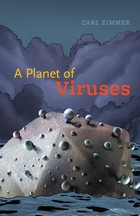 A Planet of Viruses
Carl Zimmer
University of Chicago Press, 2011
For years, scientists have been warning us that a pandemic was all but inevitable. Now it's here, and the rest of us have a lot to learn.
Fortunately, science writer Carl Zimmer is here to guide us. In this compact volume, he tells the story of how the smallest living things known to science can bring an entire planet of people to a halt--and what we can learn from how we've defeated them in the past.
Planet of Viruses covers such threats as Ebola, MERS, and chikungunya virus; tells about recent scientific discoveries, such as a hundred-million-year-old virus that infected the common ancestor of armadillos, elephants, and humans; and shares new findings that show why climate change may lead to even deadlier outbreaks. Zimmer’s lucid explanations and fascinating stories demonstrate how deeply humans and viruses are intertwined. Viruses helped give rise to the first life-forms, are responsible for many of our most devastating diseases, and will continue to control our fate for centuries. Thoroughly readable, and, for all its honesty about the threats, as reassuring as it is frightening, A Planet of Viruses is a fascinating tour of a world we all need to better understand.
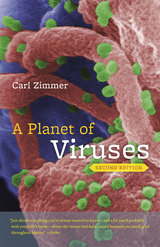 A Planet of Viruses: Second Edition
Carl Zimmer
University of Chicago Press, 2015 For years, scientists have been warning us that a pandemic was all but inevitable. Now it's here, and the rest of us have a lot to learn.
Fortunately, science writer Carl Zimmer is here to guide us. In this compact volume, he tells the story of how the smallest living things known to science can bring an entire planet of people to a halt--and what we can learn from how we've defeated them in the past.
Planet of Viruses covers such threats as Ebola, MERS, and chikungunya virus; tells about recent scientific discoveries, such as a hundred-million-year-old virus that infected the common ancestor of armadillos, elephants, and humans; and shares new findings that show why climate change may lead to even deadlier outbreaks. Zimmer’s lucid explanations and fascinating stories demonstrate how deeply humans and viruses are intertwined. Viruses helped give rise to the first life-forms, are responsible for many of our most devastating diseases, and will continue to control our fate for centuries. Thoroughly readable, and, for all its honesty about the threats, as reassuring as it is frightening, A Planet of Viruses is a fascinating tour of a world we all need to better understand.
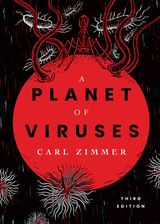 A Planet of Viruses: Third Edition
Carl Zimmer
University of Chicago Press, 2021 In 2020, an invisible germ—a virus—wholly upended our lives. We’re most familiar with the viruses that give us colds or Covid-19. But viruses also cause a vast range of other diseases, including one disorder that makes people sprout branch-like growths as if they were trees. Viruses have been a part of our lives for so long that we are actually part virus: the human genome contains more DNA from viruses than our own genes. Meanwhile, scientists are discovering viruses everywhere they look: in the soil, in the ocean, even in deep caves miles underground.
Fully revised and updated, with new illustrations and a new chapter about coronaviruses and the spread of Covid-19, this third edition of Carl Zimmer’s A Planet of Viruses pulls back the veil on this hidden world. It presents the latest research on how viruses hold sway over our lives and our biosphere, how viruses helped give rise to the first life-forms, how viruses are producing new diseases, how we can harness viruses for our own ends, and how viruses will continue to control our fate as long as life endures.
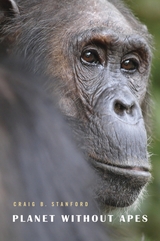 Planet Without Apes
Craig B. Stanford
Harvard University Press, 2012 Planet Without Apes demands that we consider whether we can live with the consequences of wiping our closest relatives off the face of the Earth. Leading primatologist Craig Stanford warns that extinction of the great apes—chimpanzees, bonobos, gorillas, and orangutans—threatens to become a reality within just a few human generations. We are on the verge of losing the last links to our evolutionary past, and to all the biological knowledge about ourselves that would die along with them. The crisis we face is tantamount to standing aside while our last extended family members vanish from the planet.
Stanford sees great apes as not only intelligent but also possessed of a culture: both toolmakers and social beings capable of passing cultural knowledge down through generations. Compelled by his field research to take up the cause of conservation, he is unequivocal about where responsibility for extinction of these species lies. Our extermination campaign against the great apes has been as brutal as the genocide we have long practiced on one another. Stanford shows how complicity is shared by people far removed from apes’ shrinking habitats. We learn about extinction’s complex links with cell phones, European meat eaters, and ecotourism, along with the effects of Ebola virus, poverty, and political instability.
Even the most environmentally concerned observers are unaware of many specific threats faced by great apes. Stanford fills us in, and then tells us how we can redirect the course of an otherwise bleak future.
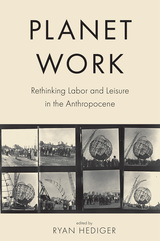 Planet Work: Rethinking Labor and Leisure in the Anthropocene
Ryan Hediger
Bucknell University Press, 2023 Labor and labor norms orient much of contemporary life, organizing our days and years and driving planetary environmental change. Yet, labor, as a foundational set of values and practices, has not been sufficiently interrogated in the context of the environmental humanities for its profound role in climate change and other crises. This collection of essays demonstrates the urgent need to rethink models and customs of labor and leisure in the Anthropocene. Recognizing the grave traumas and hazards plaguing planet Earth, contributors expose fundamental flaws in ideas of work and search for ways to redirect cultures toward more sustainable modes of life. These essays evaluate Anthropocene frames of interpretation, dramatize problems and potentials in regimes of labor, and explore leisure practices such as walking and storytelling as modes of recasting life, while a coda advocates reviving notions of work as craft.
 Planetarity from Below: Decolonial Ecopoetics of Migration and Diaspora
Emily Yu Zong
University of Michigan Press, 2026 What can migrant ecologies teach us about collective planetary futures? In Planetarity from Below, Emily Yu Zong argues that modern freedom has framed migration in anthropocentric terms, neglecting that migration is also an ecological process. Analyzing a diverse body of migration literature across Australia, North America, and China, she explores how these works unlearn modern capitalist systems of property, individualism, and freedom while imagining collaborative and ecological survival from the margins.
Through short stories, memoirs, speculative fiction, poetry, and documentary films, Zong unpacks a decolonial migrant ecopoetics, revealing a pluralist method of worldmaking—from Australia’s oceanic refugee camps, Indigenous Canadian land, and Chinese migrant worker sweatshops, to climate futures. These migrant ecologies imagine freedom “from below” not simply as individual survival or assimilation but as an unruly and contingent process of shared creativity with animals, waters, minerals, waste, and technology.
Shifting environmental ethics from individual morality to a political ecology of sustaining life in precarity, Zong introduces decolonial knowledges, imaginations, and praxes that help us expand justice and freedom beyond the human, asking how borderland subjectivities can open new possibilities for multispecies flourishing.
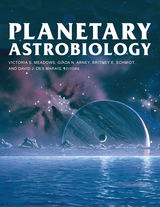 Planetary Astrobiology
Edited by Victoria S. Meadows, Giada N. Arney, Britney E. Schmidt, and David J. Des Marais
University of Arizona Press, 2020 Are we alone in the universe? How did life arise on our planet? How do we search for life beyond Earth? These profound questions excite and intrigue broad cross sections of science and society. Answering these questions is the province of the emerging, strongly interdisciplinary field of astrobiology. Life is inextricably tied to the formation, chemistry, and evolution of its host world, and multidisciplinary studies of solar system worlds can provide key insights into processes that govern planetary habitability, informing the search for life in our solar system and beyond. Planetary Astrobiology brings together current knowledge across astronomy, biology, geology, physics, chemistry, and related fields, and considers the synergies between studies of solar systems and exoplanets to identify the path needed to advance the exploration of these profound questions.
Planetary Astrobiology represents the combined efforts of more than seventy-five international experts consolidated into twenty chapters and provides an accessible, interdisciplinary gateway for new students and seasoned researchers who wish to learn more about this expanding field. Readers are brought to the frontiers of knowledge in astrobiology via results from the exploration of our own solar system and exoplanetary systems. The overarching goal of Planetary Astrobiology is to enhance and broaden the development of an interdisciplinary approach across the astrobiology, planetary science, and exoplanet communities, enabling a new era of comparative planetology that encompasses conditions and processes for the emergence, evolution, and detection of life.
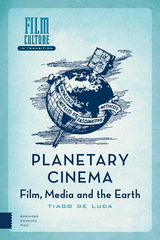 Planetary Cinema: Film, Media and the Earth
Tiago de Luca
Amsterdam University Press, 2022 The story is now familiar. In the late 1960s humanity finally saw photographic evidence of the Earth in space for the first time. According to this narrative, the impact of such images in the consolidation of a planetary consciousness is yet to be matched. This book tells a different story. It argues that this narrative has failed to account for the vertiginous global imagination underpinning the media and film culture of the late nineteenth century and beyond. Panoramas, giant globes, world exhibitions, photography and stereography: all promoted and hinged on the idea of a world made whole and newly visible. When it emerged, cinema did not simply contribute to this effervescent globalism so much as become its most significant and enduring manifestation. Planetary Cinema proposes that an exploration of that media culture can help us understand contemporary planetary imaginaries in times of environmental collapse. Engaging with a variety of media, genres and texts, the book sits at the intersection of film/media history and theory/ philosophy, and it claims that we need this combined approach and expansive textual focus in order to understand the way we see the world.
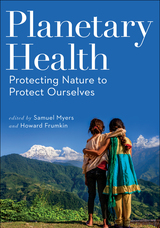 Planetary Health: Protecting Nature to Protect Ourselves
Edited by Samuel Myers and Howard Frumkin
Island Press, 2020 Human health depends on the health of the planet. Earth’s natural systems—the air, the water, the biodiversity, the climate—are our life support systems. Yet climate change, biodiversity loss, scarcity of land and freshwater, pollution and other threats are degrading these systems. The emerging field of planetary health aims to understand how these changes threaten our health and how to protect ourselves and the rest of the biosphere.
Planetary Health: Protecting Nature to Protect Ourselves provides a readable introduction to this new paradigm. With an interdisciplinary approach, the book addresses a wide range of health impacts felt in the Anthropocene, including food and nutrition, infectious disease, non-communicable disease, dislocation and conflict, and mental health. It also presents strategies to combat environmental changes and its ill-effects, such as controlling toxic exposures, investing in clean energy, improving urban design, and more. Chapters are authored by widely recognized experts.
The result is a comprehensive and optimistic overview of a growing field that is being adopted by researchers and universities around the world. Students of public health will gain a solid grounding in the new challenges their profession must confront, while those in the environmental sciences, agriculture, the design professions, and other fields will become familiar with the human consequences of planetary changes. Understanding how our changing environment affects our health is increasingly critical to a variety of disciplines and professions. Planetary Health is the definitive guide to this vital field.
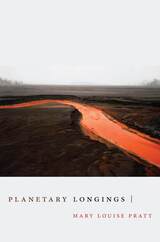 Planetary Longings
Mary Louise Pratt
Duke University Press, 2022 In Planetary Longings eminent cultural theorist Mary Louise Pratt posits that the last decade of the twentieth century and the first decades of the twenty-first mark a turning point in the human and planetary condition. Examining the forces of modernity, neoliberalism, coloniality, and indigeneity in their pre- and postmillennial forms, Pratt reflects on the crisis of futurity that accompanies the millennial turn in relation to environmental disaster and to the new forms of thinking it has catalyzed. She turns to 1990s Latin American vernacular culture, literary fiction, and social movements, which simultaneously registered neoliberalism’s devastating effects and pursued alternate ways of knowing and living. Tracing the workings of colonialism alongside the history of anticolonial struggles and Indigenous mobilizations in the Americas, Pratt analyzes indigeneity both as a key index of coloniality, neoliberal extraction, and ecological destruction, and as a source for alternative modes of thought and being. Ultimately, Pratt demonstrates that the changes on either side of the millennium have catalyzed new forms of world-making and knowledge-making in the face of an unknowable and catastrophic future.
Planetary Rings
Richard Greenberg
University of Arizona Press, 1984 Published in 1985, Planetary Rings brought together scientist from a variety of disciplines to the study of planetary rings to provide a textbook for graduate students and researchers in related fields. It introduced newcomers to the subject and addressed issues at the forefront of ring research at the time.
At the time of it's publication, the editors wrote, "it is our hope that this book will become out-of-date quickly, that new observations and theoretical connections will continue to revolutionize our knowledge of planetary rings."
Planetary Satellites
Joseph A. Burns
University of Arizona Press, 1977 Published in 1977, this source book on natural satellites brings together thirty-four distinguished contributors from various fields of satellite astronomy to offer a thorough examination of Orbits and Dynamical Evolution.
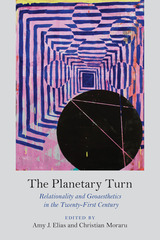 The Planetary Turn: Relationality and Geoaesthetics in the Twenty-First Century
Edited by Amy J. Elias and Christian Moraru
Northwestern University Press, 2015 A groundbreaking essay collection that pursues the rise of geoculture as an essential framework for arts criticism, The Planetary Turn shows how the planet—as a territory, a sociopolitical arena, a natural space of interaction for all earthly life, and an artistic theme—is increasingly the conceptual and political dimension in which twenty-first-century writers and artists picture themselves and their work. In an introduction that comprehensively defines the planetary model of art, culture, and cultural-aesthetic interpretation, the editors explain how the living planet is emerging as distinct from older concepts of globalization, cosmopolitanism, and environmentalism and is becoming a new ground for exciting work in contemporary literature, visual and media arts, and social humanities. Written by internationally recognized scholars, the twelve essays that follow illustrate the unfolding of a new vision of potential planetary community that retools earlier models based on the nation-state or political “blocs” and reimagines cultural, political, aesthetic, and ethical relationships for the post–Cold War era.
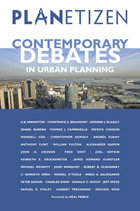 Planetizen's Contemporary Debates in Urban Planning
Edited by Abhijeet Chavan, Christian Peralta, and Christopher Steins
Island Press, 2007 Planetizen's Contemporary Debates in Urban Planning is a fascinating review of major topics and issues discussed in the field of urban planning, assembled by editors at Planetizen, the leading source of news and information for the planning and development community on the web. The book brings together a wide range of editorial and discussion topics, coupled with commentary and overviews to create an enlightening record of the continuously evolving philosophy of building and managing cities.
The book's contributors include the most well-known experts in the planning and design fields, among them James Howard Kunstler, Alex Garvin, Andres Duany, Joel Kotkin, and Wendell Cox. These and other prominent thinkers offer passionate debates and thought-provoking commentary on the most important and controversial topics in the field of urban planning and design: gentrification, eminent domain, the philosophical divide between the Smart Growth community, libertarians and New Urbanists, regional growth patterns, urban design trends, transportation systems, and reaction to disasters such as Katrina and 9/11 that changed the way we look at cities and security.
Planetizen's Contemporary Debates in Urban Planning provides readers with a unique and accessible introduction to a broad array of ideas and perspectives. With the increasing awareness of the need for sound urban planning to ensure the economic, environmental, and social health of modern society, Planetizen's Contemporary Debates in Urban Planning gives professionals in the field and concerned citizens alike a deeper understanding of the critical, complex issues that continue to challenge urban planners, designers, and developers.
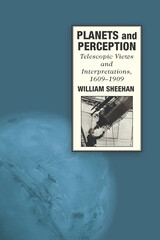 Planets and Perception: Telescopic Views and Interpretations, 1609-1909
William Sheehan
University of Arizona Press, 1988 Astronomy Book of the Year, Mercury Magazine (Astronomical Society of the Pacific)
Do we really know what we see through a telescope? How does the ocular system construct planetary images, and how does the brain interpret them? Drawing on both astronomical and psychological data, William Sheehan offers the first systematic analysis of the perceptual and cognitive factors that go into the initial structuring of a planetary image and its subsequent elaboration. Sheehan details the development of lunar and planetary astronomy, beginning with Galileo’s study of the moon, and focuses particularly on the discover of “canals” on Mars. Through each episode he underscores a perceptual or psychological theme, such as the importance of differences in vision, tachistoscopic perceptual effects, the influence of expectation and suggestion on what one sees, and the social psychology of scientific discovery. Planets and Perception is a provocative book that will intrigue anyone who has ever looked through a telescope. In addition, it offers the psychologically oriented reader a case history in the processes of perception unlike any other in the literature.
Planets in Peril: A Critical Study of C. S. Lewis's Ransom Trilogy
David C. Downing
University of Massachusetts Press, 1992 A critical study of C.S. Lewis's ""Ransom Trilogy"" which analyses Lewis's methods and meanings, concentrating on this trilogy but also including relevant secondary work. Lewis's literary scholarship and display of Christian values are incorporated into this discussion.
Planets, Stars and Nebulae Studied with Photopolarimetry
Edited by T. Gehrels
University of Arizona Press, 1974 “The polarization study of celestial objects is a valuable part of optical astronomy, and the author has done exceptionally well in bringing together contributions treating all aspects of the polarimetry field. . . . The first section contains a fine introduction and an excellent and definitive history of the subject. . . . The volume is well illustrated. . . . Highly recommended.”—Choice
“The high quality of this book is clearly due to strict editorial attention to each paper and the discussions. Gehrels’s book will surely stand for many years as the fundamental reference source for polarization studies in astronomy as well as in atmospheric physics.”—Journal of the Association of Lunar and Planetary Observers
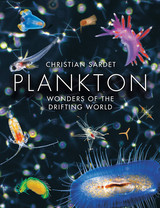 Plankton: Wonders of the Drifting World
Christian Sardet
University of Chicago Press, 2015 Ask anyone to picture a bird or a fish and a series of clear images will immediately come to mind. Ask the same person to picture plankton and most would have a hard time conjuring anything beyond a vague squiggle or a greyish fleck. This book will change that forever.
Viewing these creatures up close for the first time can be a thrilling experience—an elaborate but hidden world truly opens up before your eyes. Through hundreds of close-up photographs, Plankton transports readers into the currents, where jeweled chains hang next to phosphorescent chandeliers, spidery claws jut out from sinuous bodies, and gelatinous barrels protect microscopic hearts. The creatures’ vibrant colors pop against the black pages, allowing readers to examine every eye and follow every tentacle. Jellyfish, tadpoles, and bacteria all find a place in the book, representing the broad scope of organisms dependent on drifting currents.
Christian Sardet’s enlightening text explains the biological underpinnings of each species while connecting them to the larger living world. He begins with plankton’s origins and history, then dives into each group, covering ctenophores and cnidarians, crustaceans and mollusks, and worms and tadpoles. He also demonstrates the indisputable impact of plankton in our lives. Plankton drift through our world mostly unseen, yet they are diverse organisms that form ninety-five percent of ocean life. Biologically, they are the foundation of the aquatic food web and consume as much carbon dioxide as land-based plants. Culturally, they have driven new industries and captured artists’ imaginations.
While scientists and entrepreneurs are just starting to tap the potential of this undersea forest, for most people these pages will represent uncharted waters. Plankton is a spectacular journey that will leave readers seeing the ocean in ways they never imagined.
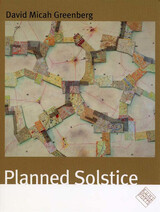 Planned Solstice
David Micah Greenberg
University of Iowa Press, 2003 In David Greenberg's Planned Solstice, the natural and material worlds are provocatively juxtaposed, so as to affirm serious explorations of our place within them. Greenberg's considerations are vast, invigorating, and challenging; his poems take on charged historical and political subjects—civil wars at home and abroad, the World Trade Center's destruction, issues of race and difference—and handle them with utter aplomb and freshness.
These poems move from imagistic inquiry toward political coherence and a sense of divided place. The book's four-part structure also echoes seasonal change and seeks among extreme—solstice-like—experiences the hope that separate lives may speak to one another. Throughout, images of contested growth, natural and human, ask the reader to see what is both organic and structural in settings of consciousness, space, and politics—to find what is free and what is also formed by consequence. Greenberg's are not facile pronouncements; they come to us after such rigorous deliberation, such painstaking examination, that they cannot but carry a hint of the oracular about them.
The poems in Planned Solstice should be read, re-read, and re-read again, as they yield a new crop, “a decision of field,"”every time one dares to venture in
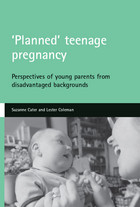 'Planned' teenage pregnancy: Perspectives of young parents from disadvantaged backgrounds
Suzanne Cater and Lester Coleman
Bristol University Press, 2006 This in-depth study explores the motivations for 'planned' teenage pregnancy in England. The findings have important implications for the Teenage Pregnancy Strategy and the increasing political agenda on young people and health.The report is based on 51 in-depth interviews, undertaken among teenagers in six relatively disadvantaged locations who reported their pregnancy as 'planned' (41 women and 10 men). Key findings include:·Young women report varied accounts of the extent to which their pregnancy was planned.Young women's childhood and background act as contributing factors to 'planning' a pregnancy.More explicit and direct influences include viewing pregnancy as a chance to gain a new identity and change direction in life. ·[vbTab]·[vbTab]·[vbTab]·[vbTab]The report includes numerous quotations from young people and documents two contrasting case studies. 'Planned' teenage pregnancy will be of interest to practitioners, policy-makers and researchers in the teenage pregnancy field, including youth workers, Connexions PAs, social workers, and teachers who work with young people before conception, as well as teenage pregnancy co-ordinators, teenage-parent support workers, midwives and health visitors who work closely with young parents or parents-to-be.
Planning and the Urban Community
Harvey S. Perloff
University of Pittsburgh Press, 1961 This book presents a broad overview of the planning profession, and discusses many of the major problems encountered in urbanism and planning. The essays discuss topics that include education, the urban community, the place of planning in governmental hierarchy, and its relationship to urban political dynamics.
 Planning Armageddon: British Economic Warfare and the First World War
Nicholas A. Lambert
Harvard University Press, 2012 Before the First World War, the British Admiralty conceived a plan to win rapid victory in the event of war with Germany-economic warfare on an unprecedented scale.This secret strategy called for the state to exploit Britain's effective monopolies in banking, communications, and shipping-the essential infrastructure underpinning global trade-to create a controlled implosion of the world economic system.
In this revisionist account, Nicholas Lambert shows in lively detail how naval planners persuaded the British political leadership that systematic disruption of the global economy could bring about German military paralysis. After the outbreak of hostilities, the government shied away from full implementation upon realizing the extent of likely collateral damage-political, social, economic, and diplomatic-to both Britain and neutral countries. Woodrow Wilson in particular bristled at British restrictions on trade. A new, less disruptive approach to economic coercion was hastily improvised. The result was the blockade, ostensibly intended to starve Germany. It proved largely ineffective because of the massive political influence of economic interests on national ambitions and the continued interdependencies of all countries upon the smooth functioning of the global trading system.
Lambert's interpretation entirely overturns the conventional understanding of British strategy in the early part of the First World War and underscores the importance in any analysis of strategic policy of understanding Clausewitz's "political conditions of war."
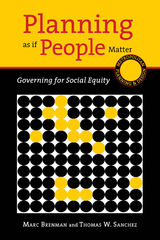 Planning as if People Matter: Governing for Social Equity
Marc Brenman and Thomas W. Sanchez
Island Press, 2012 American communities are changing fast: ethnic minority populations are growing, home ownership is falling, the number of people per household is going up, and salaries are going down. According to Marc Brenman and Thomas W. Sanchez, the planning field is largely unprepared for these fundamental shifts. If planners are going to adequately serve residents of diverse ages, races, and income levels, they need to address basic issues of equity. Planning as if People Matter offers practical solutions to make our communities more livable and more equitable for all residents.
While there are many books on environmental justice, relatively few go beyond theory to give real-world examples of how better planning can level inequities. In contrast, Planning as if People Matter is written expressly for planning practitioners, public administrators, policy-makers, activists, and students who must directly confront these challenges. It provides new insights about familiar topics such as stakeholder participation and civil rights. And it addresses emerging issues, including disaster response, new technologies, and equity metrics. Far from an academic treatment, Planning as if People Matter is rooted in hard data, on-the-ground experience, and current policy analysis.
In this tumultuous period of economic change, there has never been a better time to reform the planning process. Brenman and Sanchez point the way toward a more just social landscape.
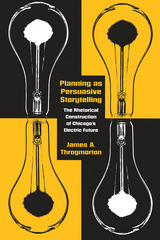 Planning as Persuasive Storytelling: The Rhetorical Construction of Chicago's Electric Future
James A. Throgmorton
University of Chicago Press, 1996 Planning as Persuasive Storytelling is a revealing look at the world of political conflict surrounding the Commonwealth Edison Company's ambitious nuclear power plant construction program in northern Illinois during the 1980s. Examining the clash between the utility, consumer groups, community-based groups, the Illinois Commerce Commission, and the City of Chicago, Throgmorton argues that planning can best be thought of as a form of persuasive storytelling. A planner's task is to write future-oriented texts that employ language and figures of speech designed to persuade their constituencies of the validity of their vision. Juxtaposing stories about efforts to construct Chicago's electric future, Planning as Persuasive Storytelling suggests a shift in how we think about planning. In order to account for the fragmented and conflicted nature of contemporary American life and politics, that shift would be away from "science" and the "experts" and toward rhetoric and storytelling.
Planning Education Reforms in Developing Countries: The Contigency Approach
Dennis A. Rondinelli, John Middleton, and Adriaan Verspoor
Duke University Press, 1990 This work, the first to apply contingency theory to education reform planning, is particularly useful in that it has applications to planning both in developing countries and in the United States and Europe. The basic approach applies to a wide variety of development programs and will influence project management and policy administration.
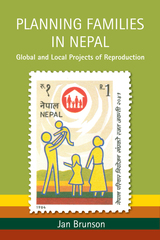 Planning Families in Nepal: Global and Local Projects of Reproduction
Brunson, Jan
Rutgers University Press, 2016 Based on almost a decade of research in the Kathmandu Valley, Planning Families in Nepal offers a compelling account of Hindu Nepali women as they face conflicting global and local ideals regarding family planning. Promoting a two-child norm, global family planning programs have disseminated the slogan, “A small family is a happy family,” throughout the global South. Jan Brunson examines how two generations of Hindu Nepali women negotiate this global message of a two-child family and a more local need to produce a son. Brunson explains that while women did not prefer sons to daughters, they recognized that in the dominant patrilocal family system, their daughters would eventually marry and be lost to other households. As a result, despite recent increases in educational and career opportunities for daughters, mothers still hoped for a son who would bring a daughter-in-law into the family and care for his aging parents. Mothers worried about whether their modern, rebellious sons would fulfill their filial duties, but ultimately those sons demonstrated an enduring commitment to living with their aging parents. In the context of rapid social change related to national politics as well as globalization—a constant influx of new music, clothes, gadgets, and even governments—the sons viewed the multigenerational family as a refuge. Throughout Planning Families in Nepal, Brunson raises important questions about the notion of “planning” when applied to family formation, arguing that reproduction is better understood as a set of local and global ideals that involve actors with desires and actions with constraints, wrought with delays, stalling, and improvisation.
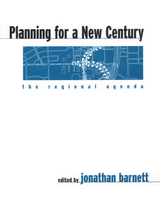 Planning for a New Century: The Regional Agenda
Edited by Jonathan Barnett
Island Press, 2000 Across the United States, issues such as sustainability, smart growth, and livable communities are making headlines. Planning for a New Century brings together leading thinkers in the fields of planning, urban design, education, welfare, and housing to examine those issues and to consider the ways in which public policies have helped create—and can help solve—many of the problems facing our communities. Each chapter identifies issues, provides background, and offers specific policy suggestions for federal, state, and local initiatives. Topics examined include: - the relation of existing growth management policies to social equity, as well as how regional growth management measures can make new development more sustainable
- how an obscure technical procedure in highway design becomes a de facto regional plan
- ways in which local governments can promote environmental preservation and better-designed communities by rewriting local zoning and subdivision ordinances
- why alleviating housing shortages and slum conditions has resulted in a lack of affordable housing, and how that problem can be solved
- how business improvement districts can make downtowns cleaner, safer, and more welcoming to workers and visitors
In addition, the book features chapters on public safety, education, and welfare reform that include proposals that will help make regional growth management easier as inner-city crime is reduced, schools are improved, and concentrations of extreme poverty are eliminated. Planning for the New Century brings together current academic research with pressing public policy concerns, and will be a useful resource for policymakers at all levels of government, for planners and architects, and for students and scholars of urban planning and design, and urban studies.
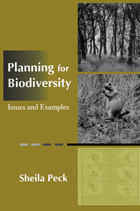 Planning for Biodiversity: Issues And Examples
Sheila Peck
Island Press, 1998 A significant consequence of the development of natural landscapes is habitat loss and fragmentation that results in widespread loss of biological diversity. While scientists have made great strides in determining principles and concepts fundamental to preserving biodiversity, their work will have little impact unless it is understood and implemented by those who are making on-the-ground decisions about land use. Planning for Biodiversity provides an accessible introduction to ecological concepts for planning professionals and students. Sheila Peck explains why planners should be concerned with habitat preservation and presents practical approaches to incorporating conservation principles into planning efforts. The book. introduces a clear framework for understanding biodiversity explains concepts related to ecosystem structure and function discusses the effects of size and connectivity on habitat quality and species movement suggests conservation priorities at different scales presents elements of reserve design examines types and sources of information considers the causes of uncertainty in biodiversity planning and the need for monitoring and adaptive management. In each chapter, Peck presents case studies that explore the practical implications of the concepts examined, and provides contact information for each group involved in the case. Case studies include the Beaverhead/Deerlodge National Forest, Montana; Pinhook Swamp Linkage, northeastern Florida; National Gap Analysis Program; CALFED Bay-Delta Program, California; and numerous others. In addition, she includes planning guidelines which summarize the main points of the chapters, and a useful glossary of ecological terms. Planning for Biodiversity synthesizes and explains important ecological concepts and represents the first guide for planners that clearly details how to incorporate conservation plans into their work. Planners, landscape architects and designers, planning and design students, developers, local officials, and anyone interested in designing and developing more ecologically sound land-use projects will find the book an invaluable resource.
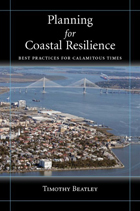 Planning for Coastal Resilience: Best Practices for Calamitous Times
Timothy Beatley
Island Press, 2009 Climate change is predicted to increase the frequency and magnitude of coastal storms around the globe, and the anticipated rise of sea levels will have enormous impact on fragile and vulnerable coastal regions. In the U.S., more than 50% of the population inhabits coastal areas. In Planning for Coastal Resilience, Tim Beatley argues that, in the face of such threats, all future coastal planning and management must reflect a commitment to the concept of resilience. In this timely book, he writes that coastal resilience must become the primary design and planning principle to guide all future development and all future infrastructure decisions. Resilience, Beatley explains, is a profoundly new way of viewing coastal infrastructure—an approach that values smaller, decentralized kinds of energy, water, and transport more suited to the serious physical conditions coastal communities will likely face. Implicit in the notion is an emphasis on taking steps to build adaptive capacity, to be ready ahead of a crisis or disaster. It is anticipatory, conscious, and intentional in its outlook. After defining and explaining coastal resilience, Beatley focuses on what it means in practice. Resilience goes beyond reactive steps to prevent or handle a disaster. It takes a holistic approach to what makes a community resilient, including such factors as social capital and sense of place. Beatley provides case studies of five U.S. coastal communities, and “resilience profiles” of six North American communities, to suggest best practices and to propose guidelines for increasing resilience in threatened communities.
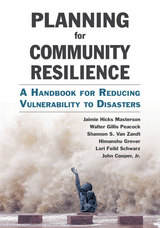 Planning for Community Resilience: A Handbook for Reducing Vulnerability to Disasters
Jaimie Hicks Masterson, Walter Gillis Peacock, Shannon S. Van Zandt, Himanshu Grover, Lori Feild Schwarz, and John T. Cooper, Jr.
Island Press, 2015 When disaster strikes, the damage isn’t just physical—it’s social, economic, and deeply uneven. Rising seas, stronger storms, and growing inequality have made resilience planning an urgent priority for communities everywhere. But true resilience goes beyond rebuilding; it means creating places that can adapt, recover, and emerge stronger for everyone who calls them home.
Planning for Community Resilience offers a hands-on approach to integrating hazard mitigation with community development. Drawing from post-hurricane recovery efforts in Galveston, Texas, the authors present a clear process using the Disaster Impacts Model to assess risk—evaluating physical exposure, infrastructure vulnerabilities, and social fragility. The framework helps communities identify where they’re most at risk and how to make smarter, more inclusive planning decisions.
From city planners and elected officials to floodplain managers and citizen advocates, this guide equips local leaders with a practical method for building resilience from the ground up—tailored to local conditions, rooted in equity, and grounded in data. Whether preparing for the next storm or rethinking land use in its aftermath, Planning for Community Resilience is a vital tool for communities seeking to protect lives, strengthen neighborhoods, and plan with long-term vision.
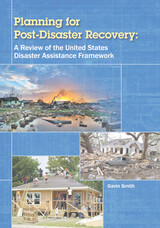 Planning for Post-Disaster Recovery: A Review of the United States Disaster Assistance Framework
Gavin Smith
Island Press, 2012 The failure to plan for disaster recovery results in a process of rebuilding that often presages the next disaster. It also limits the collective maximization of governmental, nonprofit, and private resources, including those resources that are available at the community level. As individuals, groups, communities, and organizations routinely struggle to recover from disasters, they are beset by a duplication of efforts, poor interorganizational coordination, the development and implementation of policies that are not shaped by local needs, and the spread of misinformation. Yet investment in pre-event planning for post-disaster recovery remains low.
Although researchers pointed to this problem at least twenty-five years ago, an unfortunate reality remains: disaster recovery is the least understood aspect of emergency management among both scholars and practitioners. In addition, the body of knowledge that does exist has not been effectively disseminated to those who engage in disaster recovery activities.
Planning for Post-Disaster Recoveryblends what we know about disaster recovery from the research literature with an analysis of existing practice to uncover problems and recommend solutions. It is intended for hazard scholars, practitioners, and others who have not assimilated or acted upon the existing body of knowledge, or who are unexpectedly drawn into the recovery process following a disaster.
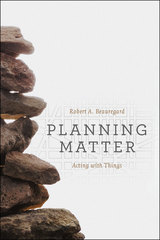 Planning Matter: Acting with Things
Robert A. Beauregard
University of Chicago Press, 2015 City and regional planners talk constantly about the things of the world—from highway interchanges and retention ponds to zoning documents and conference rooms—yet most seem to have a poor understanding of the materiality of the world in which they’re immersed. Too often planners treat built forms, weather patterns, plants, animals, or regulatory technologies as passively awaiting commands rather than actively involved in the workings of cities and regions.
In the ambitious and provocative Planning Matter, Robert A. Beauregard sets out to offer a new materialist perspective on planning practice that reveals the many ways in which the nonhuman things of the world mediate what planners say and do. Drawing on actor-network theory and science and technology studies, Beauregard lays out a framework that acknowledges the inevitable insufficiency of our representations of reality while also engaging more holistically with the world in all of its diversity—including human and nonhuman actors alike.
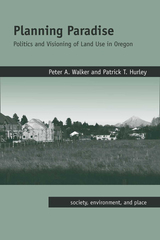 Planning Paradise: Politics and Visioning of Land Use in Oregon
By Peter A. Walker and Patrick T. Hurley
University of Arizona Press, 2011 “Sprawl” is one of the ugliest words in the American political lexicon. Virtually no one wants America’s rural landscapes, farmland, and natural areas to be lost to bland, placeless malls, freeways, and subdivisions. Yet few of America’s fast-growing rural areas have effective rules to limit or contain sprawl.
Oregon is one of the nation’s most celebrated exceptions. In the early 1970s Oregon established the nation’s first and only comprehensive statewide system of land-use planning and largely succeeded in confining residential and commercial growth to urban areas while preserving the state’s rural farmland, forests, and natural areas. Despite repeated political attacks, the state’s planning system remained essentially politically unscathed for three decades. In the early- and mid-2000s, however, the Oregon public appeared disenchanted, voting repeatedly in favor of statewide ballot initiatives that undermined the ability of the state to regulate growth. One of America’s most celebrated “success stories” in the war against sprawl appeared to crumble, inspiring property rights activists in numerous other western states to launch copycat ballot initiatives against land-use regulation.
This is the first book to tell the story of Oregon’s unique land-use planning system from its rise in the early 1970s to its near-death experience in the first decade of the 2000s. Using participant observation and extensive original interviews with key figures on both sides of the state’s land use wars past and present, this book examines the question of how and why a planning system that was once the nation’s most visible and successful example of a comprehensive regulatory approach to preventing runaway sprawl nearly collapsed.
Planning Paradise is tough love for Oregon planning. While admiring much of what the state’s planning system has accomplished, Walker and Hurley believe that scholars, professionals, activists, and citizens engaged in the battle against sprawl would be well advised to think long and deeply about the lessons that the recent struggles of one of America’s most celebrated planning systems may hold for the future of land-use planning in Oregon and beyond.
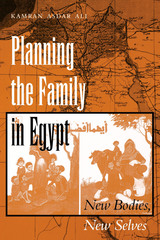 Planning the Family in Egypt: New Bodies, New Selves
By Kamran Asdar Ali
University of Texas Press, 2002 In this ethnographic study, the author examines the policies and practices of family planning programs in Egypt to see how an elitist, Western-informed state attempts to create obliging citizens. The state sees voluntary compliance with the law for the common good as the cornerstone of modernity. Family planning programs are a training ground for the construction of self-disciplined individuals, and thus a rewarding area of study for the fate of social programs in developing countries. Through a careful examination of state-endorsed family planning practices in urban and rural contexts, the author shows us the pervasive, high-pressure persuasion of women, who are encouraged to think as individual decision makers of their immediate families and their national interests. But what of the other forces at work in these women’s lives, binding them to their extended families and to their religious identities? And what of the laws that allow for polygamy and discriminate against women in marriage, inheritance, and as part of the workforce? These forces operate against the received wisdom of the state. Is the Muslim community thought to end at the borders of Egypt? What about local constructions of masculinity when the state appeals to wives to decide for themselves? How does widespread labor migration to foreign countries affect attitudes toward family planning? How is female contraception viewed by the Islamic Brotherhood and other modern Muslim groups? This book questions much that we have taken for granted and gives us grounds for reexamining our assumptions about family planning and the individual and state in developing countries such as Egypt.
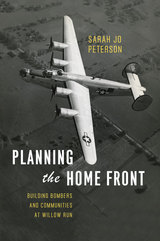 Planning the Home Front: Building Bombers and Communities at Willow Run
Sarah Jo Peterson
University of Chicago Press, 2013 Before Franklin Roosevelt declared December 7 to be a “date which will live in infamy”; before American soldiers landed on D-Day; before the B-17s, B-24s, and B-29s roared over Europe and Asia, there was Willow Run. Located twenty-five miles west of Detroit, the bomber plant at Willow Run and the community that grew up around it attracted tens of thousands of workers from across the United States during World War II. Together, they helped build the nation’s “Arsenal of Democracy,” but Willow Run also became the site of repeated political conflicts over how to build suburbia while mobilizing for total war.
In Planning the Home Front, Sarah Jo Peterson offers readers a portrait of the American people—industrialists and labor leaders, federal officials and municipal leaders, social reformers, industrial workers, and their families—that lays bare the foundations of community, the high costs of racism, and the tangled process of negotiation between New Deal visionaries and wartime planners. By tying the history of suburbanization to that of the home front, Peterson uncovers how the United States planned and built industrial regions in the pursuit of war, setting the stage for the suburban explosion that would change the American landscape when the war was won.
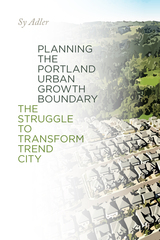 Planning the Portland Urban Growth Boundary: The Struggle to Transform Trend City
Sy Adler
Oregon State University Press, 2022 In this companion volume to his 2012 book Oregon Plans: The Making of an Unquiet Land-Use Revolution, Sy Adler offers readers a deep analysis of planning Portland’s Urban Growth Boundary. Required by one of Oregon’s nineteen statewide planning goals, a boundary in the Portland metropolitan area was intended to separate urban land and land that would be urbanized from commercially productive farmland. After adopting the goals, approving the Portland growth boundary in 1979 was the most significant decision the Oregon Land Conservation and Development Commission has ever made, and, more broadly, is a significant milestone in American land-use planning.
Planning the Portland Urban Growth Boundary primarily covers the 1970s. Innovative regional planning institutions were established in response to concerns about sprawl, but planners working for those institutions had to confront the reality that various plans being developed and implemented by city and county governments in metro Portland would instead allow sprawl to continue. Regional planners labeled these as “Trend City” plans, and sought to transform them during the 1970s and thereafter.
Adler discusses the dynamics of these partially successful efforts and the conflicts that characterized the development of the Portland UGB during the 1970s—between different levels of government, and between public, private, and civic sector advocates. When the regional UGB is periodically reviewed, these conflicts continue, as debates about values and technical issues related to forecasting future amounts of population, economic activity, and the availability of land for urban development over a twenty-year period roil the boundary planning process.
Planning the Portland Urban Growth Boundary is an authoritative history and an indispensable resource for anyone actively involved in urban and regional planning—from neighborhood associations and elected officials to organizations working on land use and development issues throughout the state.
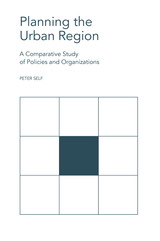 Planning the Urban Region: A Comparative Study of Policies and Organizations
Peter Self
University of Alabama Press, 1982 Provides a comparative framework for analyzing issues of urban planning and government
In tandem with an analysis of the basic purpose and rationale of urban planning, Peter Self discusses the achievements and failures of different types of planning authorities. Planning the Urban Region surveys in turn the planning of city governments, metro governments, and regional bodies as they attempt to guide the growth and character of large urban areas—within whose sprawl live roughly one-half of the populations of Western countries—with examples drawn from the United States, Great Britain, Canada, Australia, Sweden, and France.
Self argues that the urban region is at a political and organizational crossroads, as it must grapple with the problems of urban sprawl: the social effects of land use and housing, conflicts between local communities and the metro organizations, environmental issues, and the capacity of governmental systems to handle complex issues. Planning the Urban Region is a valuable contribution to the literature on the future of cities and urban regions and should materially inform the debate on the place of public planning in shaping that future.
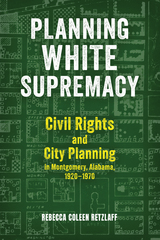 Planning White Supremacy: Civil Rights and City Planning in Montgomery, Alabama, 1920–1970
Rebecca Coleen Retzlaff
University of Alabama Press, 2026 An unflinching account of how city planning was deployed to enforce white supremacy in Montgomery, Alabama—the birthplace of the Civil Rights Movement—and how Black activists fought back, block by neighborhood block. At the heart of the Civil Rights Movement was a city meticulously designed to enforce inequality. In Planning White Supremacy: Civil Rights and City Planning in Montgomery, Alabama, 1920–1970, Rebecca Coleen Retzlaff traces how city officials used the tools of modern planning—zoning, infrastructure, housing codes, public investment, and highway construction—to suppress political power, economic opportunity, and spatial freedom for Black citizens. As the birthplace of the Civil Rights Movement, Montgomery became a battleground where urban planning and direct-action protest collided, shaping the city’s culture in ways that still resonate today. Retzlaff’s analysis exposes the calculated use of municipal power to control land use, displace Black communities, keep schools and neighborhoods segregated, and preserve white political dominance. By placing urban planning at the center of Montgomery’s story, this groundbreaking work reframes the movement not only as a fight for voting rights and legal equality, but as a struggle for space, housing, mobility, education, and the right to live with dignity. Retzlaff also highlights the resilience and joy of the close-knit Black neighborhoods that nurtured the civil rights activists who changed history. Retzlaff reveals how urban planning decisions systematically targeted Black neighborhoods, reinforcing racial inequality under the guise of modernization. With historical depth and critical insight, Planning White Supremacy situates Montgomery within the broader context of American urban history—offering a vital perspective on the intersection of race, space, and power. Essential for scholars of urban planning, history, and racial justice, this book also provides urgent insight into how these legacies continue to shape cities and Black socioeconomic opportunities today.
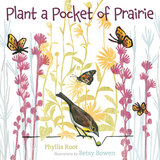 Plant a Pocket of Prairie
Phyllis Root
University of Minnesota Press, 2014 Author Phyllis Root and illustrator Betsy Bowen last explored the vast, boggy peatlands of northern Minnesota in their book Big Belching Bog. Now, in Plant a Pocket of Prairie, Root and Bowen take young readers on a trip to another of Minnesota’s important ecosystems: the prairie. Once covering almost 40 percent of the United States, native prairie is today one of the most endangered ecosystems in the world. Plant a Pocket of Prairie teaches children how changes in one part of the system affect every other part: when prairie plants are destroyed, the animals who eat those plants and live on or around them are harmed as well. Root shows what happens when we work to restore the prairies, encouraging readers to “plant a pocket of prairie” in their own backyards. By growing native prairie plants, children can help re-create food and habitat for the many birds, butterflies, and other animals that depend on them. “Plant cup plants,” Root suggests. “A thirsty chickadee might come to drink from a tiny leaf pool. Plant goldenrod. A Great Plains toad might flick its tongue at goldenrod soldier beetles.” An easy explanation of the history of the prairie, its endangered status, and how to go about growing prairie plants follows, as well as brief descriptions of all the plants and animals mentioned in the story. With Betsy Bowen’s beautiful, airy illustrations capturing the feel of an open prairie and all its inhabitants, readers of all ages will be inspired to start planting seeds and watching for the many fascinating animals their plants attract. What a marvelous transformation could take place if we all planted a pocket of prairie!
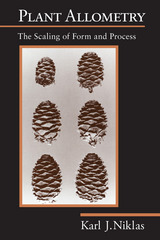 Plant Allometry: The Scaling of Form and Process
Karl J. Niklas
University of Chicago Press, 1994 Allometry, the study of the growth rate of an organism's parts in relation to the whole, has produced exciting results in research on animals. Now distinguished plant biologist Karl J. Niklas has written the first book to apply allometry to studies of the evolution, morphology, physiology, and reproduction of plants.
Niklas covers a broad spectrum of plant life, from unicellular algae to towering trees, including fossil as well as extant taxa. He examines the relation between organic size and variations in plant form, metabolism, reproduction, and evolution, and draws on the zoological literature to develop allometric techniques for the peculiar problems of plant height, the relation between body mass and body length, and size-correlated variations in rates of growth. For readers unfamiliar with the basics of allometry, an appendix explains basic statistical methods.
For botanists interested in an original, quantitative approach to plant evolution and function, and for zoologists who want to learn more about the value of allometric techniques for studying evolution, Plant Allometry makes a major contribution to the study of plant life.
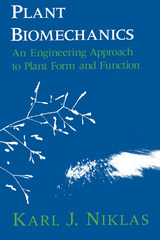 Plant Biomechanics: An Engineering Approach to Plant Form and Function
Karl J. Niklas
University of Chicago Press, 1992 In this first comprehensive treatment of plant biomechanics, Karl J. Niklas analyzes plant form and provides a far deeper understanding of how form is a response to basic physical laws. He examines the ways in which these laws constrain the organic expression of form, size, and growth in a variety of plant structures, and in plants as whole organisms, and he draws on the fossil record as well as on studies of extant species to present a genuinely evolutionary view of the response of plants to abiotic as well as biotic constraints. Well aware that some readers will need an introduction to basic biomechanics or to basic botany, Niklas provides both, as well as an extensive glossary, and he has included a number of original drawings and photographs to illustrate major structures and concepts.
This volume emphasizes not only methods of biomechanical analysis but also the ways in which it allows one to ask, and answer, a host of interesting questions. As Niklas points out in the first chapter, "From the archaic algae to the most derived multicellular terrestrial plants, from the spectral properties of light-harvesting pigments in chloroplasts to the stacking of leaves in the canopies of trees, the behavior of plants is in large part responsive to and intimately connected with the physical environment. In addition, plants tend to be exquisitely preserved in the fossil record, thereby giving us access to the past." Its biomechanical analyses of various types of plant cells, organs, and whole organisms, and its use of the earliest fossil records of plant life as well as sophisticated current studies of extant species, make this volume a unique and highly integrative contribution to studies of plant form, evolution, ecology, and systematics.
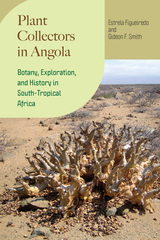 Plant Collectors in Angola: Botany, Exploration, and History in South-Tropical Africa
Estrela Figueiredo and Gideon F. Smith
University of Chicago Press, 2024 An authoritative treatise on the history of botanical studies and exploration in Angola.
For any region, cataloging, interpreting, and understanding the history of botanical exploration and plant collecting, and the preserved specimens that were amassed as a result, are critically important for research and conservation. In this book, published in cooperation with the International Association for Plant Taxonomy, Estrela Figueiredo and Gideon F. Smith, both botanists with expertise in the taxonomy of African plants, provide the first comprehensive, contextualized account of plant collecting in Angola, a large country in south-tropical Africa. An essential book for anyone concerned with the biodiversity and history of Africa, this authoritative work offers insights into the lives, times, and endeavors of 358 collectors. In addition, the authors present analyses of the records that accompanied the collectors’ preserved specimens. Illustrated in color throughout, the book fills a large gap in the current knowledge of the botanical and exploration history of Africa.
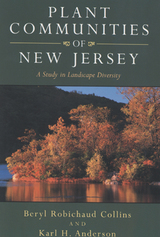 Plant Communities of New Jersey: A Study in Landscape Diversity
Collins, Beryl Robichaud
Rutgers University Press, 1994 From the ridgetops of the north to the Pinelands of the south, New Jersey’s natural areas display an astonishing variety of plant life. This book--a completely revised edition of the classic Vegetation of New Jersey--enables readers to understand why the vegetation of New Jersey is what it is today and what it may become. The book portrays New Jersey as an ecosystem--its geology, topography and soil, climate, plant-plant and plant-animal relationships, and the human impact on the environment. The authors describe in detail the twelve types of plant habitats distinguished in New Jersey and suggest places to observe good examples of them. The book is amply illustrated with photographs of plant communities and individual species and maps. The appendixes provide a cross reference between the common and scientific names of native plants of New Jersey, and hints for plant identification. Scientifically accurate yet written in a lively style, Plant Communities of New Jersey belongs on the bookshelf of every New Jerseyan who cares about the environment.
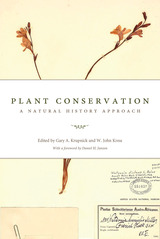 Plant Conservation: A Natural History Approach
Edited by Gary A. Krupnick and W. John Kress
University of Chicago Press, 2005 Natural history has always been the foundation of conservation biology. For centuries, botanists collected specimens in the field to understand plant diversity; now that many habitats are threatened, botanists have turned their focus to conservation, and, increasingly, they look to the collections of museums, herbaria, and botanical gardens for insight on developing informed management programs. Plant Conservation explores the value of these collections in light of contemporary biodiversity studies.
Plant Conservation opens with a broad view of plant biodiversity and then considers evolutionary and taxonomic threats and consequences of habitat alteration; specific threats to plant diversity, such as invasive species and global climate change; consequences of plant population decline at the ecological, evolutionary, and taxonomic levels; and, finally, management strategies that protect plant biodiversity from further decline. With a unique perspective on biodiversity and scientific collections, Plant Conservation ultimately emphasizes the role museums and botanical gardens will play in future conservation.
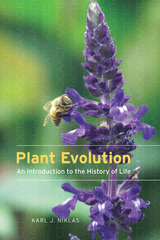 Plant Evolution: An Introduction to the History of Life
Karl J. Niklas
University of Chicago Press, 2016 Although plants comprise more than 90% of all visible life, and land plants and algae collectively make up the most morphologically, physiologically, and ecologically diverse group of organisms on earth, books on evolution instead tend to focus on animals. This organismal bias has led to an incomplete and often erroneous understanding of evolutionary theory. Because plants grow and reproduce differently than animals, they have evolved differently, and generally accepted evolutionary views—as, for example, the standard models of speciation—often fail to hold when applied to them.
Tapping such wide-ranging topics as genetics, gene regulatory networks, phenotype mapping, and multicellularity, as well as paleobotany, Karl J. Niklas’s Plant Evolution offers fresh insight into these differences. Following up on his landmark book The Evolutionary Biology of Plants—in which he drew on cutting-edge computer simulations that used plants as models to illuminate key evolutionary theories—Niklas incorporates data from more than a decade of new research in the flourishing field of molecular biology, conveying not only why the study of evolution is so important, but also why the study of plants is essential to our understanding of evolutionary processes. Niklas shows us that investigating the intricacies of plant development, the diversification of early vascular land plants, and larger patterns in plant evolution is not just a botanical pursuit: it is vital to our comprehension of the history of all life on this green planet.
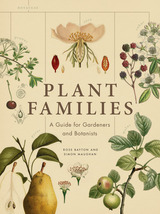 Plant Families: A Guide for Gardeners and Botanists
Ross Bayton and Simon Maughan
University of Chicago Press, 2017 Most of us lump plants together in one big family, and when pressed can only explain their grouping by what they’re not—not an animal, not a mineral, and so just a plant. In reality, there are hundreds of different plant families, each grouped logically by a unique family history and genealogy. This brings sense and order to the more than a quarter of a million different plant species covering a diverse spectrum that includes soaring sequoias (Cupressaceae), squat prickly pear (Cactaceae), and luxuriant roses (Rosaceae).
Plant Families is an easy-to-use, beautifully illustrated guide to the more than one hundred core plant families every horticulturist, gardener, or budding botanist needs to know. It introduces the basics of plant genealogy and teaches readers how to identify and understand the different structures of flowers, trees, herbs, shrubs, and bulbs. It then walks through each family, explaining its origins and range, and describing characteristics such as size, flowers, and seeds. Each family is accompanied by full-color botanical illustrations and diagrams. “Uses For” boxes planted throughout the book provide practical gardening tips related to each family.
We have much to gain by learning about the relationships between plant families. By understanding how botanists create these groupings, we can become more apt at spotting the unique characteristics of a plant and identify them faster and more accurately. Understanding plant families also helps us to make sense of—and better appreciate—the enormous biological diversity of the plant kingdom.
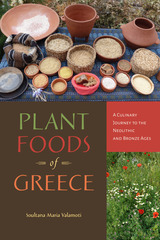 Plant Foods of Greece: A Culinary Journey to the Neolithic and Bronze Ages
Soultana Maria Valamoti
University of Alabama Press, 2023 2024 Inaugural Mary Beaudry Book Award for the Archaeology of Food
"This comprehensive, definitive volume, the result of 25 years of research on food archaeology, archaeobotany, and ethnobotany in Greece, surpasses other works on this topic, whether regional in focus or encompassing the whole world, for its detail, clarity, and assemblage of data sources. Highly recommended." —CHOICE
In Plant Foods of Greece, Greek archaeologist Soultana Maria Valamoti takes readers on a culinary journey, reconstructing the plant foods and culinary practices of Neolithic and Bronze Age Greece. For more than thirty years, she has been analyzing a large body of archaeobotanical data that was retrieved from nearly twenty sites in mainland Greece and the Greek islands, with an additional analysis of other sites as referenced by published colleagues. Plant foods were the main ingredients of daily meals in prehistoric Greece and most likely of special dishes prepared for feasts and rituals.
Valamoti’s approach allows an exploration of culinary variability through time. The thousands of charred seeds identified from occupation debris correspond to minuscule time capsules. She is able to document changes from the cooking of the first farmers to the sophisticated cuisines of the elites who inhabited palaces in the first cities of Europe in the south of Greece during the Late Bronze Age. Along the way, she explains the complex processes for the addition of new ingredients (such as millet and olives), condiments, sweet tastes, and complex recipes. Valamoti also addresses regional variability and diversity as well as detailing experimentation and research using occasional input from ancient written sources.
Comprehensive and synthetic coverage encompasses bread/cereals, pulses, oils, fruit and nuts, fermented brews, healing foods, cooking, and identity. In addition, Valamoti offers insight into engaging in public archaeology and provides recipes that incorporate ancient plant ingredients and connect prehistory to the present in a critical way. A definitive source for a range of food scientists and scholars, it will also appeal to foodies.
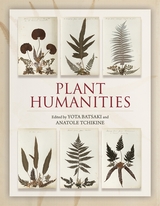 Plant Humanities
Yota Batsaki and Anatole Tchikine
Harvard University Press Plant Humanities moves plants to the center of critical inquiry, positioning them as biocultural entities with distinct environmental and social histories that have profoundly shaped human cultures. Its thirteen chapters cover a broad geographical range, including the Americas, Europe, the Pacific, the Indian subcontinent, East Asia, and Africa, to explore the dual character of plants as place makers and world travelers. As ecosystem builders and cultural agents constitutive of national, sacred, and domestic ecologies, plants help us trace legacies of colonialism, capitalism, racism, and the related challenges of anthropogenic climate change and biodiversity loss. Plant-focused epistemologies are also central to this volume; several essays explore the interplay between vernacular and scientific paradigms and distinct taxonomic systems to reveal instances of rupture, continuity, and resilience. Plant Humanities concludes with the discussion of the poetics of plants—their foundational role in communal imaginaries—and the ways they shape our understanding of the sacred, probing how notions of value are predicated on human commodification, elevation, or abjection of the vegetal world.
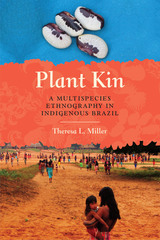 Plant Kin: A Multispecies Ethnography in Indigenous Brazil
By Theresa L. Miller
University of Texas Press, 2019 The Indigenous Canela inhabit a vibrant multispecies community of nearly 3,000 people and over 300 types of cultivated and wild plants living together in Maranhão State in the Brazilian Cerrado (savannah), a biome threatened with deforestation and climate change. In the face of these environmental threats, Canela women and men work to maintain riverbank and forest gardens and care for their growing crops, whom they consider to be, literally, children. This nurturing, loving relationship between people and plants—which offers a thought-provoking model for supporting multispecies survival and well-being throughout the world—is the focus of Plant Kin. Theresa L. Miller shows how kinship develops between Canela people and plants through intimate, multi-sensory, and embodied relationships. Using an approach she calls “sensory ethnobotany,” Miller explores the Canela bio-sociocultural life-world, including Canela landscape aesthetics, ethnobotanical classification, mythical storytelling, historical and modern-day gardening practices, transmission of ecological knowledge through an education of affection for plant kin, shamanic engagements with plant friends and lovers, and myriad other human-nonhuman experiences. This multispecies ethnography reveals the transformations of Canela human-environment and human-plant engagements over the past two centuries and envisions possible futures for this Indigenous multispecies community as it reckons with the rapid environmental and climatic changes facing the Brazilian Cerrado as the Anthropocene epoch unfolds.
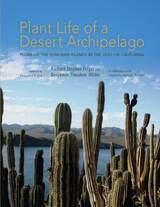 Plant Life of a Desert Archipelago: Flora of the Sonoran Islands in the Gulf of California
Richard Stephen Felger and Benjamin Theodore Wilder, in collaboration with Humberto Romero-Morales; Foreword by Exequiel Ezcurra
University of Arizona Press, 2012 The desert islands of the Gulf of California are among the world's best-preserved archipelagos. The diverse and unique flora, from the cardón forests of Cholludo to the agave-dominated slopes of San Esteban remain much as they were centuries ago, when the Comcaac (Seri people) were the only human presence in the region. Almost 400 plant species exist here, with each island manifesting a unique composition of vegetation and flora. For thousands of years, climatic and biological forces have sculpted a set of unparalleled desert worlds.
Plant Life of a Desert Archipelago is the first in-depth coverage of the plants on islands in the Gulf of California found in between the coasts of Baja California and Sonora. The work is the culmination of decades of study by botanist Richard Felger and recent investigations by Benjamin Wilder, in collaboration with Sr. Humberto Romero-Morales, one of the most knowledgeable Seris concerning the region's flora. Their collective effort weaves together careful and accurate botanical science with the rich cultural and stunning physical setting of this island realm.
The researchers surveyed, collected, and studied thousands of plants—seen here in meticulous illustrations and stunning color photographs—providing the most precise species accounts of the islands ever made. To access remote parts of the islands the authors worked directly with the Comcaac, an indigenous community who have lived off marine and terrestrial life in this coastal desert region for centuries. Invaluable information regarding indigenous names and distributions are an intrinsic part of this work. The flora descriptions are extraordinarily detailed and painstakingly crafted for field biologists. Conservationists, students, and others who are interested in learning about the natural wealth of the Gulf of California, desert regions, or islands in general are sure to be captivated by this rich and fascinating volume.
Plant Metaphors in Prophetic Condemnations of Israel and Judah
Tina M. Sherman
SBL Press, 2023 Tina M. Sherman offers a first-of-its-kind, detailed analysis of prophetic passages that depict people as plants—from grasses and grains to fruit trees and grapevines—examining how the biblical authors exploited these metaphors to portray the condemnation and punishment of Israel and Judah in terms of the everyday work of crop farming and plant husbandry. Additionally, she explores how the prophetic authors employed plant imagery to construct national identities that emphasize the people’s collective responsibility for the kingdoms’ fate. Plant Metaphors in Prophetic Condemnations of Israel and Judah demonstrates the usefulness of combining conceptual metaphor theory with aspects of frame semantics in the analysis of patterns of thought and expression in biblical metaphor.
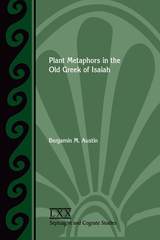 Plant Metaphors in the Old Greek of Isaiah
Benjamin M. Austin
SBL Press, 2019 A thorough analysis of metaphor translation techniques used in Isaiah
In this study Benjamin M. Austin analyzes all the plant metaphors in Isaiah and classifies them according to the metaphor translation techniques used by the Septuagint translator. Austin illustrates how the translator took the context of each metaphor into account and demonstrates how the natural features of the plants under discussion at times influenced their translation. He argues that the translator tried to render metaphors vividly and with clarity, sometimes adjusting them to match the experience of his audience living in Egypt. Austin also examines metaphors in terms of their vehicles (the objects of comparison), so that the translation of similar metaphors can be compared.
Features
- A comparison of the Masoretic Text to the Septuagint and Targum
- A classification of metaphor translation strategies
- An introduction to the Hellenistic and the Jewish conception of metaphors
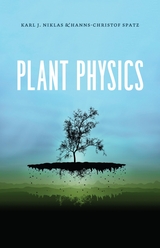 Plant Physics
Karl J. Niklas and Hanns-Christof Spatz
University of Chicago Press, 2012 From Galileo, who used the hollow stalks of grass to demonstrate the idea that peripherally located construction materials provide most of the resistance to bending forces, to Leonardo da Vinci, whose illustrations of the parachute are alleged to be based on his study of the dandelion’s pappus and the maple tree’s samara, many of our greatest physicists, mathematicians, and engineers have learned much from studying plants. A symbiotic relationship between botany and the fields of physics, mathematics, engineering, and chemistry continues today, as is revealed in Plant Physics. The result of a long-term collaboration between plant evolutionary biologist Karl J. Niklas and physicist Hanns-Christof Spatz, Plant Physics presents a detailed account of the principles of classical physics, evolutionary theory, and plant biology in order to explain the complex interrelationships among plant form, function, environment, and evolutionary history. Covering a wide range of topics—from the development and evolution of the basic plant body and the ecology of aquatic unicellular plants to mathematical treatments of light attenuation through tree canopies and the movement of water through plants’ roots, stems, and leaves—Plant Physics is destined to inspire students and professionals alike to traverse disciplinary membranes.
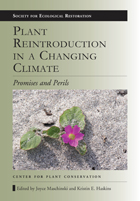 Plant Reintroduction in a Changing Climate: Promises and Perils
Edited by Joyce Maschinski and Kristin E. Haskins
Island Press, 2011 Considered an essential conservation tool, plant reintroductions have been conducted for many of the world's rarest plant species. The expertise and knowledge gained through these efforts constitute an essential storehouse of information for conservationists faced with a rapidly changing global climate.
This volume presents a comprehensive review of reintroduction projects and practices, the circumstances of their successes or failures, lessons learned, and the potential role for reintroductions in preserving species threatened by climate change. Contributors examine current plant reintroduction practices, from selecting appropriate source material and recipient sites to assessing population demography.
The findings culminate in a set of Best Reintroduction Practice Guidelines, included in an appendix. These guidelines cover stages from planning and implementation to long-term monitoring, and offer not only recommended actions but also checklists of questions to consider that are applicable to projects around the world.
Traditional reintroduction practice can inform managed relocation-the deliberate movement of species outside their native range-which may be the only hope for some species to persist in a natural environment. Included in the book are discussions of the history, fears, and controversy regarding managed relocation, along with protocols for evaluating invasive risk and proposals for conducting managed relocation of rare plants.
Plant Reintroduction in a Changing Climate is a comprehensive and accessible reference for practitioners to use in planning and executing rare plant reintroductions.
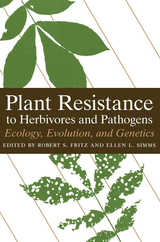 Plant Resistance to Herbivores and Pathogens: Ecology, Evolution, and Genetics
Edited by Robert S. Fritz and Ellen L. Simms
University of Chicago Press, 1992 Far from being passive elements in the landscape, plants have developed many sophisticated chemical and mechanical means of deterring organisms that seek to prey on them. This volume draws together research from ecology, evolution, agronomy, and plant pathology to produce an ecological genetics perspective on plant resistance in both natural and agricultural systems. By emphasizing the ecological and evolutionary basis of resistance, the book makes an important contribution to the study of how phytophages and plants coevolve.
Plant Resistance to Herbivores and Pathogens not only reviews the literature pertaining to plant resistance from a number of traditionally separate fields but also examines significant questions that will drive future research. Among the topics explored are selection for resistance in plants and for virulence in phytophages; methods for studying natural variation in plant resistance; the factors that maintain intraspecific variation in resistance; and the ecological consequences of within-population genetic variation for herbivorous insects and fungal pathogens.
"A comprehensive review of the theory and information on a large, rapidly growing, and important subject."—Douglas J. Futuyma, State University of New York, Stony Brook
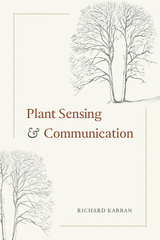 Plant Sensing and Communication
Richard Karban
University of Chicago Press, 2015 The news that a flowering weed—mousear cress (Arabidopsis thaliana)—can sense the particular chewing noise of its most common caterpillar predator and adjust its chemical defenses in response led to headlines announcing the discovery of the first “hearing” plant. As plants lack central nervous systems (and, indeed, ears), the mechanisms behind this “hearing” are unquestionably very different from those of our own acoustic sense, but the misleading headlines point to an overlooked truth: plants do in fact perceive environmental cues and respond rapidly to them by changing their chemical, morphological, and behavioral traits.
In Plant Sensing and Communication, Richard Karban provides the first comprehensive overview of what is known about how plants perceive their environments, communicate those perceptions, and learn. Facing many of the same challenges as animals, plants have developed many similar capabilities: they sense light, chemicals, mechanical stimulation, temperature, electricity, and sound. Moreover, prior experiences have lasting impacts on sensitivity and response to cues; plants, in essence, have memory. Nor are their senses limited to the processes of an individual plant: plants eavesdrop on the cues and behaviors of neighbors and—for example, through flowers and fruits—exchange information with other types of organisms. Far from inanimate organisms limited by their stationary existence, plants, this book makes unquestionably clear, are in constant and lively discourse.
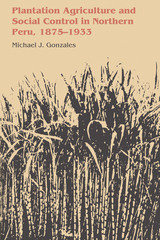 Plantation Agriculture and Social Control in Northern Peru, 1875–1933
By Michael J. Gonzales
University of Texas Press, 1985 During the late nineteenth and early twentieth centuries, the social, economic, and political landscape of Peru was transformed profoundly. Within a decade of the country’s disastrous defeat by Chile during the War of the Pacific, the export economy was recovering on the strength of a variety of agricultural and mineral products. The sugar industry played a pivotal role in this process and produced wealthy and socially ambitious families who became prominent political leaders on the national level. This study, based primarily on previously unavailable private records of sugarcane plantations, examines the external and internal dynamics of the sugar industry. It offers new insights into the process of land consolidation, the economics of sugar technology and production, the formation of the coastal elite, and the organization, recruitment, and control of labor. By focusing on the plantation Cayalti within a regional context, Gonzales presents one of the richest descriptions of the modern plantation for any region of Latin America. The book is a vivid social history of laborers from a variety of racial and ethnic backgrounds, from Chinese to Peruvians of Indian, mestizo, and black heritage.
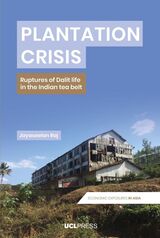 Plantation Crisis: Ruptures of Dalit Life in the Indian Tea Belt
Jayaseelan Raj
University College London, 2022 An illuminating and intimate account of the ruptures in life at the bottom of global capitalism and caste hierarchy.
What does the collapse of India’s tea industry mean for Dalit workers who have lived, worked, and died on the plantations since the colonial era? Since the mid-1990s, the colonial era plantation system—and its workforce of more than two million people— has faced a series of ruptures stemming from neoliberal economic globalization. In the South Indian state of Kerala, the Dalit workforce is at the forefront of this crisis and its profound effects on their social identity and economic wellbeing. Plantation Crisis offers a complex understanding of how processes of social and political alienation unfold in moments of economic rupture. Based on long-term ethnographic fieldwork in the Peermade and Munnar tea belts, the book analyzes the profound, multidimensional sense of crisis felt by those who are at the bottom of global plantation capitalism. Out of the colonial history of racial capitalism and indentured migration, Plantation Crisis opens our eyes to the collapse of the plantation system in India, and the profound impacts this has on the Dalit workers who lived there for generations.
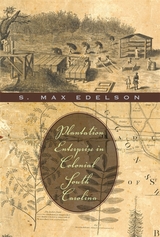 Plantation Enterprise in Colonial South Carolina
S. Max Edelson
Harvard University Press, 2011 This impressive scholarly debut deftly reinterprets one of America's oldest symbols--the southern slave plantation. S. Max Edelson examines the relationships between planters, slaves, and the natural world they colonized to create the Carolina Lowcountry.
European settlers came to South Carolina in 1670 determined to possess an abundant wilderness. Over the course of a century, they settled highly adaptive rice and indigo plantations across a vast coastal plain. Forcing slaves to turn swampy wastelands into productive fields and to channel surging waters into elaborate irrigation systems, planters initiated a stunning economic transformation.
The result, Edelson reveals, was two interdependent plantation worlds. A rough rice frontier became a place of unremitting field labor. With the profits, planters made Charleston and its hinterland into a refined, diversified place to live. From urban townhouses and rural retreats, they ran multiple-plantation enterprises, looking to England for affirmation as agriculturists, gentlemen, and stakeholders in Britain's American empire. Offering a new vision of the Old South that was far from static, Edelson reveals the plantations of early South Carolina to have been dynamic instruments behind an expansive process of colonization.
With a bold interdisciplinary approach, Plantation Enterprise reconstructs the environmental, economic, and cultural changes that made the Carolina Lowcountry one of the most prosperous and repressive regions in the Atlantic world.
 Plantation Goods: A Material History of American Slavery
Seth Rockman
University of Chicago Press, 2024 A Pulitzer Prize finalist in History, this eye-opening rethinking of nineteenth-century American history reveals the interdependence of the Northern industrial economy and Southern slave labor.
The industrializing North and the agricultural South—that’s how we have been taught to think about the United States in the early nineteenth century. But in doing so, we overlook the economic ties that held the nation together before the Civil War. We miss slavery’s long reach into small New England communities, just as we fail to see the role of Northern manufacturing in shaping the terrain of human bondage in the South. Using plantation goods—the shirts, hats, hoes, shovels, shoes, axes, and whips made in the North for use in the South—historian Seth Rockman locates the biggest stories in American history in the everyday objects that stitched together the lives and livelihoods of Americans—white and Black, male and female, enslaved and free—across an expanding nation.
By following the stories of material objects, such as shoes made by Massachusetts farm women that found their way to the feet of a Mississippi slave, Rockman reveals a national economy organized by slavery—a slavery that outsourced the production of its supplies to the North, and a North that outsourced its slavery to the South. Melding business and labor history through powerful storytelling, Plantation Goods brings northern industrialists, southern slaveholders, enslaved field hands, and paid factory laborers into the same picture. In one part of the country, entrepreneurs envisioned fortunes to be made from “planter’s hoes” and rural women spent their days weaving “negro cloth” and assembling “slave brogans.” In another, enslaved people actively consumed textiles and tools imported from the North to contest their bondage. In between, merchants, marketers, storekeepers, and debt collectors laid claim to the profits of a thriving interregional trade.
Examining producers and consumers linked in economic and moral relationships across great geographic and political distances, Plantation Goods explores how people in the nineteenth century thought about complicity with slavery while showing how slavery structured life nationwide and established a modern world of entrepreneurship and exploitation. Rockman brings together lines of American history that have for too long been told separately, as slavery and capitalism converge in something as deceptively ordinary as a humble pair of shoes.
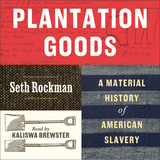 Plantation Goods: A Material History of American Slavery
Seth Rockman
University of Chicago Press, 2024 This is an audiobook version of this book.
A Pulitzer Prize finalist in History, this eye-opening rethinking of nineteenth-century American history reveals the interdependence of the Northern industrial economy and Southern slave labor.
The industrializing North and the agricultural South—that’s how we have been taught to think about the United States in the early nineteenth century. But in doing so, we overlook the economic ties that held the nation together before the Civil War. We miss slavery’s long reach into small New England communities, just as we fail to see the role of Northern manufacturing in shaping the terrain of human bondage in the South. Using plantation goods—the shirts, hats, hoes, shovels, shoes, axes, and whips made in the North for use in the South—historian Seth Rockman locates the biggest stories in American history in the everyday objects that stitched together the lives and livelihoods of Americans—white and Black, male and female, enslaved and free—across an expanding nation.
By following the stories of material objects, such as shoes made by Massachusetts farm women that found their way to the feet of a Mississippi slave, Rockman reveals a national economy organized by slavery—a slavery that outsourced the production of its supplies to the North, and a North that outsourced its slavery to the South. Melding business and labor history through powerful storytelling, Plantation Goods brings northern industrialists, southern slaveholders, enslaved field hands, and paid factory laborers into the same picture. In one part of the country, entrepreneurs envisioned fortunes to be made from “planter’s hoes” and rural women spent their days weaving “negro cloth” and assembling “slave brogans.” In another, enslaved people actively consumed textiles and tools imported from the North to contest their bondage. In between, merchants, marketers, storekeepers, and debt collectors laid claim to the profits of a thriving interregional trade.
Examining producers and consumers linked in economic and moral relationships across great geographic and political distances, Plantation Goods explores how people in the nineteenth century thought about complicity with slavery while showing how slavery structured life nationwide and established a modern world of entrepreneurship and exploitation. Rockman brings together lines of American history that have for too long been told separately, as slavery and capitalism converge in something as deceptively ordinary as a humble pair of shoes.
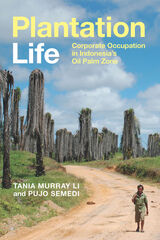 Plantation Life: Corporate Occupation in Indonesia's Oil Palm Zone
Tania Murray Li and Pujo Semedi
Duke University Press, 2021 In Plantation Life Tania Murray Li and Pujo Semedi examine the structure and governance of Indonesia's contemporary oil palm plantations in Indonesia, which supply 50 percent of the world's palm oil. They attend to the exploitative nature of plantation life, wherein villagers' well-being is sacrificed in the name of economic development. While plantations are often plagued by ruined ecologies, injury among workers, and a devastating loss of livelihoods for former landholders, small-scale independent farmers produce palm oil more efficiently and with far less damage to life and land. Li and Semedi theorize “corporate occupation” to underscore how massive forms of capitalist production and control over the palm oil industry replicate colonial-style relations that undermine citizenship. In so doing, they question the assumption that corporations are necessary for rural development, contending that the dominance of plantations stems from a political system that privileges corporations.
Plantation Slavery in Barbados: An Archaeological and Historical Investigation
Jerome S. Handler and Frederick W. Lange
Harvard University Press, 1978 Here is the first detailed investigation of plantation slave life in Barbados from earliest times until 1838. The authors have visited slave village sites, and their intensive excavation of a slave cemetery has yielded a wealth of material pertaining to mortuary practices and other dimensions of social and material life. Handler and Lange have also examined and extensively integrated the written records to amplify and cross-check their findings.
Based on the methodologies of archaeology, history, and ethnography, Plantation Slavery in Barbados explores new ways to reconstruct the culture of a social group that left few historical records. As a description of the organization and development of the plantation system in Barbados, it is a model work in the burgeoning fields of slavery studies, historical anthropology, and Caribbean history.
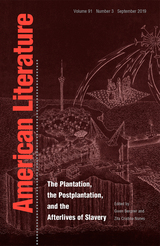 The Plantation, the Postplantation, and the Afterlives of Slavery
Gwen Bergner and Zita Nunes, special issue editors
Duke University Press This special issue interrogates the plantation as a form, logic, and technology that continues to produce inequalities. Attending to the Caribbean, Latin America, and the United States, contributors follow the evolution of plantation slavery in the eighteenth and nineteenth centuries through its subsequent iterations in the Jim Crow and civil rights eras, and into the neoliberal present, where the carceral state props up fantasies of postracialism. The contributors rethink the necro- and biopolitics of plantation slavery, uncovering laborers' strategies of self-determination, affiliation, and communication in spite of the plantation's mechanisms of control.
Essay topics include the circulation of a weekly newspaper published by black tenant farmers in the 1920s, a nineteenth-century trial of an enslaved woman, and the fetish-making of Haitian revolutionary François Makandal. Reconsidering the time and space of the plantation, contributors analyze Western processes of racialization and uncover the experience and agency of the oppressed. This search for modes of being within the plantation structure offers one way to rewrite histories of slavery.
Contributors. Monique Allewaert, Gwen Bergner, Benjamin Child, Jeannine Marie DeLombard, Julius B. Fleming Jr., Jarvis C. McInnis, Zita Nunes, Roberta Wolfson
 Plantation Worlds
Maan Barua
Duke University Press, 2024 In Plantation Worlds, Maan Barua interrogates debates on planetary transformations through the histories and ecologies of plantations. Drawing on long-term research spanning fifteen years, Barua presents a unique ethnography attentive to the lives of both people and elephants amid tea plantations in the Indian state of Assam. In the nineteenth and early twentieth centuries, nearly three million people were brought in to Assam’s plantations to work under conditions of indenture. Plantations dramatically altered the region’s landscape, plundered resources, and created fraught worlds for elephants and people. Their extractive logics and colonial legacies prevail as durations, forging the ambit of infrastructures, labor, habitability, and conservation in the present. And yet, as the perspectives of the Adivasi plantation worker community and lifeworlds of elephants show, possibilities for enacting a decolonial imaginary of landscape remain present amid immiseration. From the margins of the Global South, Barua offers an alternative grammar for articulating environmental change. In so doing, he prompts a rethinking of multispecies ecologies and how they are structured by colonialism and race.
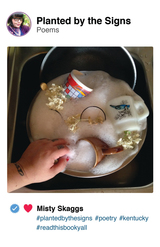 Planted by the Signs: Poems
Misty Skaggs
Ohio University Press, 2019 Planted by the Signs brings us the contemporary Appalachian poetry—cultivated in the dirt of Elliott County, Kentucky—of Misty Skaggs. With an eye for details that exquisitely balance personal and social observation to communicate volumes, she tells the stories of generations of women who have learned to navigate a harsh world with a little help from the Farmers’ Almanac and the stars. The collection is separated into three sections that reference the best times to grow and harvest. Knowing and following these guidelines—planting by the signs—could mean the difference between prosperity and tragedy in the lives of Appalachian families. Personal, political, and passionate, Planted by the Signs also explores what it means for Skaggs to care for her great-grandmother at the end of her life. Color photos by the poet further showcase her sidelong and fierce outlook. The images and poems together deliver an intimate look into the day-to-day reality of a backwoods woman embracing barefooted radicalism in the only place she could call home.
Planters, Merchants, and Slaves: Plantation Societies in British America, 1650-1820
Trevor Burnard
University of Chicago Press, 2015 As with any enterprise involving violence and lots of money, running a plantation in early British America was a serious and brutal enterprise. In the contentious Planters, Merchants, and Slaves, Burnard argues that white men did not choose to develop and maintain the plantation system out of virulent racism or sadism, but rather out of economic logic because—to speak bluntly—it worked. These economically successful and ethically monstrous plantations required racial divisions to exist, but their successes were measured in gold, rather than skin or blood. Sure to be controversial, this book is a major intervention in the scholarship on slavery, economic development, and political power in early British America, mounting a powerful and original argument that boldly challenges historical orthodoxy.
The Planting of Civilization in Western Pennsylvania
Solon J. Buck
University of Pittsburgh Press, 1939 A definitive account of nearly every aspect of Western Pennsylvanian life and development up until the War of 1812. The book opens with a narrative of the formative years of the region. Succeeding chapters deal with the development of agriculture, industry, education, religion, social customs, and law and order --all based upon the results of the work of the Western Pennsylvania Historical Survey.
Among the more than one hundred illustrations are contemporary pictures, maps, plans of forts, portraits, architectural photographs and more.
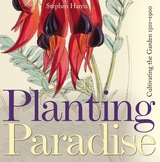 Planting Paradise: Cultivating the Garden, 1501-1900
Stephen Harris
Bodleian Library Publishing, 2011 Beautifully illustrated, Planting Paradise charts the evolution of thinking about the cultivation of gardens from the sixteenth to the nineteenth centuries. In this age of discovery, when the world was being explored as never before, gardening itself took on new dimensions. The Renaissance belief in direct observation of nature offered an alternative way of thinking and inspired the scientific approach of the Enlightenment, and soon gardens were no longer just places of beauty, but also laboratories for scientific investigation. Planting Paradise reveals how the botanic gardens of early modern Europe were largely viewed as a means of supplying surgeons with medicines but by the seventeenth and eighteenth century the interest in gardens and cultivating exotic plants had spread to all levels of society. As global exploration took Europeans all over the world, gardens became a tapestry of many diverse botanical histories—some plants were native, some were introduced from foreign lands, and others were bred in the garden. Planting Paradise shows how the garden became a symbol of human interactions within the botanical world. A lovely gift book for garden lovers, Planting Paradise showcases the superb collection of botanical illustrations in the Plant Sciences Department and Bodleian Library, University of Oxford, and presents a handsome and fascinating look at the history of the garden from the picturesque to the practical and back again.
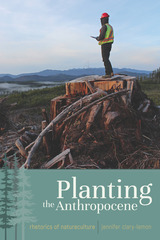 Planting the Anthropocene: Rhetorics of Natureculture
Jennifer Clary-Lemon
Utah State University Press, 2019 Planting the Anthropocene is a rhetorical look into the world of industrial tree planting in Canada that engages the themes of nature, culture, and environmental change. Bringing together the work of material ecocriticism and critical affect studies in service of a new materialist environmental rhetoric, Planting the Anthropocene forwards a frame that can be used to work through complex scenes of anthropogenic labor.
Using the results of interviews with seasonal Canadian tree planters, Jennifer Clary-Lemon interrogates the complex and messy imbrication of nature-culture through the inadequate terminology used to describe the actual circumstances of the planters’ work and lives—and offers alternative ways to conceptualize them. Although silvicultural workers do engage with the limiting rhetoric of efficiency and humanism, they also make rhetorical choices that break down the nature-culture divide and orient them on a continuum that blurs the boundaries between the given and the constructed, the human and nonhuman. Tree-planting work is approached as a site of a deep-seated materiality—a continued re-creation of the land’s “disturbance”—rather than a simplistic form of doing good that further separates humans from landscapes.
Jennifer Clary-Lemon’s view of nature and the Anthropocene through the lens of material rhetorical studies is thoroughly original and will be of great interest to students and scholars of rhetoric and composition, especially those focused on the environment.
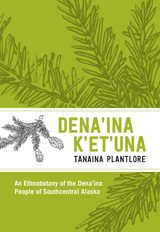 Plantlore/Dena'ina K'et'una: An Ethnobotany of the Dena'ina People of Southcentral Alaska
Priscilla N. Russell
University of Alaska Press, 2020 When Chris McCandless, immortalized in Into the Wild, headed into the Alaska wilderness, one of the books he took with him was Tanaina Plantlore, which he used to identify edible plants. While the book and subsequent movie has brought attention to the book for more than a decade, it draws on a thousand of years of knowledge. The Dena’ina (also called the Tanaina) Athabascan peoples in southcentral Alaska have made use of the varied plant life that grows in interior Alaska for generations and Tanaina Plantlore collects this extensve knowledge, giving phsycial and environmental descriptions with photographs to aid in identification.
This book is the culmination of more than a decade of ethnobotanical study and provides accounts of the traditional lore associated with these plants based on a wealth of interviews with Dena’ina people. This new edition includes new graphical content consolidating practical plant information and traditional uses.
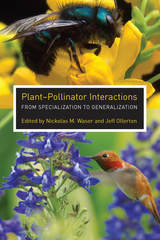 Plant-Pollinator Interactions: From Specialization to Generalization
Edited by Nickolas M. Waser and Jeff Ollerton
University of Chicago Press, 2005 Just as flowering plants depend on their pollinators, many birds, insects, and bats rely on plants for energy and nutrients. This plant-pollinator relationship is essential to the survival of natural and agricultural ecosystems. Plant-Pollinator Interactions portrays the intimate relationships of pollination over time and space and reveals patterns of interactions from individual to community levels, showing how these patterns change at different spatial and temporal scales.
Nickolas M. Waser and Jeff Ollerton bring together experts from around the world to offer a comprehensive analysis of pollination, including the history of thinking about specialization and generalization and a comparison of pollination to other mutualisms. An overview of current thinking and of future research priorities, Plant-Pollinator Interactions covers an important theme in evolutionary ecology with far-reaching applications in conservation and agriculture. This book will find an eager audience in specialists studying pollination and other mutualisms, as well as with biologists who are interested in ecological, evolutionary, and behavioral aspects of the specialization and generalization of species.
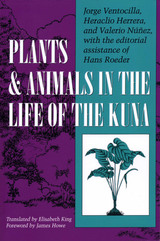 Plants and Animals in the Life of the Kuna
By Jorge Ventocilla, Heraclio Herrera, & Valerio Núñez
University of Texas Press, 1995 "The earth is the mother of all things"; thus begins this original and accessible book on how the Kuna of Panama relate to the natural world. An integrative project involving Kuna traditional leaders and trained scholars, and fully illustrated by a Kuna artist, this translation of Plantas y animales en la vida del pueblo Kuna focuses on Kuna plant and animal life, social life, and social change as a means of saving traditional ecological knowledge and "returning" it to the community. The authors hope to preserve the Kuna environment not only by reviving traditional technologies but also by educating the Kuna as to what needs protection. While the Kuna have a tradition of living in harmony with the land, the intrusion of the market economy is eroding the very basis of their sustainable way of life. As a response to this crisis, this book seeks to develop native self-awareness and provide a model for collaboration. It will appeal to Latin Americanists, anthropologists, and ethnobotanists, as well as to a general readership in environmental issues.
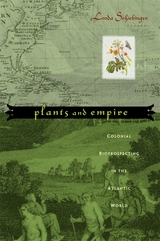 Plants and Empire: Colonial Bioprospecting in the Atlantic World
Londa Schiebinger
Harvard University Press, 2007 Plants seldom figure in the grand narratives of war, peace, or even everyday life yet they are often at the center of high intrigue. In the eighteenth century, epic scientific voyages were sponsored by European imperial powers to explore the natural riches of the New World, and uncover the botanical secrets of its people. Bioprospectors brought back medicines, luxuries, and staples for their king and country. Risking their lives to discover exotic plants, these daredevil explorers joined with their sponsors to create a global culture of botany.
But some secrets were unearthed only to be lost again. In this moving account of the abuses of indigenous Caribbean people and African slaves, Schiebinger describes how slave women brewed the "peacock flower" into an abortifacient, to ensure that they would bear no children into oppression. Yet, impeded by trade winds of prevailing opinion, knowledge of West Indian abortifacients never flowed into Europe. A rich history of discovery and loss, Plants and Empire explores the movement, triumph, and extinction of knowledge in the course of encounters between Europeans and the Caribbean populations.
 Plants, Animals, People, Aliens: An Aristotelian-Thomist Perspective on Life in the Universe
Marie I. George
Catholic University of America Press Aristotle famously maintains in his treatise On the Soul that there are three kinds of living things-- plants, animals, and humans--and he speaks of each kind as having a soul. St. Thomas Aquinas adopts these same views. Nowadays, however, many thinkers reject them on the grounds that they are incompatible with modern science. Molecular biology is seen as affording a superior way of categorizing life forms. Evolutionary biology appears to have established that humans are simply primates with adaptations somewhat different from other primates. Plant physiology, uncovering plants’ directional responses to a wide variety of different stimuli, provides reason to think that plants sense light, pressure, odor, pathogens, etc., in which case plants are simply non-mobile animals, similar to coral. Neuroscience, by showing the dependency of thought, choice, perception, and emotion on the central nervous system, especially on the brain, seems to have eliminated any need to posit a soul.
Plants, Animals, People, Aliens addresses these and a variety of other science-based claims about living things by bringing Aristotelian-Thomistic teachings to bear upon them. While not a systematic work, it both treats some of the most hotly debated philosophical questions concerning living
things, such as what it means to be alive, as well as treating questions less often raised by philosophers, such as whether animals have a theory of mind. Though geared primarily to those conversant with the Aristotelian-Thomistic tradition, many of its key concepts are traced back to experiences that we all share in common, thus rendering these concepts intelligible, if not convincing, to those with scientific and other backgrounds who are curious about this philosophical approach to living things. The author strives to show how Aristotelian-Thomistic philosophy and science complement one another by sketching out the fuller understanding of the living realm that the two together provide.
The book’s final section considers the possibility and the likelihood that embodied rational beings exist elsewhere in our universe. Here, theological arguments drawn from the Christian faith are presented alongside philosophical and scientific arguments. This section closes with a theological discussion of the disputed question of whether extraterrestrials, were they to exist, should be baptized.
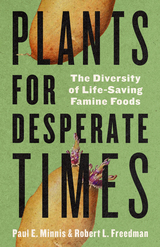 Plants for Desperate Times: The Diversity of Life-Saving Famine Foods
Paul E. Minnis and Robert L. Freedman
University of Arizona Press, 2024 Famines and other serious food shortages have been one of the scourges faced by humanity for millennia.
Plants for Desperate Times is an introduction to the diversity of plant foods that have saved millions of lives during lethal food shortages. While not a field guide, it addresses questions about what famine foods are and why they are important. The work highlights one hundred plants. Each entry includes the common and scientific names, botanical family, distribution, use as a famine food and other uses, and nutritional information. The species come from across the botanical kingdom, demonstrating the diversity of life-saving plants and the human ingenuity of making what might seem to be inedible plants edible. Unexpectedly, important famine foods include alternative uses of important crops as well as native plants.
Beyond a study of famine foods, the authors share why keeping an inventory of plant foods of last resort is so important. They help to build an understanding of little-known and underappreciated foods that may have a greater role in provisioning humanity in the future. As much as we may hope that severe food scarcity will never occur again, history suggests otherwise, and Plants for Desperate Times provides invaluable documentation of these vital foods.
Plants for Food and Medicine
Edited by H. D. V. Prendergast, N. L. Etkin, D. R. Harris, and P. J. Houghton
Royal Botanic Gardens, Kew, 2000 The proceedings of the Economic Botany and the International Society of Ethnopharmacology Conference, London, 1996, exploring the commercial and scientific potential of plants for the food, health and drug industries. It focuses on the current state of 'pharmafoods' - the coalescence of food plants in health and healing; ethnopharmacology; new drug development; biodiversity and conservation; and the value of wild plant resources.
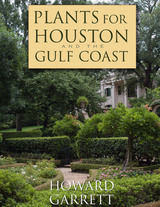 Plants for Houston and the Gulf Coast
By Howard Garrett
University of Texas Press, 2008 Whether you're a first-time homeowner, dedicated gardener, or landscape professional, if you're gardening on the Gulf Coast, you need Howard Garrett's Plants for Houston and the Gulf Coast. Garrett is one of Texas's top organic gardening experts, and gardeners rely on him for accurate, sensible advice about what to plant and how to maintain healthy yards and landscapes without synthetic fertilizers and toxic pesticides. In Plants for Houston and the Gulf Coast, Garrett presents nearly 400 plants, both native and adapted, that grow well in Southeast Texas. Like all of Howard Garrett's books, Plants for Houston and the Gulf Coast is loaded with indispensable gardening information: - Nearly 400 trees, shrubs, groundcovers and vines, annuals and perennials, and grasses
- 400 full-color, close-up photos of the plants
- Expert information about each plant's appearance, growing requirements, landscape uses, potential problems, and other interesting facts
- Precise, easy-to-follow instructions about how to design a garden, prepare the soil, install trees and other plants, grow grass and control weeds, and maintain the landscape and control pests
- A detailed gardening calendar for Southeast Texas that lists specific plants to plant and maintenance tasks to perform each month
No other book currently available provides such extensive and reliable information for Texas Gulf Coast gardeners.
 Plants for the Tropical Xeriscape: A Gardener's Guide
Fred D. Rauch and Paul R. Weissich
University of Hawaii Press, 2015 Gardeners who suppose that planning a water-saving garden means giving up brilliant color and the lush beauty of Hawai‘i’s tropicals are in for a surprise. Now Hawai‘i’s gardeners can save water through applying xeriscape techniques and have gardens filled with exceptional plants that are not only “less thirsty” but provide the garden with shade, color, and fragrance, as well as exotic foliage and blooms. In Plants for the Tropical Xeriscape, two of Hawai‘i’s foremost plant experts, Rauch and Weissich, guide both novice and experienced gardeners in choosing the perfect drought-tolerant plants for Hawai‘i’s gardens. In this extensive and lavishly illustrated guide to the selection of tropical landscape materials for xeriscape gardens, Rauch and Weissich provide landscape architects, garden designers, and home gardeners with the ultimate guide to the “less thirsty” landscape plant species which form the tropical xeriscape. Organized in accordance with their use in the landscape, each plant category, from ground covers to large trees, is then further listed alphabetically by genus and illustrated with beautiful photographs of a full range of moderate to strong drought-tolerant species. Logical and easy to use, this garden guide will be appreciated by all plant lovers from home gardeners to professional landscape designers. With over 1300 color illustrations, Plants for the Tropical Xeriscape is the go-to source for Hawai‘i’s gardeners as they design, plant, and maintain watersaving gardens.
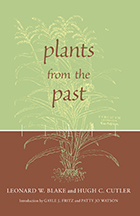 Plants from the Past: Works Of Leonard W. Blake & Hugh C. Cutler
Leonard W. Blake and Hugh C. Cutler; With an Introduction by Gayle J. Fritz and Patty Jo Watson
University of Alabama Press, 2001 Plants from the Past is a fascinating, comprehensive record of the work of two dedicated plant scientists who were instrumental in the establishment of archaeobotany and paleoethnobotany as vigorous subdisciplines within American archaeology. Hugh Carson Cutler and Leonard Watson Blake worked together for many decades at the Missouri Botanical Garden in St. Louis, identifying and interpreting plant remains from archaeological sites all over North America.
Covering a period of 30 years and tracing the development of the study of plant remains from archaeological sites, the volume will give archaeologists access to previously unavailable data and interpretations. It features the much-sought-after extensive inventory "Plants from Archaeological Sites East of the Rockies," which serves as a reference to archaeobotanical collections curated at the Illinois State Museum. The chapters dealing with protohistory and early historic foodways and trade in the upper Midwest are especially relevant at this time of increasing attention to early Indian-white interactions.
The editors' introduction provides coherence and historical context for the papers and points to the book's potential as a resource for future research. Graced by Dr. Blake's brief introductions to each chapter, Plants from the Past neatly compiles the earliest research in archaeobotany by two originators of the science.
The Plants of Jordan: An Annotated Checklist
Hatem Taifour and Ahmad El-Oqlah
Royal Botanic Gardens, Kew, 2017 This is the first comprehensive, up-to-date checklist of the vascular plants found in Jordan. The book covers 112 families and all species, including ferns and gymnosperms, that have been recorded for Jordan, with correct nomenclature and accepted names. Each species is cited with at least one specimen from the field. A collaboration between the Royal Botanic Garden of Jordan and the Royal Botanic Gardens, Kew, The Plants of Jordan is the work of experts from both institutions and will be the standard in the field for years to come.
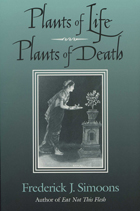 Plants of Life, Plants of Death
Frederick J. Simoons
University of Wisconsin Press, 1998
Pythagoras, the ancient Greek mathematician, did not himself eat fava beans in any form; in fact, he banned his followers from eating them. Cultural geographer Frederick Simoons disputes the contention that Pythagoras established that ban because he recognized the danger of favism, a disease that afflicts genetically-predisposed individuals who consume fava beans. Contradicting more deterministic explanations of history, Simoons argues that ritual considerations led to the Pythagorean ban.
In his fascinating and thorough new study, Simoons examines plants associated with ritual purity, fertility, prosperity, and life, on the one hand, or with ritual impurity, sickness, ill fate, and death, on the other. Plants of Life, Plants of Death offers a wealth of detail from not only history, ethnography, religious studies, classics, and folklore, but also from ethnobotany and medicine. Simoons surveys a vast geographical region extending from Europe through the Near East to India and China. He tells the story of India's giant sacred fig trees, the pipal and the banyan, and their changing role in ritual, religion, and as objects of pilgrimage from antiquity to the present day; the history of mandrake and ginseng, “man roots” whose uses from Europe to China have been shaped by the perception that they are human in form; and the story of garlic and onions as impure foods of bad odor in that same broad region.
Simoons also identifies and discusses physical characteristics of plants that have contributed to their contrasting ritual roles, and he emphasizes the point that the ritual roles of plants are also shaped by basic human concerns—desire for good health and prosperity, hopes for fertility and offspring, fear of violence, evil and death—that were as important in antiquity as they are today.
“It dazzles as a piece of scholarship.”—Daniel W. Gade, University of Vermont
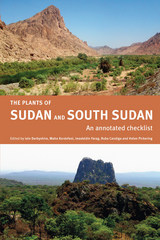 The Plants of Sudan and South Sudan: An Annotated Checklist
Edited by Iain Darbyshire, Maha Kordofani, Imadeldin Farag, Ruba Candiga, and Helen Pickering
Royal Botanic Gardens, Kew, 2014 From gummy bears to watercolors to fireworks, many everyday products contain traces of Sudanese plants. With more than four thousand diverse species of flora in the Republic of Sudan and the recently seceded Republic of South Sudan, they cover a vast area of tropical northeast Africa, from the hyper-arid desert in the north to the rainforest and extensive wetlands in the south.
The Plants of Sudan and South Sudan is the first comprehensive look at the plants of this region and includes nearly every known species. Each entry includes accepted scientific names, relevant synonymy, and brief habitat notes, as well as both global and regional distribution data. Also featured is a list of globally threatened plant species, their habitats, and their distribution within the region, which offers conservationists, land management agencies, and governmental departments key information on potential conservation priorities. This book will be the baseline reference for all future botanical and conservation work in the Sudan region.
Plants of the Petén Itza’ Maya: Plantas de los maya itza’ del Petén
Scott Atran, Ximena Lois and Edilberto Ucan Ek'
University of Michigan Press, 2004 The Itza’ Maya of the Petén in Guatemala preside over a unique rainforest biosphere in danger of disappearing. Equally at risk is their own botanical knowledge, from taxonomy to medicinal uses. This volume contains a history of the Petén Itza’ Maya; explanation of Itza’ taxonomy; tables and keys to plant usage; common names in English, Spanish, and several indigenous languages; and much more.
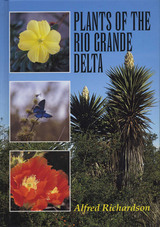 Plants of the Rio Grande Delta
By Alfred Richardson
University of Texas Press, 1995 The Rio Grande Delta is fabulously rich in wildflowers and other plant life. Lying in the geographically and environmentally diverse region common to southern Texas and northern Mexico, it supports plants that also grow in Central America and throughout Mexico, the Gulf Coastal plains, the South Texas Plains, and the Chihuahuan Desert. Plants of the Rio Grande Delta provides an accessible and reliable identification guide to all of the plants, excluding grasses, of the region—some 823 species. In clear, nontechnical language, Alfred Richardson gives a brief description of each species, along with its range, habitat, and general blooming time. Over two hundred superb color photographs offer quick and easy field identification, while line drawings illustrate notable characteristics of the plants. This volume expands and updates Alfred Richardson's previous book, Plants of Southernmost Texas, published in 1990 by the Gorgas Science Foundation. It will be an essential field guide for everyone interested in South Texas flora, from winter visitors and Valley residents to professional botanists.
Plants of the World
Maarten J. M. Christenhusz, Michael F. Fay, and Mark W. Chase
Royal Botanic Gardens, Kew, 2017 Plants of the World is the first book to systematically explore every vascular plant family on earth—more than four hundred and fifty of them—organized in a modern phylogenetic order. Detailed entries for each family include descriptions, distribution, evolutionary relationships, and fascinating information on economic uses of plants and etymology of their names. All entries are also copiously illustrated in full color with more than 2,500 stunning photographs. A collaboration among three celebrated botanists at the Royal Botanic Gardens, Kew, Plants of the World is authoritative, comprehensive, and beautiful. Covering everything from ferns to angiosperms, it will be an essential resource for practicing botanists, horticulturists, and nascent green thumbs alike.
Plants of the World: An Illustrated Encyclopedia of Vascular Plants
Maarten J. M. Christenhusz, Michael F. Fay, and Mark W. Chase
University of Chicago Press, 2017 Plants of the World is the first book to systematically explore every vascular plant family on earth—more than four hundred and fifty of them—organized in a modern phylogenetic order. Detailed entries for each family include descriptions, distribution, evolutionary relationships, and fascinating information on economic uses of plants and etymology of their names. All entries are also copiously illustrated in full color with more than 2,500 stunning photographs. A collaboration among three celebrated botanists at the Royal Botanic Gardens, Kew, Plants of the World is authoritative, comprehensive, and beautiful. Covering everything from ferns to angiosperms, it will be an essential resource for practicing botanists, horticulturists, and nascent green thumbs alike.
 The Plants That Shaped Our Gardens
David Stuart
Harvard University Press, 2002 Inspiration, happy accidents, and outright obsessions have all had their way with gardens—but nothing has done more to shape the modern garden than plants themselves. In a story that ranges from continent to continent and spans four centuries, botanist and gardener David Stuart reveals how the garden as we know it was created not by garden designers but by ordinary gardeners responding to exotic and novel plants that suggested new spaces, places, and means of display. The history begins with two earth-changing events—the establishment of colonies in the Americas and the spread of the Turkish empire. Both brought the first astonishing wave of flowering exotics to gardens across Europe. Stuart relates how, over the following centuries, the influx of new plants inspired a frenzy of hybridization (at first by a new breed of gardener, the “florist,” later by nurserymen), which in turn led to such features as the familiar herbaceous border, flower bed, and rose garden, as well as the now little-known rockery, shrubbery, and “wilderness.”
From the Dutch tulip mania, the eighteenth-century European passion for “American gardens,” and on to the rhododendron craze of the nineteenth century, Stuart’s book traces the shape of the modern garden as it changed with the fashion, returning at last to classic, cottage garden varieties long neglected in favor of the foreign and new. In conclusion, Stuart looks at plant prospecting today—now that the collecting of plants may prove essential to protecting botanical diversity and preserving plant species rapidly disappearing from the wild.
Plants That We Eat: Nauriat Nigiñaqtaut - From the traditional wisdom of the Iñupiat Elders of Northwest Alaska
Anore Jones
University of Alaska Press, 2010 Plants That We Eat is a handy, easy-to-use guide to the abundant edible plant life of Alaska. Drawing on centuries of knowledge that have kept the Inupiat people healthy, the book uses photographs and descriptions to teach newcomers to the north how to recognize which plants are safe to eat. Organized by seasons, from spring greens through summer berries to autumn roots, the book also features an appendix identifying poisonous plants.
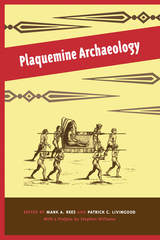 Plaquemine Archaeology
Edited by Mark A. Rees and Patrick Livingood, with a preface by Stephen Williams
University of Alabama Press, 2006 First major work to deal solely with the Plaquemine societies.
Plaquemine, Louisiana, about 10 miles south of Baton Rouge on the banks of the Mississippi River, seems an unassuming southern community for which to designate an entire culture. Archaeological research conducted in the region between 1938 and 1941, however, revealed distinctive cultural materials that provided the basis for distinguishing a unique cultural manifestation in the Lower Mississippi Valley. Plaquemine was first cited in the archaeological literature by James Ford and Gordon Willey in their 1941 synthesis of eastern U.S. prehistory.
Lower Valley researchers have subsequently grappled with where to place this culture in the local chronology based on its ceramics, earthen mounds, and habitations. Plaquemine cultural materials share some characteristics with other local cultures but differ significantly from Coles Creek and Mississippian
cultures of the Southeast. Plaquemine has consequently received the dubious distinction of being defined by the characteristics it lacks, rather than by those it possesses.
The current volume brings together eleven leading scholars devoted to shedding new light on Plaquemine and providing a clearer understanding of its relationship to other Native American cultures. The authors provide a thorough yet focused review of previous research, recent revelations, and directions for future research. They present pertinent new data on cultural variability and connections in the Lower Mississippi Valley and interpret the implications for similar cultures and cultural relationships. This volume finally places Plaquemine on the map, incontrovertibly demonstrating the accomplishments and importance of Plaquemine peoples in the long history of native North America.
Plash & Levitation
Adam Tavel
University of Alaska Press, 2015 Plash & Levitation delves into the chaotic sublime of fatherhood, the candid revelations of youth, and the lingering consequences of history. Adam Tavel’s revealing and imaginative poems are joined by fictional monologues from historical figures and cultural icons, juxtaposing personal history with our shared one. Civil War general William Tecumseh Sherman and rock legend Keith Moon are joined by musings from the Redskins logo and the Wolfman. Together they create a lively chorus that clashes and soars. The result is forty-two fascinating pieces that are witty, consistently musical, and undeniably powerful—the perfect inaugural selection for the Permafrost Book Prize.
Plasma
Bradley Paul
University of Pittsburgh Press, 2018 The poems in Plasma, Bradley Paul’s third book, use common objects, animals, people, and experiences as starting points to consider one’s connectivity to the world. Riddles and obituaries alternate with rants and memories of things that never existed or that the speaker has never seen – or that he has, and struggles to remember. The title is inspired by all our conceptions of plasma: an infinitely conductive state of matter in which the many disparate parts act collectively to create a single, ever-shifting whole. The part of the blood that communicates and provides. The ethereal medium by which we watch thousands of electronic images, sounds, and stories.
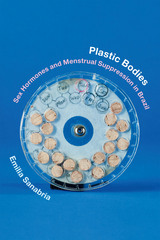 Plastic Bodies: Sex Hormones and Menstrual Suppression in Brazil
Emilia Sanabria
Duke University Press, 2016 In Plastic Bodies Emilia Sanabria examines how sex hormones are enrolled to create, mold, and discipline social relations and subjectivities. She shows how hormones have become central to contemporary understandings of the body, class, gender, sex, personhood, modernity, and Brazilian national identity. Through interviews with women and doctors; observations in clinics, research centers and pharmacies; and analyses of contraceptive marketing, Sanabria traces the genealogy of menstrual suppression, from its use in population control strategies in the global South to its remarketing as a practice of pharmaceutical self-enhancement couched in neoliberal notions of choice. She links the widespread practice of menstrual suppression and other related elective medical interventions to Bahian views of the body as a malleable object that requires constant work. Given this bodily plasticity, and its potentially limitless character, the book considers ways to assess the values attributed to bodily interventions. Plastic Bodies will be of interest to all those working in medical anthropology, gender studies, and sexual and reproductive health.
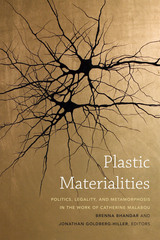 Plastic Materialities: Politics, Legality, and Metamorphosis in the Work of Catherine Malabou
Brenna Bhandar and Jonathan Goldberg-Hiller, editors
Duke University Press, 2015 Catherine Malabou's concept of plasticity has influenced and inspired scholars from across disciplines. The contributors to Plastic Materialities—whose fields include political philosophy, critical legal studies, social theory, literature, and philosophy—use Malabou's innovative combination of post-structuralism and neuroscience to evaluate the political implications of her work. They address, among other things, subjectivity, science, war, the malleability of sexuality, neoliberalism and economic theory, indigenous and racial politics, and the relationship between the human and non-human. Plastic Materialities also includes three essays by Malabou and an interview with her, all of which bring her work into conversation with issues of sovereignty, justice, and social order for the first time.
Contributors. Brenna Bhandar, Silvana Carotenuto, Jonathan Goldberg-Hiller, Jairus Victor Grove, Catherine Kellogg, Catherine Malabou, Renisa Mawani, Fred Moten, Alain Pottage, Michael J. Shapiro, Alberto Toscano
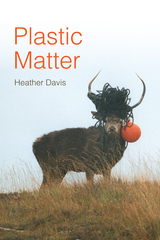 Plastic Matter
Heather Davis
Duke University Press, 2022 Plastic is ubiquitous. It is in the Arctic, in the depths of the Mariana Trench, and in the high mountaintops of the Pyrenees. It is in the air we breathe and the water we drink. Nanoplastics penetrate our cell walls. Plastic is not just any material—it is emblematic of life in the twentieth and twenty-first centuries. In Plastic Matter Heather Davis traces plastic’s relations to geology, media, biology, and race to show how matter itself has come to be understood as pliable, disposable, and consumable. The invention and widespread use of plastic, Davis contends, reveals the dominance of the Western orientation to matter and its assumption that matter exists to be endlessly manipulated and controlled by humans. Plastic’s materiality and pliability reinforces these expectations of what matter should be and do. Davis charts these relations to matter by mapping the queer multispecies relationships between humans and plastic-eating bacteria and analyzing photography that documents the racialized environmental violence of plastic production. In so doing, Davis provokes readers to reexamine their relationships to matter and life in light of plastic’s saturation.
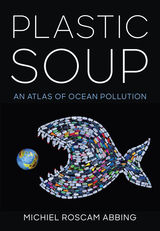 Plastic Soup: An Atlas of Ocean Pollution
Michiel Roscam Abbing
Island Press, 2019 Plastics have transformed every aspect of our lives. Yet the very properties that make them attractive—they are cheap to make, light, and durable—spell disaster when trash makes its way into the environment. Plastic Soup: An Atlas of Ocean Pollution is a beautifully-illustrated survey of the plastics clogging our seas, their impacts on wildlife and people around the world, and inspirational initiatives designed to tackle the problem.
In Plastic Soup, Michiel Roscam Abbing of the Plastic Soup Foundation reveals the scope of the issue: plastic trash now lurks on every corner of the planet. With striking photography and graphics, Plastic Soup brings this challenge to brilliant life for readers. Yet it also sends a message of hope; although the scale of the problem is massive, so is the dedication of activists working to check it. Plastic Soup highlights a diverse array of projects to curb plastic waste and raise awareness, from plastic-free grocery stores to innovative laws and art installations.
According to some estimates, if we continue on our current path, the oceans will contain more plastic than fish by the year 2050. Created to inform and inspire readers, Plastic Soup is a critical tool in the fight to reverse this trend.
 Plasticity in the Life Sciences
Antonine Nicoglou
University of Chicago Press, 2024 Analyzes the reasons why biologists have referred to and continue to refer to plasticity.
Plasticity has become an important topic in biology, with some even wondering if it has now acquired the theoretical importance in biology that the concept of the gene enjoyed at the beginning of the last century. In this historical and epistemological study, philosopher Antonine Nicoglou shows how the recurrence of the general idea of plasticity—throughout the history of the life sciences—indicates its essential role in the way we think about life processes. Although plasticity has become a key element in new evolutionary thinking, she argues, its role in contemporary biology is also not insignificant. Rather, as mobilized in contemporary biology, plasticity most often seeks to account for the specific nature of living systems.
The book is divided into two parts. The first takes up the history of plasticity from Aristotle to contemporary biology; the second part offers an original way of distinguishing between different phenomena described by “plasticity.” In the process, the author explores what has led some biologists to speak of plasticity as a way of overcoming genetic determinism.
Plastics: America's Packaging Dilemma
Nancy Wolf and Ellen Feldman
Island Press, 1991 Plastics explains what plastics are, how they are made, how they are used, and the problems and opportunities they bring.
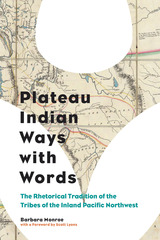 Plateau Indian Ways with Words: The Rhetorical Tradition of the Tribes of the Inland Pacific Northwest
Barbara Monroe
University of Pittsburgh Press, 2014 In Plateau IndianWays with Words, Barbara Monroe makes visible the arts of persuasion of the Plateau Indians, whose ancestral grounds stretch from the Cascades to the Rockies, revealing a chain of cultural identification that predates the colonial period and continues to this day. Culling from hundreds of student writings from grades 7-12 in two reservation schools, Monroe finds that students employ the same persuasive techniques as their forebears, as evidenced in dozens of post-conquest speech transcriptions and historical writings. These persuasive strategies have survived not just across generations, but also across languages from Indian to English and across multiple genres from telegrams and Supreme Court briefs to school essays and hip hop lyrics.
Anecdotal evidence, often dramatically recreated; sarcasm and humor; suspended or unstated thesis; suspenseful arrangement; intimacy with and respect for one’s audience as co-authors of meaning—these are among the privileged markers in this particular indigenous rhetorical tradition. Such strategies of personalization, as Monroe terms them, run exactly counter to Euro-American academic standards that value secondary, distant sources; “objective” evidence; explicit theses; “logical” arrangement. Not surprisingly, scores for Native students on mandated tests are among the lowest in the nation.
While Monroe questions the construction of this so-called achievement gap on multiple levels, she argues that educators serving Native students need to seek out points of cultural congruence, selecting assignments and assessments where culturally marked norms converge, rather than collide. New media have opened up many possibilities for this kind of communicative inclusivity. But seizing such opportunities is predicated on educators, first, recognizing Plateau Indian students’ distinctive rhetoric, and then honoring their sovereign right to use it. This book provides that first step.
Platero and I
By Juan Ramón Jiménez
University of Texas Press, 1957 This lyric portrait of life—and the little donkey, Platero—in a remote Andalusian village is the masterpiece of Juan Ramón Jiménez, the Spanish poet awarded the 1956 Nobel Prize for Literature.
The Platform Company: The Art of Resilient Strategy: A Guide for Leaders Inspired by Nature's Competition
Jan-Jacob Koomen
Amsterdam University Press, 2023 The Platform Company will help you tackle your organization's key strategic challenges with out-of-the box concepts based on solid principles from game theory and ecology. Building blocks are introduced in an easy-to-read story of an executive on safari and translated into practical steps and methods. The book addresses the key challenges confronting any organization, such as branding, sales channels, innovation, supply chain, strategy formation, leadership, and purpose.
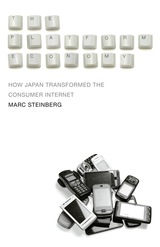 The Platform Economy: How Japan Transformed the Consumer Internet
Marc Steinberg
University of Minnesota Press, 2019 Offering a deeper understanding of today’s internet media and the management theory behind it Platforms are everywhere. From social media to chat, streaming, credit cards, and even bookstores, it seems like almost everything can be described as a platform. In The Platform Economy, Marc Steinberg argues that the “platformization” of capitalism has transformed everything, and it is imperative that we have a historically precise, robust understanding of this widespread concept. Taking Japan as the key site for global platformization, Steinberg delves into that nation’s unique technological and managerial trajectory, in the process systematically examining every facet of the elusive word platform. Among the untold stories revealed here is that of the 1999 iPhone precursor, the i-mode: the world’s first widespread mobile internet platform, which became a blueprint for Apple and Google’s later dominance of the mobile market. Steinberg also charts the rise of social gaming giants GREE and Mobage, chat tools KakaoTalk, WeChat, and LINE, and video streaming site Niconico Video, as well as the development of platform theory in Japan, as part of a wider transformation of managerial theory to account for platforms as mediators of cultural life. Analyzing platforms’ immense impact on contemporary media such as video streaming, music, and gaming, The Platform Economy fills in neglected parts of the platform story. In narrating the rise and fall of Japanese platforms, and the enduring legacy of Japanese platform theory, this book sheds light on contemporary tech titans like Facebook, Google, Apple, and Netflix, and their platform-mediated transformation of contemporary life—it is essential reading for anyone wanting to understand what capitalism is today and where it is headed.
Platform Socialism: How to Reclaim our Digital Future from Big Tech
James Muldoon
Pluto Press, 2022 Whoever controls the platforms, controls the future. Platform Socialism sets out an alternative vision and concrete proposals for a digital economy that expands our freedom.
Powerful tech companies now own the digital infrastructure of twenty-first century social life. Masquerading as global community builders, these companies have developed sophisticated new techniques for extracting wealth from their users.
James Muldoon shows how grassroots communities and transnational social movements can take back control from Big Tech. He reframes the technology debate and proposes a host of new ideas, from the local to the international, for how we can reclaim the emancipatory possibilities of digital platforms. Drawing on sources from forgotten histories to contemporary prototypes, he proposes an alternative system and charts a roadmap for how we can get there.
The Platformisation of Consumer Culture: A Digital Methods Guide
Alessandro Caliandro
Amsterdam University Press, 2024 This book offers a unique methodological guide for social and marketing scholars interested in understanding and using digital methods to explore the processes of platformisation of consumer culture unfolding on digital media. The book introduces the reader to key digital methods concepts, strategies, and techniques through a set of ad hoc case studies focused on the most prominent digital platforms (such as Facebook, Spotify, or TripAdvisor) as well as emerging trends in digital consumer culture (such as, the consumption of nostalgia, the radicalisation of taste, or ephemeral consumption).
The Plath Cabinet
Catherine Bowman
Four Way Books, 2009 Part homage, part exploration, The Plath Cabinet offers a new window onto Sylvia Plath’s world, from her hand-made dolls and her passport to a preserved lock of her hair. The Plath Cabinet is not simply an unparalleled biography: it is a memoir in poems, telling the story of Bowman’s relationship to Plath and to poetry. The Plath Cabinet is a must-read for Plath-lovers, for anyone interested in memoir and biography, and for all readers of contemporary poetry.
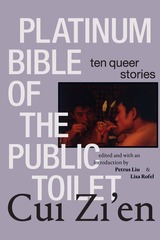 Platinum Bible of the Public Toilet: Ten Queer Stories
Cui Zi'en. Edited and with an introduction by Petrus Liu and Lisa Rofel
Duke University Press, 2024 Platinum Bible of the Public Toilet is the first English-language collection of short stories by Cui Zi’en, China’s most famous and controversial queer filmmaker, writer, scholar, and LGBTQ rights activist. Drawing on his own experiences growing up in socialist and postsocialist China, Cui presents ten queer coming-of-age stories of young boys and men as they explore their sexuality and desires. From a surreal fairytale depicting a ragtag crew of neighborhood boys in the throes of sexual awakening to a chronicle of the gender-bending and homoerotic entanglements of university students to romantic love triangle erotica to a story that examines teacher-student love and the norms of sex and age, Cui centers queer sexuality as a core part of human experience. Richly imaginative and vividly written, Platinum Bible of the Public Toilet portrays the emergence of queer cultures in postsocialist China while foregrounding the commitments to one’s erotic and passionate attractions even as they lead to cultural transgressions. This volume includes a preface by and an interview with the author.
Plato
Eric Voegelin
University of Missouri Press, 2000 Once again available in paperback, Plato is the first half of Eric Voegelin's Plato and Aristotle, the third volume of his five-volume Order and History, which has been hailed throughout the Western world as a monumental accomplishment of modern scholarship.
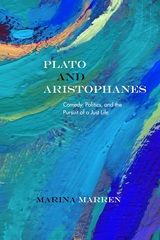 Plato and Aristophanes: Comedy, Politics, and the Pursuit of a Just Life
Marina Marren
Northwestern University Press, 2022 In Plato and Aristophanes, Marina Marren contends that our search for communal justice must start with self-examination. The realization that there are things that we cannot know about ourselves unless we become the subject of a joke is integral to such self-scrutiny. Jokes provide a new perspective on our politics and ethics; they are essential to our civic self-awareness.
Marren makes this case by delving into Plato’s Republic, a foundational work of political philosophy. While the Republic straightforwardly condemns the decadence and greed of a tyrant, Plato’s attack on political idealism is both solemn and comedic. In fact, Plato draws on the same comedic stock and tropes as do Aristophanes’s plays. Marren’s book strikes up an innovative conversation between three works by Aristophanes—Assembly Women, Knights, and Birds—and Plato’s philosophy, prompting important questions about individual convictions and one’s personal search for justice. These dialogic works offer critiques of tyranny that are by turns brilliant, scathing, and exuberant, making light of faults and ideals alike. Philosophical comedy exposes despotism in individuals as well as systems of government claiming to be just and good. This critique holds as much bite against contemporary injustices as it did at the time of Aristophanes and Plato.
An ingenious new work by an emerging scholar, Plato and Aristophanes shows that comedy—in tandem with philosophy and politics—is essential to self-examination. And without such examination, there is no hope for a just life.
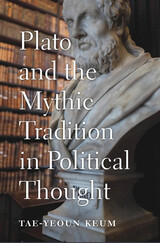 Plato and the Mythic Tradition in Political Thought
Tae-Yeoun Keum
Harvard University Press, 2020 Winner of the Gustave O. Arlt Award in the Humanities
Winner of the Istvan Hont Book Prize
An ambitious reinterpretation and defense of Plato’s basic enterprise and influence, arguing that the power of his myths was central to the founding of philosophical rationalism.
Plato’s use of myths—the Myth of Metals, the Myth of Er—sits uneasily with his canonical reputation as the inventor of rational philosophy. Since the Enlightenment, interpreters like Hegel have sought to resolve this tension by treating Plato’s myths as mere regrettable embellishments, irrelevant to his main enterprise. Others, such as Karl Popper, have railed against the deceptive power of myth, concluding that a tradition built on Platonic foundations can be neither rational nor desirable.
Tae-Yeoun Keum challenges the premise underlying both of these positions. She argues that myth is neither irrelevant nor inimical to the ideal of rational progress. She tracks the influence of Plato’s dialogues through the early modern period and on to the twentieth century, showing how pivotal figures in the history of political thought—More, Bacon, Leibniz, the German Idealists, Cassirer, and others—have been inspired by Plato’s mythmaking. She finds that Plato’s followers perennially raised the possibility that there is a vital role for myth in rational political thinking.
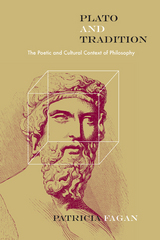 Plato and Tradition: The Poetic and Cultural Context of Philosophy
Patricia Fagan
Northwestern University Press, 2013 Plato’s dialogues are some of the most widely read texts in Western philosophy, and one would imagine them fully mined for elemental material. Yet, in Plato and Tradition, Patricia Fagan reveals the dialogues to be continuing sources of fresh insight. She recovers from them an underappreciated depth of cultural reference that is crucial to understanding their central philosophical concerns. Through careful readings of six dialogues, Fagan demonstrates that Plato’s presentation of Socrates highlights the centrality of tradition in political, erotic, and philosophic life. Plato embeds Socrates’s arguments and ideas in traditional references that would have been familiar to contemporaries of Socrates or Plato but that today’s reader typically passes over. Fagan’s book unpacks this cultural and literary context for the proper and full understanding of the philosophical argument of the Platonic dialogues. She concludes that, as Socrates demonstrates in word and deed, tradition is essential to successful living. But we must take up tradition with a critical openness to questioning its significance and future. Her original and compelling analyses may change the views of many readers who think themselves already well versed in the dialogues.
|
|

